
SEASON
TheConrad.org · 858.459.3728 1
MARCH–APRIL 14 Āhuti: Nrityagram & Chitrasena 2023—2024 Home of La Jolla Music Society THE CONRAD
OCTOBER
ISATA KANNEH-MASON, piano
SATURDAY, OCTOBER 7, 2023 • 7:30 PM
Piano Series
THIBAUDET/BATIASHVILI/CAPUÇON TRIO*
FRIDAY, OCTOBER 13, 2023 • 7:30 PM
Revelle Chamber Music Series
MARIACHI HERENCIA DE MÉXICO & MARISOL
“LA MARISOUL” HERNÁNDEZ*
SUNDAY, OCTOBER 15, 2023 • 3 PM
Global Roots Series
SPECIAL EVENT: LILA DOWNS
DOS CORAZONES
SUNDAY, OCTOBER 22, 2023 • 7 PM
Balboa Theatre
BANDA MAGDA*
FRIDAY, OCTOBER 27, 2023 • 6 PM & 8:30 PM
Concerts @ The JAI
NOVEMBER
TURN IT OUT W/ TILER PECK & FRIENDS*
WEDNESDAY, NOVEMBER 1, 2023 • 7:30 PM
Dance Series
Civic Theatre
SILKROAD ENSEMBLE WITH RHIANNON GIDDENS*
AMERICAN RAILROAD
FRIDAY, NOVEMBER 10, 2023 • 7:30 PM
Global Roots Series
Balboa Theatre
SPECIAL FAMILY EVENT: COCO LIVE-TO-FILM CONCERT*
SATURDAY, NOVEMBER 11, 2023 • 3:30 PM & 7:30 PM
ALISA WEILERSTEIN
FRAGMENTS 2
THURSDAY, NOVEMBER 16, 2023 • 7:30 PM
ProtoStar Innovative Series
Co-produced by the San Diego Symphony
MAO FUJITA*, piano
SUNDAY, NOVEMBER 19, 2023 • 3 PM
Discovery Series
FLOR DE TOLOACHE*
THURSDAY, NOVEMBER 30, 2023 • 6 PM & 8:30 PM
Concerts @ The JAI
DECEMBER
MICHELE CAFAGGI — THE MAGIC OF BUBBLES*
SATURDAY, DECEMBER 2, 2023 • 10 AM & 11:30 AM
ConRAD Kids Series
The JAI
SEONG-JIN CHO, piano
SUNDAY, DECEMBER 3, 2023 • 3 PM
Piano Series
DAVINA AND THE VAGABONDS HOLIDAY SHOW
WEDNESDAY, DECEMBER 6, 2023 • 6 PM & 8:30 PM
Concerts @ The JAI
MATTHEW WHITAKER QUARTET*
SUNDAY, DECEMBER 10, 2023 • 5 PM & 7:30 PM
Concerts @ The JAI
JANUARY
SEAN MASON QUARTET*
SUNDAY, JANUARY 14, 2024 • 5 PM & 7:30 PM
Concerts @ The JAI
PETER HILLARY*
70 Years of Everest
THURSDAY, JANUARY 18, 2024 • 7:30 PM
Speaker Series
TATIANA EVA-MARIE & AVALON JAZZ BAND*
FRIDAY, JANUARY 19, 2024 • 6 PM & 8:30 PM
Concerts @ The JAI
TONY SIQI YUN*, piano
SUNDAY, JANUARY 21, 2024 • 3 PM
Discovery Series
LUCAS & ARTHUR JUSSEN*, pianos
THURSDAY, JANUARY 25, 2024 • 7:30 PM Piano Series
LAKECIA BENJAMIN AND PHOENIX
SUNDAY, JANUARY 28, 2024 • 5 PM & 7:30 PM
Concerts @ The JAI
FEBRUARY
LES BALLETS TROCKADERO DE MONTE CARLO*
50TH ANNIVERSARY
FRIDAY, FEBRUARY 2, 2024 • 7:30 PM Dance Series
Balboa Theatre
BALOURDET QUARTET
SUNDAY, FEBRUARY 4, 2024 • 3 PM
Discovery Series
BLUE NOTE 85TH ANNIVERSARY TOUR*
SATURDAY, FEBRUARY 10, 2024 • 7:30 PM
Jazz Series

CONNECT TO THE CONRAD
RENÉE FLEMING*, soprano & INON BARNATAN, piano ARTIST-IN-RESIDENCE
WEDNESDAY, FEBRUARY 14, 2024 • 8 PM
Recital Series
CLARICE & SÉRGIO ASSAD*
FRIDAY, FEBRUARY 16, 2024 · 6 PM & 8:30 PM
Concerts @ The JAI
MIRÓ QUARTET
SATURDAY, FEBRUARY 17, 2024 • 7:30 PM
Revelle Chamber Music Series
AMBROSE AKINMUSIRE TRIO*
FRIDAY, FEBRUARY 23, 2024 • 6 PM & 8:30 PM
Concerts @ The JAI
ANDY MANN*
Making Waves: Summit to Sea
THURSDAY, FEBRUARY 29, 2024 • 7:30 PM
Speaker Series
MARCH
LAWRENCE BROWNLEE*, tenor
SATURDAY, MARCH 2, 2024 • 7:30 PM
Recital Series
Co-produced by San Diego Opera
2 THE CONRAD | HOME OF LA JOLLA MUSIC SOCIETY · 2023-24 SEASON
WINTERFEST
Gala
MARIA IOUDENITCH*, violin & KENNETH BROBERG*, piano
SUNDAY, MARCH 3, 2024 • 3 PM
Discovery Series
KRONOS FIVE DECADES EVENT
KRONOS QUARTET AND SAM GREEN: A THOUSAND THOUGHTS
FRIDAY, MARCH 8, 2024 • 7:30 PM
ProtoStar Innovative Series
KINGS RETURN
SATURDAY, MARCH 9, 2024 • 6 PM & 8:30 PM
Concerts @ The JAI
MEOW MEOW*
SUNDAY, MARCH 10, 2024 • 5 PM & 7:30 PM
Concerts @ The JAI
AN EVENING WITH BRANFORD MARSALIS
THURSDAY, MARCH 14, 2024 • 7:30 PM
Jazz Series
ALPHABET ROCKERS*
SATURDAY, MARCH 16, 2024 • 3 PM
ConRAD Kids Series
ĀHUTI: NRITYAGRAM* & CHITRASENA*
WEDNESDAY, MARCH 20, 2024 • 7:30 PM
THURSDAY, MARCH 21, 2024 • 7:30 PM
Dance Series
LADYSMITH BLACK MAMBAZO
FRIDAY, MARCH 22, 2024 • 7:30 PM
Global Roots Series
RAY CHEN, violin & JULIO ELIZALDE*, piano
THURSDAY, MARCH 28, 2024 • 7:30 PM
Recital Series
APRIL
JAKUB JÓZEF ORLIŃSKI* WITH IL POMO D’ORO
BEYOND
SUNDAY, APRIL 7, 2024 • 3 PM
Revelle Chamber Music Series
QUATUOR ÉBÈNE*
FRIDAY, APRIL 12, 2024 • 7:30 PM
Revelle Chamber Music Series
MANCHESTER COLLECTIVE
FEATURING ABEL SELAOCOE AND CHESABA
SUNDAY, APRIL 14, 2024 • 7 PM
ProtoStar Innovative Series
JAZZ PIANO MINI FESTIVAL
HERBIE HANCOCK
THURSDAY, APRIL 18, 2024 • 7:30 PM
Jazz Series
Balboa Theatre
DAYRAMIR GONZÁLEZ* & HABANA enTRANCé*
FRIDAY, APRIL 19, 2024 • 6 PM & 8:30 PM
Concerts @ The JAI
HIROMI’S SONICWONDER*
SATURDAY, APRIL 20, 2024 • 7:30 PM
Jazz Series
HIROMI: THE PIANO QUINTET
FEATURING PUBLIQUARTET*
SUNDAY, APRIL 21, 2024 • 3 PM
ProtoStar Innovative Series
YEFIM BRONFMAN, piano
FRIDAY, APRIL 26, 2024 • 7:30 PM
Piano Series
MAY
KAKI KING*
SATURDAY, MAY 4, 2024 • 10 AM & 11:30 AM
ConRAD Kids Series
The JAI
JUNCTION TRIO
CONRAD TAO, piano; STEFAN JACKIW, violin; JAY CAMPBELL, cello
SUNDAY, MAY 5, 2024 • 3 PM
Revelle Chamber Music Series
COMMUNITY ARTS OPEN HOUSE
SATURDAY, MAY 11, 2024 • 1 PM
Free Community Event
The Conrad
BALLETS JAZZ MONTRÉAL*
DANCE ME
WEDNESDAY, MAY 15, 2024 • 7:30 PM
Dance Series
Civic Theatre
PABLO FERRÁNDEZ*, cello
THURSDAY, MAY 16, 2024 • 7:30 PM
Recital Series
CHARLES McPHERSON & FRIENDS
Featuring John Beasley and The Next Generation*
SATURDAY, MAY 18, 2024 • 6 PM & 8:30 PM
Concerts @ The JAI
JIJI*, guitar
SUNDAY, MAY 19, 2024 • 3 PM
Discovery Series
TERRY VIRTS*
How to Astronaut
THURSDAY, MAY 23, 2024 • 7:30 PM
Speaker Series
BRUCE LIU*, piano
FRIDAY, MAY 31, 2024 • 7:30 PM
Piano Series
JUNE
LARRY & JOE*
SATURDAY, JUNE 1, 2024 • 6 PM & 8:30 PM
Concerts @ The JAI
CHRIS THILE
FRIDAY, JUNE 7, 2024 • 7:30 PM
Global Series
THE CH ARLES McPHERSON QUINTET*
SUNDAY, JUNE 9, 2024 • 5 PM & 7:30 PM
Concerts @ The JAI
*LJMS debut
TheConrad.org · 858.459.3728 3
and
Dates, times, programs, artists,
venues are subject to change. All events take place in The Baker-Baum Concert Hall unless noted.


4 THE CONRAD | HOME OF LA JOLLA MUSIC SOCIETY · 2023-24 SEASON FLOWERCHILDSANDIEGO.COM
Elegant Dining, Exceptional Moments

Thoughtfully Prepared by Executive Chef Kelli Crosson
For reservations, call (858) 777-6635
TheConrad.org · 858.459.3728 5
6 THE CONRAD | HOME OF LA JOLLA MUSIC SOCIETY · 2023-24 SEASON WE ARE CALIFORNIA’S BUSINESS BANC. Proud Partner and the Official Bank of LA JOLLA MUSIC SOCIETY Every day, business owners, entrepreneurs, executives and community leaders are being empowered by Banc of California to reach their dreams and strengthen our economy. With more than $10 billion in assets and over 30 banking locations throughout the state, we are large enough to meet your banking needs, yet small enough to serve you well. Learn more about how we’re empowering California through its diverse businesses, entrepreneurs and communities at bancofcal.com © 2019 Banc of California, N.A. All rights reserved. TOGETHER WE WINTM

TheConrad.org · 858.459.3728 7
Truxtun Rd, San Diego CA, 92106 (619) 566- 0069 Liberty Station 7611 Fay Ave, La Jolla CA, 92037 (858) 777- 0069
Jolla
2620
La

8 THE CONRAD | HOME OF LA JOLLA MUSIC SOCIETY · 2023-24 SEASON

TheConrad.org · 858.459.3728 9


10 THE CONRAD | HOME OF LA JOLLA MUSIC SOCIETY · 2023-24 SEASON 7550 FAY AVENUE, LA JOLLA, CA 92037 | 858 454-5013 LUNCH | DINNER | HAPPY HOUR SATURDAY & SUNDAY BRUNCH Proud partner in support of The Conrad Prebys Performing Arts Center A one minute walk from THE CONRAD berninisbistro.com
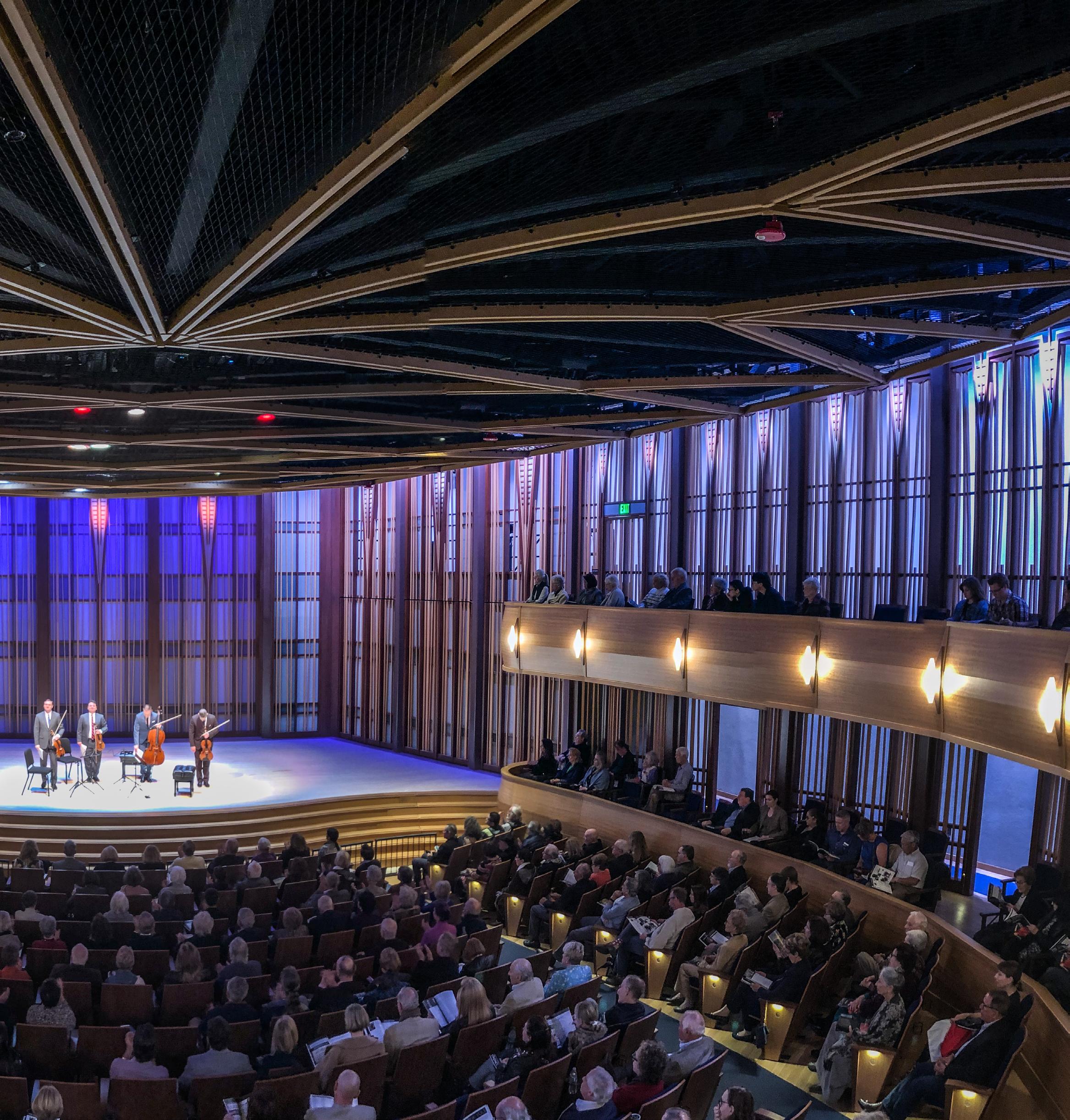
TheConrad.org · 858.459.3728 11 TABLE OF CONTENTS CALENDAR OF EVENTS 2 TRANSFORMATIVE SUPPORT 12 BOARD & STAFF OF LA JOLLA MUSIC SOCIETY 15 LAWRENCE BROWNLEE 17 MARIA IOUDENITCH 27 KRONOS QUARTET & SAM GREEN 31 AN EVENING WITH BRANFORD MARSALIS 35 ĀHUTI: NRITYAGRAM & CHITRASENA 36 LADYSMITH BLACK MAMBAZO 40 RAY CHEN 41 JAKUB J Ó ZEF ORLI Ń SKI & IL POMO D’ORO 45 QUATUOR ÉBÈNE 51 MANCHESTER COLLECTIVE FEATURING ABEL SELAOCOE AND CHESABA 54 ARTIST PROFILES 55 T HANK YOU FOR YOUR SUPPORT | DONOR LISTINGS 61
Our gratitude to these Medallion Society Pillars founding members who have made significant four-year commitments that will help us better serve all of the San Diego region. The Conrad can be a catalyst to bring thousands of adults and children together through a common appreciation of the performing arts, which enhance the artistic fabric of our community.
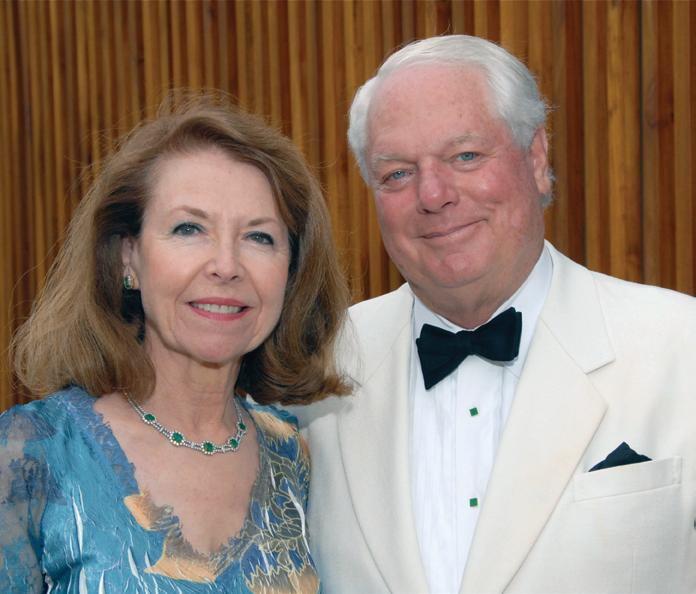
$1 MILLION and above
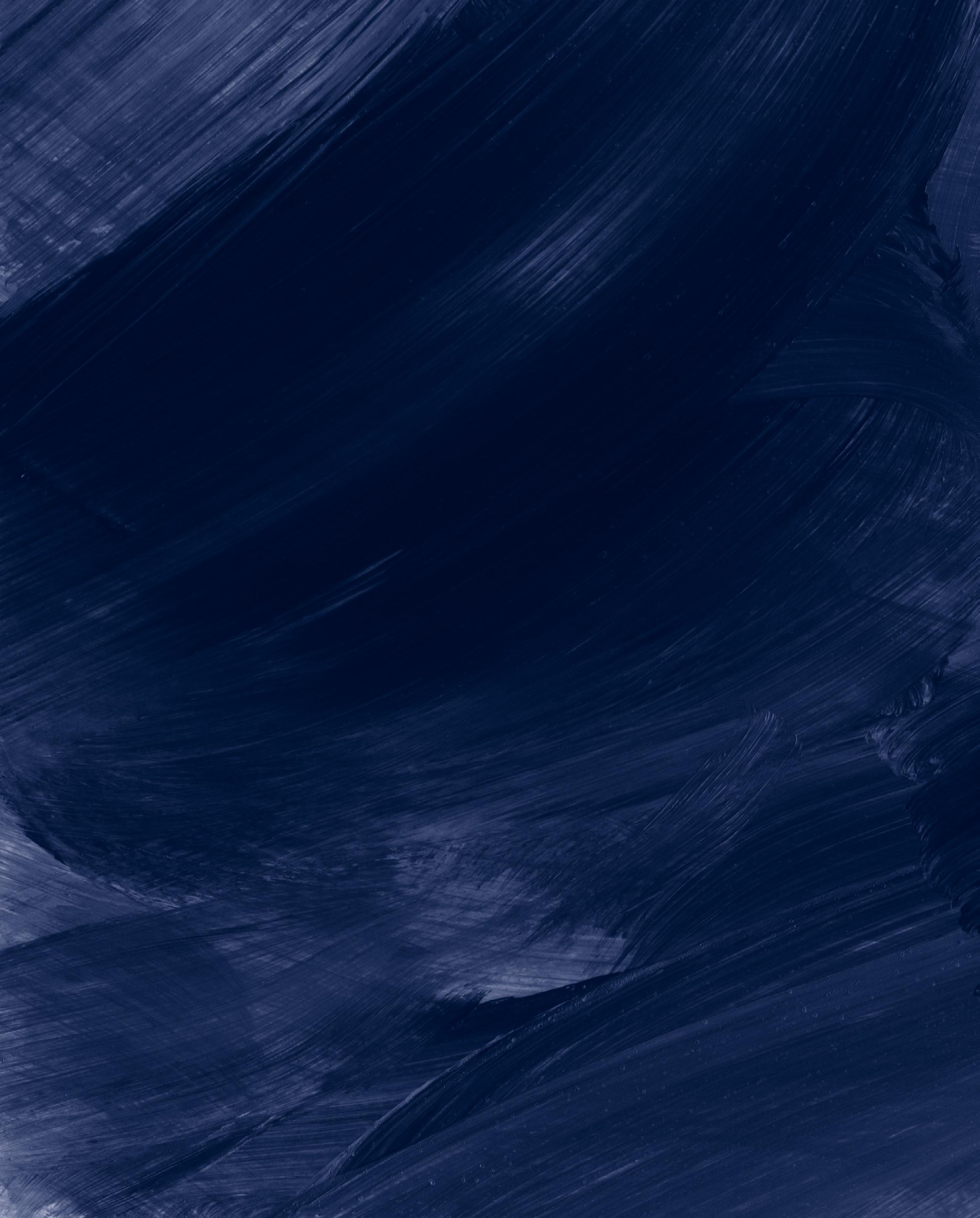
$1 MILLION and above


$500,000 and above

$400,000 and above
$400,000 and above
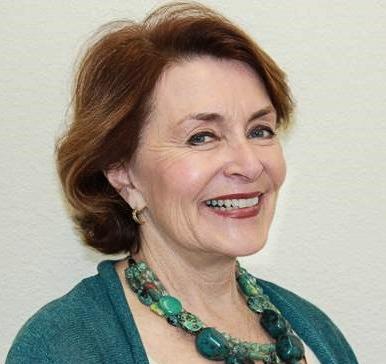

$400,000 and above

$200,000 and above
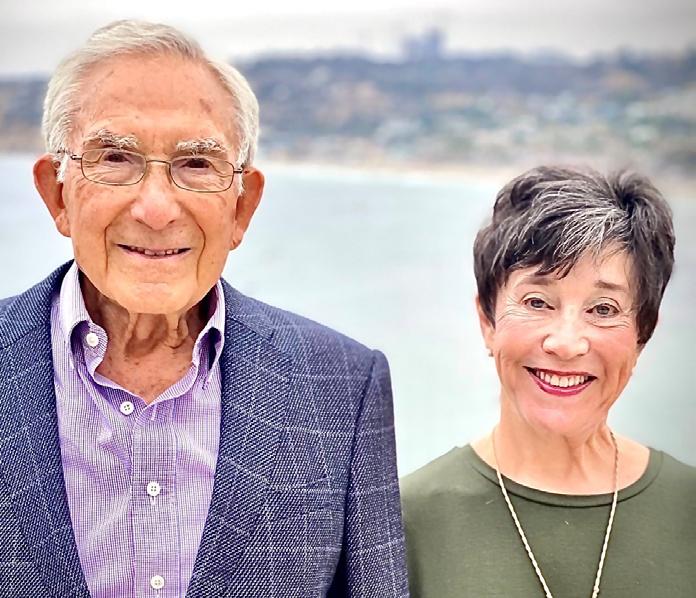
$200,000 and above
12 THE CONRAD | HOME OF LA JOLLA MUSIC SOCIETY · 2023-24 SEASON
TRANSFORMATIVE SUPPORT
Brenda Baker and Steve Baum
Raffaella and John Belanich
Mary Ellen Clark
Irwin and Joan Jacobs
Dorothea Laub
Debbie Turner
Julie and Bert Cornelison
Herbert Solomon and Elaine Galinson


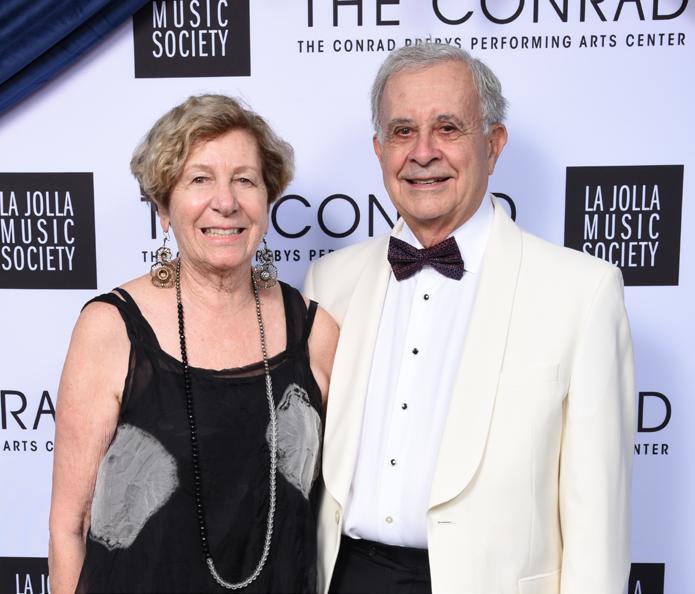
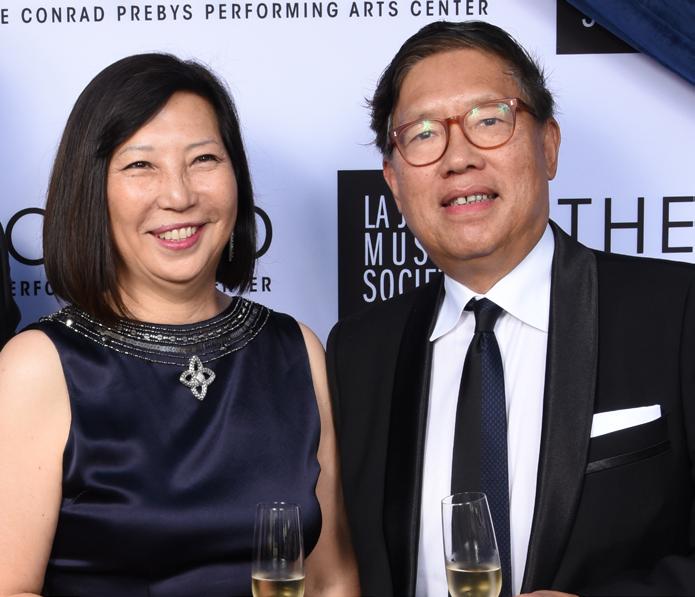

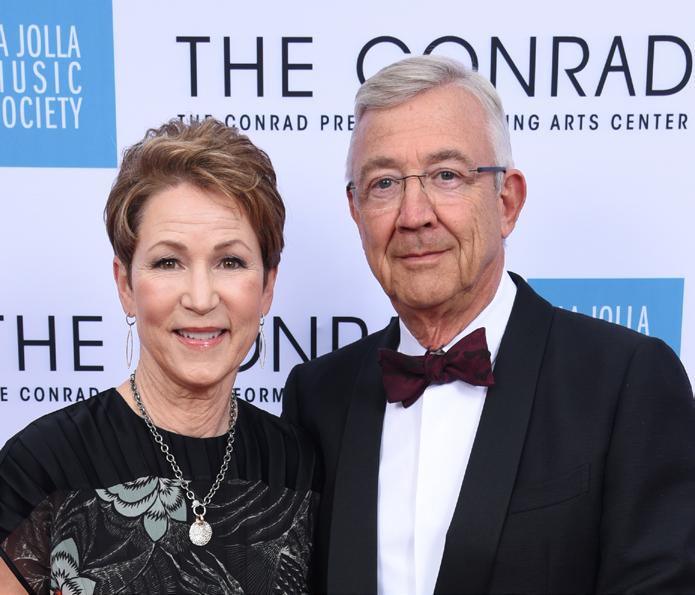
TheConrad.org · 858.459.3728 13 TRANSFORMATIVE SUPPORT Keith and Helen Kim $200,000 and above Angel and Fred Kleinbub $200,000 and above For information about supporting La Jolla Music Society through membership in the Pillars program, please contact Ferdinand Gasang at 858.526.3426 or FGasang@TheConrad.org. Vivian Lim and Joseph Wong $200,000 and above Sue and Peter Wagener $200,000 and above Haeyoung Kong Tang $200,000 and above Thank you to these Pillars in the community. TABLE OF CONTENTS
THE CONRAD
Home of La Jolla Music Society
Winter Season
From classical, jazz, and dance to global music, exciting speakers, and family concerts, each season Artistic Director Leah Rosenthal brings the best artists in the world to the San Diego community. This season, our most thrilling to date, will feature more than 80 artists, including superstars like Renée Fleming, Herbie Hancock, Branford Marsalis, Kronos Quartet, Tiler Peck, Chris Thile, and Jean-Yves Thibaudet as well as many inspiring new faces like Isata Kanneh-Mason, Bruce Liu, Lakecia Benjamin, Hiromi, Seong-Jin Cho, and many more.
SummerFest
La Jolla Music Society’s acclaimed chamber music festival, SummerFest, curated by award-winning pianist and festival Music Director Inon Barnatan, engages more than 80 of the world’s finest musicians to perform at The Conrad throughout the month of August. In addition to remarkable mainstage performances, SummerFest offers over 50 free and opento-the-public educational activities. To learn more, visit TheConrad.org/SummerFest.
The Conrad
The Conrad Prebys Performing Arts Center opened in 2019 and serves as a gathering place for cultural, arts education, and community activity. As the permanent home of La Jolla Music Society, The Conrad hosts world-class performances presented by LJMS and other local arts organizations in its four outstanding performance and activity spaces, The Baker-Baum Concert Hall, The JAI, The Atkinson Room, and the picturesque Wu Tsai QRT.yrd.
Learning and Engagement
La Jolla Music Society’s award-winning Learning and Engamement Programming provides unmatched access and learning opportunities to more than 11,000 students and community members throughout San Diego County annually. With learning and engagement at the heart of our mission, we work closely with each visiting artist and ensemble to create outreach activities that highlight their unique talents and expertise at both The Conrad and in the community. With our state-of the-art video and streaming capabilities at The Conrad, we are able to provide live streaming for events such as our annual SummerFest and education events for free in our Digital Concert Hall.
Land Acknowledgment
The Conrad Prebys Performing Arts Center acknowledges the ancestral, unceded territory of the Kumeyaay people, on which The Conrad was built. We hold great respect for the land and the original people of the area where our performing arts center is located. The Kumeyaay continue to maintain their political sovereignty and cultural traditions as vital members of the San Diego community.

14 THE CONRAD | HOME OF LA JOLLA MUSIC SOCIETY · 2023-24 SEASON
Follow Us @ljmusicsociety La Jolla Music Society
BOARD OF DIRECTORS · 2023–24
H. Peter Wagener – Chair
Vivian Lim – Vice Chair
Bert Cornelison - Treasurer
Sharon Cohen - Secretary
Stephen L. Baum
Mary Ann Beyster
Marla Bingham
Eleanor Y. Charlton
Ric Charlton
Mary Ellen Clark
Ellise Coit
Ann Parode Dynes
Jennifer Eve
Debby Fishburn
Stephen Gamp
Lehn Alpert Goetz
John Hesselink
Susan Hoehn
Diana Lombrozo
Sue Major
Richard A. Norling
Arman Oruc
Tom Rasmussen
Sylvia Ré
Stacy Kellner Rosenberg
Sheryl Scarano
Marge Schmale
Jeanette Stevens
Stephanie Stone
Debra Turner
Lise Wilson
Bebe L. Zigman
HONORARY DIRECTORS
Brenda Baker
Stephen L. Baum
Joy Frieman, Ph.D.
Irwin M. Jacobs
Joan K. Jacobs
Lois Kohn (1924—2010)
Helene K. Kruger (1916—2019)
Conrad Prebys (1933—2016)
Peggy Preuss
Ellen Revelle (1910—2009)
Leigh P. Ryan, Esq.
Dolly Woo
LA JOLLA MUSIC SOCIETY STAFF
Todd R. Schultz – President & CEO
Leah Rosenthal – Artistic Director
Inon Barnatan – SummerFest Music Director
ADMINISTRATION
Karin Burns – Director of Finance
Brady Stender – Finance & Administration Manager
Breanne Self - Finance & Administrative Assistant
PROGRAMMING
Anne-Marie Dicce – Artistic Planning Manager
Grace Smith – Senior Artistic Operations Manager
Carly Cummings – Artistic Operations Coordinator
John Tessmer – Lead Artist Liaison
Jade Lewenhaupt – Artist Liaison
Maya Greenfield-Thong – Artist Liaison
Eric Bromberger – Program Annotator
LEARNING & ENGAGEMENT
Allison Boles – Director of Learning & Engagement
Carly D ’ Amato – Learning & Engagement Coordinator
Serafin Paredes – Community Music Center Director
Aimee Alvarado – Community Music Center Administrative Assistant
Community Music Center Instructors:
Juan Tomás Acosta, Marcus Cortez, Ian Lawrence, Marko Paul, Eduardo Ruiz, Juan Sanchez, Rebeca Tamez
DEVELOPMENT
Ferdinand Gasang – Director of Development
Camille McPherson – Individual Giving & Grants Officer
Anne Delleman – Development Coordinator
Nicole Slavik – Special Events & Catering Director
Vivian Vu – Special Events Coordinator
VENUE SALES & EVENTS
Juliet Zimmer – Venue Sales Manager
MARKETING & TICKET SERVICES
Mary Cook – Director of Marketing
Stephanie Saad Thompson – Communications & Public Relations Director
David Silva – Marketing Manager
Cristal Salow – Data & Marketing Analysis Manager
Mariel Pillado – Graphic Designer
Marsi Bennion – Box Office & Guest Services Manager
Patrick Mayuyu – Box Office & Guest Services Assistant Manager
Kaitlin Barron – Box Office & Guest Services Lead Associate
Sam Gilbert – Box Office & Guest Services Associate
Mitch Cook – Box Office & Guest Services Associate
Shaun Davis – House Manager
OPERATIONS & PRODUCTION
Tom Jones – Director of Production & Technology
Jamie Coyne – Production Manager
Ryn Schroeder – Production Coordinator
Calvin Cadua – Event Manager
Thomas Thomas – Technical Director
Yoni Hirshfield – Technical Coordinator
Tom Mehan – Facilities Manager
Colin Dickson – Facilities Coordinator
Kim Chevallier – Security Supervisor
Jonnel Domilos – Piano Technician
Admin:
TheConrad.org · 858.459.3728 15
The Conrad Home of La Jolla Music Society 7600 Fay Avenue, La Jolla, California
92037
858.459.3724 TABLE OF CONTENTS
Welcome to La Jolla Music Society’s 55 th Winter Season

Dear friends,
Our primary goal at The Conrad is to present the world’s greatest artists, plus young performers on a fast upward trajectory. With the 2024 lineup, Artistic Director Leah Rosenthal has achieved just that with brilliant artists like Lawrence Brownlee, Kronos Quartet, Jakub Józef Orliński, Branford Marsalis, and Ladysmith Black Mambazo, along with Ray Chen, Quatuor Ébène, Abel Selaocoe and Manchester Collective, and many others.
In addition to our presenting and producing performances, we also are working to establish The Conrad as an integral part of this community. Our mission is to serve all of San Diego, not only through our own programs but also as a meeting and performance space for others. In 2023, 286 events were held at The Conrad, including about 140 La Jolla Music Society concerts and free education events (lectures, seminars, etc.), plus about 150 rental days by visiting presenters.
Visiting presenters included performing arts groups, like San Diego Symphony, Camarada, City Ballet, the Metropolitan Opera National Council Auditions, and San Diego Ballet, as well as galas and fundraising events for organizations like the Visual and Performing Arts Foundation to raise funds for arts programs in schools, Challenged Athletes Foundation, and Voices of Our City. Plus, The Bishop’s School’s homecoming and La Jolla High’s prom took place here, as well as rentals by TEDxSanDiego and the San Diego International Film Festival.
We couldn’t be more pleased with the public response to and use of The Conrad, and we will constantly work to improve our partnerships throughout San Diego.
Please join us often for events and programs at The Conrad. We love having you here!
Sincerely,
Todd Schultz President & CEO La Jolla Music Society
Our Mission: The mission of La Jolla Music Society is to enhance cultural life and engagement by presenting and producing a wide range of programming of the highest artistic quality, and to make The Conrad Prebys Performing Arts Center a vibrant and inclusive hub.
16 THE CONRAD | HOME OF LA JOLLA MUSIC SOCIETY · 2023-24 SEASON
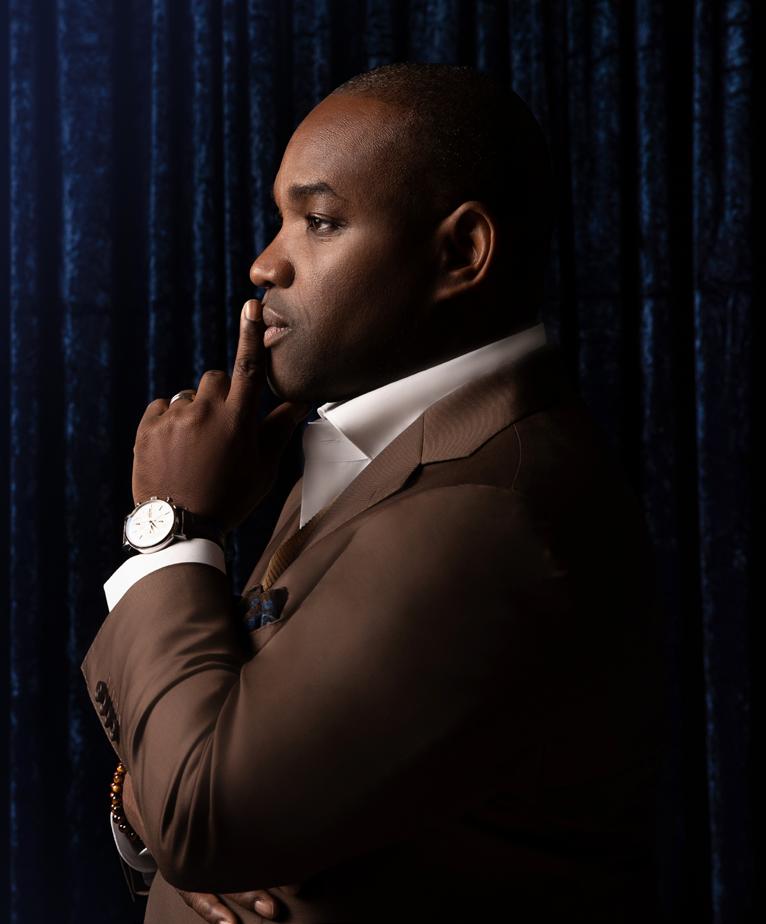
PRELUDE 6:30 PM
Lecture by Michael Gerdes
LAWRENCE BROWNLEE, tenor & KEVIN MILLER, piano
Co-presented with San Diego Opera
SATURDAY, MARCH 2, 2024 · 7:30 PM
THE BAKER-BAUM CONCERT HALL
Certain selections in the first half of the program are featured on Lawrence Brownlee's newest album Rising, followed by traditional classics in the second half.
La Jolla Music Society’s 2023–24 season is supported by The City of San Diego Commission for Arts and Culture, Banc of California, The Lodge at Torrey Pines, ProtoStar Foundation, Vail Memorial Fund, ResMed Foundation, Bright Events Rentals, Cafe Coyote, Rancho Coyote, Giuseppe's, Ace Parking, Brenda Baker and Steve Baum, Raffaella and John Belanich, Gordon Brodfuehrer, Mary Ellen Clark, Bert and Julie Cornelison, Elaine Galinson and Herbert Solomon, Joan and Irwin Jacobs, Angelina and Fred Kleinbub, Dorothea Laub, Vivian Lim and Joseph Wong, Jeanette Stevens, Debra Turner, Sue and Peter Wagener, and Bebe and Marvin Zigman.
Lawrence Brownlee appears by arrangement with IMG Artists, LLC, 7 West 54th St., New York, NY 10019. 212-994-3500
MARX Five Songs (1882–1964)
Nocturne
Selige Nacht Die Elfe
Christbaum
Hat dich die Liebe berührt
JASMINE BARNES Peace (b. 1991)
BRANDON SPENCER I Know My Soul (b. 1992)
CARLOS SIMON Vocalise III (b. 1986)
DAMIEN L. SNEED Beauty That is Never Old (b. 1979)
The Gift to Sing
SHAWN E. OKPEBHOLO Romance (b. 1981)
JOEL THOMPSON My People (b. 1988)
INTERMISSION
VERDI
Ad una stella (1813–1901)
La donna è mobile from Rigoletto
DONIZETTI
Me voglio fa ’na casa (1797–1848)
Allegro io son from Rita
ROSSINI La lontanaza (1792–1868)
D’ogni più sacro impegno from L’occasione fa il ladro
BELLINI La ricordanza (1801–1835)
Nel furor delle tempeste from Il pirata
Lawrence Brownlee, tenor ; Kevin Miller, piano
This presentation marks Lawrence Brownlee’s and Kevin Miller's La Jolla Music Society debuts.
TheConrad.org · 858.459.3728 17
TABLE OF CONTENTS
Joseph Marx
Nocturne
Text by Otto Erich Hartleben
Süß duftende Lindenblüte
in quellender Juninacht.
Eine Wonne aus meinem Gemüte ist mir in Sinnen erwacht.
Als klänge vor meinen Ohren leise das Lied vom Glück, als töne, die lange verloren, die Jugend leise zurück.
Süß duftende Lindenblüte in quellender Juninacht.
Eine Wonne aus meinem Gemüte ist mir zu Schmerzen erwacht.
Selige Nacht
Text by Otto Erich Hartleben
Im Arm der Liebe schliefen wir selig ein, Am offnen Fenster
Lauschte der Sommerwind, Und uns’rer Atemzüge
Trug er hinaus
In die helle Mondnacht.
Und aus dem Garten tastete
Zagend sich ein Rosenduft
An uns’rer Liebe Bett
Und gab uns wundervolle Träume.
Träume des Rausches
So reich an Sehnsucht.
Die Elfe
Bleib bei uns!
Wir haben den Tanzplan im Tal bedeckt mit Mondesglanze, Johanneswürmchen erleuchten den Saal, die Heimchen spielen zum Tanze.
Die Freude, das schöne leichtgläubige Kind, es wiegt sich in Abendwinden:
Wo Silber auf Zweigen und Büschen rinnt, da wirst du die Schönste finden.
Nocturne
Sweet scented linden blossom in swelling June night, a delight from my soul, awakened to my mind. As if the song of joy sounded softly in my ears, as if long-lost youth resounded quietly back to me. Sweet scented linden blossom in swelling June night; a delight from my soul awakened as pain.
Blissful Night
In the arms of love we slumbered blissfully. At the open window the summer wind listened; and carried away the peacefulness of our breathing into the moonlight. And from the garden the fragrance of roses cautiously swept over our bed of love and gave us wonderful dreams. Dreams of desire, so full of longing.
The Elf
Stay with us!
We have covered a clearing in the dell with moonlight for the dance; fireflies illuminate the hall and crickets are playing dance-music. Joy, the fair, overcredulous child, is lulled by the evening winds; where silver runs on branch and bush you will find the fairest girl.
Christbaum
Hörst auch du die leisen Stimmen
Aus den bunten Kerzlein dringen?
Die vergessenen Gebete
Aus den Tannenzweiglein singen?
Hörst auch du das schüchternfrohe, Helle Kinderlachen klingen?
Schaust’ auch du den stillen Engel
Mit den reinen weissen Schwingen?
Schaust’ auch Du Dich selber wieder, Fern und fremd dich wie im Traume?
Grüßt auch dich mit Märchenaugen
Deine Kindheit aus dem Baume?
Christmas Tree
Do you also hear the soft voices
Coming from the colorful little candles? The forgotten prayers
Singing from the little branches of the fir tree?
Do you also hear the timid but happy Bright laughter of children ringing?
Do you also see the silent angel
With the pure white wings?
Do you also see yourself again?
Strangely, from a distance like a dream?
Does your childhood greet you Like a fairy-tale from the tree?
18 THE CONRAD | HOME OF LA JOLLA MUSIC SOCIETY · 2023-24 SEASON LAWRENCE BROWNLEE - TEXTS & TRANSLATIONS
Hat dich die Liebe berührt
Hat dich die Liebe berührt, Still unter lärmenden Volke, Gehst du in goldner Wolke, Sicher von Gott geführt. Nur wie verloren, umher
Lässest die Blicke du wandern, Gönnt ihre Freuden den Andern, Trägst nur nach einem Begehr: Scheu in dich selber verzückt, Möchtest du leugnen vergebens, Daß nun die Krone des Lebens, Strahlend die Stirn dir schmückt.
If Love Has Touched You
If love has touched you softly, among the noisy folk, amid a cloud of gold, you’re led by God safely. Only as one thus bemused, you let your gaze depart. you do not envy the joy of others. only one desire is yours. Shyly delighted with yourself, though you would deny it, now adorns your brow the gleaming crown of life.
The Gift to Sing
Sometimes the mist overhangs my path, And blackening clouds about me cling; But, oh, I have a magic way
To turn the gloom to cheerful day— I softly sing.
And if the way grows darker still, Shadowed by Sorrow’s somber wing, With glad defiance in my throat, I pierce the darkness with a note, And sing, and sing
I brood not over the broken past, Nor dread whatever time may bring; No nights are dark, no days are long, While in my heart there swells a song, And I can sing.
Jasmine Barnes
Peace
Peace, on a thousand hills and dales.
Peace, peace in the hearts of men
While kindliness reclaims the soil, Where bitterness, where bitterness has been.
Peace, Peace, Peace
The night of strife is drifting past, The storm of shell has ceased.
Disrupted is the cordon fell, Sweet charity released.
Peace, Peace, Peace, Peace
Forth from the shadow, swift we come
Wrought in the flame together.
All men as one beneath the sun
In brotherhood forever (ooh) Peace (ooh)
Brandon Spencer
I Know My Soul
I plucked my soul out of its secret place, And held it to the mirror of my eye. To see it like a start across the sky, A shining body quivering in space A spark of passion shining on my face.
And I explored it to determine why This awful key to my infinity
Conspires to rob me of sweet joy and grace. And if the sign may not be fully read, If I can comprehend, but not control, I need not gloom my days with futile dread.
Because I see a part and not the whole.
Contemplating the strange, I’m comforted by this narcotic thought: I know my soul!
Damien Sneed
Beauty That is Never Old
When buffeted and beaten by life’s storms, When by the bitter cares of life oppressed, I want no surer haven than your arms, I want no sweeter heaven than your breast. When over my life’s way there falls the blight Of sun-less days, and nights of starless skies; Enough for me, the calm and steadfast light That softly shines within your loving eyes. The world for me, and all the world can hold Is circled by your arms; for me there lies, Within the lights and shadows of your eyes, The only beauty that is never old.
TheConrad.org · 858.459.3728 19
LAWRENCE BROWNLEE - TEXTS & TRANSLATIONS TABLE OF CONTENTS
Shawn E. Okpebholo
Romance
Ah…ooo...ooo...ah…mmm...ooo…ooo…mmm…
To clasp you now and feel notes of close pressed, Scented and warm against my beating breast; To whisper soft and quivering your name, And drink the passion burning, burning in your frame;
To lie at full length, taut, with cheek to cheek, And tease your mouth with kisses mmm…till you speak
Love words, mad words, dream words, sweet, sweet oh, sweet words, senseless words, Love words, mad words, dream words, sweet words, senseless words, Melodious like notes of mating birds;
To hear you ask if I shall love always, And myself answer: Till the end of days;
To feel your easeful sigh of happiness
When on your trembling lips I murmur: Yes; It is so sweet. So so sweet, so sweet, so sweet, so so sweet We know it is not true.
What matters it? The night must shed her dew. We know it is not true, but it is sweet It is sweet ooo…it’s sweet
The poem with this music is complete.
Joel Thompson
My People
Dream-singers, Story-tellers, Dancers, Loud laughters in the hands of Fate— My People...
Dishwashers, Elevator-boys, Ladies’ maids, Crap-shooters, My People...
Cooks, Waiters, Jazzers, My People...
Nurses, nurses of babies, Loaders, loaders of ships, Rounders, My People...
Number writers, Comedians in vaudeville
And bandmen in circuses—
Dream singers all, My People.
Storytellers all— My People, and dancers—
God! What dancers!
Singers—
God! What singers! Singers and dancers, Dancers and laughers. Laughers?
Yes, Laughers! Laughers...
Hahahahahahahaha HA! HA! HA! hahah… Laughers… Ha... HA! HA! HA! HA! HA! HA! Hahaha
Dream-singers, Story-tellers, Dancers, dancers, dancers, And Loud-mouthed laughers in the hands… Loud-mouthed laughers in the hands of Fate—My People!
20 THE CONRAD | HOME OF LA JOLLA MUSIC SOCIETY · 2023-24 SEASON
LAWRENCE BROWNLEE - TEXTS & TRANSLATIONS
Giuseppe Verdi
Ad una stella
Bell’astro della terra, Luce amorosa e bella, Come desia quest’anima
Oppressa e prigioniera
Le sue catene infrangere, Libera a te volar!
Gl’ignoti abitatori
Che mi nascondi, o stella, Cogl’angeli s’abbracciano
Puri fraterni amori, Fan d’armonie cogl’angeli La spera tua sonar.
Le colpe e i nostri affanni
Vi sono a lor segreti, Inavvertiti e placidi
Scorrono i giorni e gli anni, Nè mai pensier li novera, Nè li richiama in duol.
Bell’astro della sera, Gemma che il cielo allieti, Come alzerà quest’anima
Oppressa e prigioniera
Dal suo terreno carcere
Al tuo bel raggio il vol!
La donna è mobile from Rigoletto
La donna è mobile
Qual piuma al vento, muta d’accento e di pensiero.
Sempre un amabile, leggiadro viso, in pianto o in riso, è menzognero.
La donna è mobil’.
Qual piuma al vento, muta d’accento e di pensier’!
È sempre misero
chi a lei s’affida, chi le confida mal cauto il cuore!
Pur mai non sentesi felice appieno chi su quel seno non liba amore!
La donna è mobil’
Qual piuma al vento, muta d’accento e di pensier’!
Gaetano Donizetti
Me voglio fa’na casa
Me voglio fa ’na casa miez’ ’o mare
Fravecata de penne de pavune, Tra la la le la...
D’oro e d’argiento li scaline fare E de prete preziuse li barcune, Tra la la le la...
Quanno Nennella mia se va a facciare Ognuno dice “mò sponta lu sole,” Tra la la le la...
To a star
Beautiful star from the earth, loving and beautiful light, This oppressed and imprisioned soul yearns To break its confinements, to fly free!
The ones unknown that you conceal from me, oh star, Pure, brotherly love embracing with angels, In harmony with angels as your world resounds. There, our faults, and fears are unknown, Days and years pass calmly, unnoticed, no thought Of counting them, or recalling them in sadness.
Lovely evening star, gem that cheers the heavens, Let this oppressed, imprisoned soul be raised from Earthly confinement to fly with your lovely rays of light!
Woman is flighty
Woman is flighty.
Like a feather in the wind, she changes in voice and in thought.
Always a lovely, pretty face, in tears or in laughter, it is untrue.
Woman is fickle.
Like a feather in the wind, she changes her words and her thoughts!
Always miserable is he who trusts her, he who confides in her his unwary heart!
Yet one never feels fully happy who from that bosom does not drink love!
Woman is fickle.
Like a feather in the wind, she changes her words, and her thoughts!
I want to build a house
I want to build a house surrounded by the sea made from the feathers from a peacock.
Tra la la le la…
Of gold and silver I will make the stairs and of precious stones, the balconies.
Tra la la le la…
When my Nennalla peers out everybody will say, here comes the sun.
Tra la la le la…
Allegro io so from Rita
Allegro io son, come un fringuel, che spiega il volo, libero al ciel! Sorride a me lieta stagion, torno garzon!
Tra, la la, la la… Allegro io son, come un fringuel! Dispiego il vol libero al ciel, vedovo son torno garzon!
Per molti sposi è una cuccagna aver in cielo la lor compagna!
Io non le pago il funeral, e non istò perciò più mal!
È il caso mio più original!
Allegro io son come un fringuel, torno garzon!
Sirena, o Dea, non han virtù Ne’ lacci loro pigliarmi più! Se l’amo un dì giunse a schivar, il pesciolino è il re del mar!
Allegro io son come un fringuel, torno garzon!
I’m So Happy I’m so happy, like a little bird soaring in flight, free in the skies! The cheerful day smiles on me, I’m a bachelor again! Tra, la la, la la… I’m as happy as a little bird!
I’m spreading my wings free in the sky, I’m a widower, I’m a bachelor again!
For many husbands it’s a real treat when their spouse goes to heaven!
I won’t be paying for her funeral, I won’t have to put up with any more suffering, my situation is really most original.
I’m as happy as a little bird, I’m a bachelor again. No siren or goddess has the power to trap me in her snares! If the little fish ever manages to avoid the bait he’s the king of the sea!
I’m as happy as a little bird, I’m a bachelor again.
TheConrad.org · 858.459.3728 21 LAWRENCE BROWNLEE - TEXTS & TRANSLATIONS
TABLE OF CONTENTS
Gioachino Rossini
La lontanaza
Or ch’io sono a te rapita, Or che tolto a me tu sei, Con le spine di mia vita Gli altrui fior non cangerei. Se a soffrir è solo un core, Quel soffrir si fa dolore, Caro amore, caro amor!
D’ogni più sacro impegno from L’occasione fa il ladro
D’ogni più sacro impegno sciolta pur sia la fede, amor da voi non chiede chi amor per voi non ha. Pèra, chi vuol costringere D’un cor la libertà.
Ma se un sospetto indegno di soverchiarmi intende, quel generoso sdegno, che il mio decoro accende, dalla ragione armato, un vano ardir confondere, e impallidir farà.
Vincenzo Bellini
La ricordanza
Era la notte, e presso di Colei Che sola al cor mi giunse e vi sta sola, Con quel pianger che rompe la parola, Io pregava mercede a martir miei.
Quand’ Ella, chinando gli occhi bei, Disse (e il membrarlo sol me, da me invola): Ponmi al cor la tua destra, e ti consola: Ch’io amo e te sol’ amo intender dei, Poi fatta, per amor, tremante e bianca, In atto soävissimo mi pose
La bella faccia sulla spalla manca.
Se dopo il dole assai più duol l’amaro; Se per me nullo istante a quel rispose, Ah! Quant’ era in quell’ ora il morir caro!
The distance
Now that I am taken from you, now that you are stolen from me, With the thorns of my life, I wouldn’t change for another man’s flowers.
If a heart is suffering in solitude, that suffering turns into pain, beloved, dearest love!
Then, let all faith be broken Then, let all faith be broken of the most sacred of pledges; he that has no love for you asks for none.
May he perish, who would ever seek to constrict a heart’s liberty.
But if base suspicion threatens to overpower me, may the righteous indignation which ignites my dignity, armed with the truth, confound such vain plots and cause rumor to grow pale.
Recollection
It was night, and beside her who alone reached my heart and there remains alone, With those tears that impede words I pleaded for pity on my anguish.
When She, lowering her lovely eyes, said (the mere memory of it makes my head whirl):
“Place your hand on my heart, and be consoled: You should know that I love you and you alone,”
This said from love, pale and trembling, In the sweetest of acts she leaned Her lovely face on my left shoulder.
Even if, after this bliss, grief was far more bitter, even if; for me, no moment matched this, Ah! how dear was dying in that hour!
Nell furor delle tempeste
from Il pirata
A lei soltanto... Ascolta.
Nel furor delle tempeste, Nello strazio della piaga, Quella immagine adorata
Si presenta al mio pensier, Come un angelo celeste, Di virtude consiglier.
In the fury of the tempests
Of her alone... Listen.
In the fury of the tempests, in the torment of my wounds, her adored image presents itself to my thoughts, like a heavenly angel, counseling virtue.
22 THE CONRAD | HOME OF LA JOLLA MUSIC SOCIETY · 2023-24 SEASON
LAWRENCE BROWNLEE - TEXTS & TRANSLATIONS
Program notes by Eric Bromberger
Five Songs
JOSEPH MARX
Born May 11, 1882, Graz, Austria
Died September 3, 1964, Graz, Austria
Little known to American audiences, Joseph Marx is remembered in Austria as one of that nation’s finest composers of songs. His family had hoped that he would make his career in law, but the lure of music proved too strong, and Marx earned his doctorate in musicology in his native Graz. Marx remained true to his late-Romantic roots even as the world of music was transformed around him—though he called himself a “romantic realist,” his idiom remains firmly anchored in the sound and technique of the 19th century. He launched his career as a composer of songs, writing over 120 of them by the time he was 30. These songs, which are heir to the magnificent German lieder tradition, also show Marx’s awareness of Impressionism, and at moments they can sound like Mahler by way of Debussy. That can be a very pleasing combination.
Nocturne
Composed: 1911
Approximate Duration: 4 minutes
Nocturne sets a text by Otto Eric Hartleben (1864–1905), whose translation of Albert Giraud’s Pierrot Lunaire became the text for Schoenberg’s famous setting. Marx’s song offers a soaring vocal line and an extraordinarily active part for the piano, which plays for extended periods by itself. The central stanza is somewhat different in mood from the outer ones, and the music of the last stanza reprises the first, even with the one crucial word change.
Selige Nacht
Composed: 1912
Approximate Duration: 2 minutes
Selige Nacht (Hartleben) is extremely dramatic, driven by an extroverted expression that might seem more suited to the opera house than the recital hall.
Die Elfe
Composed: 1909
Approximate Duration: 2 minutes
Die Elfe, on a text by Joseph von Eichendorf (17881857), offers a magic invitation to a fairyland gathering and the promise of “the fairest girl.” Marx’s marking is Rasch und heimlich (“Quick and furtive [or stealthy]”), and the piano accompaniment, often set high in the instrument’s register, gives the song a particularly sparkling sound.
Christbaum
Composed: 1908
Approximate Duration: 3 minutes
In Christbaum, on a text by Christiane Rosalia Friederik (1839–1901), the sight of a Christmas tree revives
memories of childhood. Marx instructs that the performance should be Langsam und sehnsuchtig (“Slow and yearning”), and his setting is extremely quiet, rarely rising above piano or pianissimo.
Hat dich die Liebe berührt
Composed: 1908
Approximate Duration: 3 minutes
One of Marx’s most famous songs, Hat dich die Liebe berüht, sets a text by Paul Heyse (1830–1914), who won the Nobel Prize for Literature in 1910. Heartfelt in its intensity, this song has been a favorite of many sopranos, including Leontyne Price.
The next collection of songs on this program was written by a very specific group of composers. All are young, all are African American, all are based (generally) in the northeast part of the country, and they have actively collaborated with each other. All the texts of the songs in the present collection are the work of poets active in the Harlem Renaissance.
Peace
JASMINE BARNES
Born September 28, 1991, Baltimore
Composed: 2022
Approximate Duration: 3 minutes
Jasmine Barnes grew up in Baltimore, where she was a member of the Baltimore Poly Institute marching band, which she describes as one of the formative experiences in her life. A graduate of Morgan State University, she has composed largely for voice, and her works include five operas, choruses, and works for solo voice; she has had works commissioned by the New York Philharmonic, Chicago Symphony, and Aspen Music Festival. Barnes’ “Peace” sets a poem by the poet and playwright Georgia Douglas Johnson (1880–1966). Johnson’s poem is a call for peace, and Barnes’ setting is gentle at first, then takes wing at the soaring repetitions of the word “Peace” before concluding in the calm of the song’s beginning.
I Know My Soul BRANDON SPENCER
Born December 15, 1992, Detroit
Composed: 2022
Approximate Duration: 4 minutes
Born in Detroit, Brandon Spencer has also specializes in works for voice, composing art songs of his own and making numerous collections and arrangements of spirituals. He is a first prize winner in the George Shirley Art Song Competition. Spencer’s “I Know My Soul” sets a poem by the poet, novelist, and activist Claude McKay (1890–1948). Born in Jamaica, McKay came to the United States in 1912 to attend college and was shocked by the racism he encountered; he became active in the labor movement and African-American causes. As a poet, McKay was drawn to the sonnet (and was much criticized for writing in an “old” form). But the sonnet is an ideal form
TheConrad.org · 858.459.3728 23
LAWRENCE BROWNLEE - PROGRAM NOTES TABLE OF CONTENTS
for introspection, and “I Know My Soul” traces the poet’s progress toward self-knowledge.
Vocalise III
CARLOS SIMON
Born April 13, 1986, Washington, D.C.
Composed: 2021
Approximate Duration: 4 minutes
Born in Washington, D.C., and raised in Atlanta Carlos Simon has been drawn in particular to jazz, gospel, and contemporary classical music. He has been composerin-residence at the Kennedy Center, and he has written a number of works for orchestra—he has had commissions from the orchestras of New York, Los Angeles, Boston, and Detroit. Simon received his doctorate from the University of Michigan, and he is currently an assistant professor of music at Georgetown University. In 2021 Simon composed a set of three vocalises for piano and voice; these were written on a commission from the Music Academy of the West as part of the Marilyn Horne Song Competition. A vocalise is a song with a wordless text—the singer “sings” only syllables. In a note in the score, Simon observes that “Even though this piece is without words and a narrative, I encourage performers to envision a scenario or story as they perform.” The third vocalise in this set is brilliant: Simon marks it “Moving fast and with energy.” Built on great flourishes from the piano and shifting meters, the music rips forward along powerful rhythms and ends abruptly.
Two Songs
DAMIEN L. SNEED
Born January 30, 1979, Augusta, GA
Beauty That is Never Old
Composed: 2022
Approximate Duration: 2 minutes
The Gift to Sing
Composed: 2022
Approximate Duration: 2 minutes
Damien L. Sneed—pianist, organist, singer, composer, and conductor—teaches at the Manhattan School of Music. A graduate of Howard University, he is the founder and artistic director of Chorale le Chateau. A former composerin-residence with the Houston Grand Opera, Sneed was awarded the Sphinx Medal of Excellence in 2014. This recital offers two of Sneed’s settings of poems by James Weldon Johnson (1871–1938). Johnson was a truly Promethean figure. He was the first Black lawyer admitted to the bar in Florida. He collaborated with his brother, the composer J. Rosamund Johnson, on a number of songs and a musical. He was active in the anti-lynching movement. He edited anthologies of spirituals and other songs by African Americans. Theodore Roosevelt appointed him the American consul in Venezuela and later Nicaragua. He became the first leader of the NAACP, serving from 1920 to 1930, and following that service he taught at NYU and Fisk University. Sneed has set a number of Johnson’s poems.
“Beauty That is Never Old” celebrates love and constancy, and Sneed gives it a heartfelt setting. In sharp contrast, “The Gift to Sing” receives a jaunty setting that sails to a powerful close.
Romance
SHAWN E. OKPEBHOLO
Born March 28, 1981, Lexington, KY
Composed: 2022
Approximate Duration: 8 minutes
Born in Lexington, Kentucky, Shawn E. Okpebholo received his masters and doctorate from the University of Cincinnati. A composer and conductor, he is a professor of music at the Wheaton College Conservatory of Music. Okpebholo gives “Romance” (text by Claude McKay) a very imaginative setting. The text is almost declaimed rather than sung, and rather than accompanying the singer closely, the piano part ranges freely apart from the text, commenting on and ornamenting McKay’s poem. The song opens with a long vocalise by the singer and closes with a piano postlude that—like the poem—ends ambiguously.
My People
JOEL THOMPSON
Born 1988, Atlanta
Composed: 2022
Approximate Duration: 3 minutes
A composer, pianist, conductor, and teacher, Joel Thompson earned his bachelors and masters at Emery University and is now completing his DMA at Yale. His “My People” sets a poem by Langston Hughes (1901–1967) that celebrates the many faces of the African-American experience. Hughes’ poem is an ecstatic recounting of that experience, and Thompson’s setting overflows with energy. He deftly varies the music to reflect each of the subjects that Hughes celebrates, and at the end both the poem and the music rise to a climax that is virtually shouted.
MUSIC BY COMPOSERS OF ITALIAN OPERA
This recital concludes with vocal music by four great Italian composers of opera, and Mr. Brownlee has chosen these selections in an imaginative way: He pairs a song by each of these composers with an aria from one of his operas.
Ad una stella
GIUSEPPE VERDI
Born October 10, 1813, Roncole, Italy
Died January 27, 1901, Milan, Italy
Composed: 1845
Approximate Duration: 3 minutes
Verdi composed only a few songs across his long creative career—his imagination seems to have been sparked more readily by the dramatic opportunities of the stage than by the isolated situation of the individual song. Ad una stella is from Verdi’s Six Romances, published in
24 THE CONRAD | HOME OF LA JOLLA MUSIC SOCIETY · 2023-24 SEASON LAWRENCE BROWNLEE - PROGRAM NOTES
1845, when he was only 32 (by this time he had composed both Nabucco and Ernani). This is an intense song, full of a romantic longing to escape the imprisonment of earthly life and flee to the perfection symbolized by a distant star. Verdi marks the song Andantino, and the vocal line flows easily above a somewhat declamatory piano accompaniment.
La donna è mobile from Rigoletto
Composed: 1851
Approximate Duration: 3 minutes
In Verdi’s Rigoletto, first produced in Venice in 1851, the title character—a hunchbacked dwarf who serves as court jester to the libidinous Duke of Mantua—plots to murder the duke, who has seduced his daughter Gilda. That plot will go horribly awry. La donna è mobile (“The Lady Is Fickle”) comes from the beginning of Act III, when it is sung by the Duke of Mantua, who laments the inconstancy of women. Verdi knew that this aria, with its catchy tune, would become an immediate hit, and he took great pains to keep it secret until the final rehearsal, swearing everyone present to secrecy. No matter—it was being sung on the streets of Venice by that evening, and it remains one of the most popular tenor arias ever written.
Me voglio fa’na casa
GAETANO DONIZETTI
Born November 29, 1797, Bergamo, Italy
Died April 8, 1848, Bergamo
Composed: 1837
Approximate Duration: 3 minutes
We remember Gaetano Donizetti as an opera composer, and Lucia di Lammermoor, L’elisir d’amore, and La fille du regiment will probably remain audience favorites forever. But Donizetti also wrote a vast number of songs and duets, some in salon style and probably intended for performance at home. Me voglio fa’na casa, published in 1837 and subtitled Canzona Napoletana, sets an anonymous text in the Neapolitan dialect. This is a brief but fantastic love song, and Donizetti’s setting of its refrain is particularly attractive.
Allegro io son from Rita
Composed: 1841
Approximate Duration: 4 minutes
Donizetti composed his comic opera Rita in 1841, but it was not produced until 1860, twelve years after his death. In eight scenes with spoken dialogue, the opera tells of the abusive Rita, an innkeeper, and the efforts of her two husbands (don’t ask) to escape her violent domination (the opera is subtitled The Beaten Husband). The husbands, Beppe and Gaspar, come up with an elaborate competition in which the loser will have to remain married to Rita, and it is the tenor Beppe who sings Allegro io son, a sprightly aria that drives to a florid conclusion.
La lontanaza
GIOACHINO ROSSINI
Born February 29, 1792, Pesaro, Italy
Died November 13, 1868, Paris
Composed: 1858
Approximate Duration: 4 minutes
Rossini wrote many kinds of vocal music other than opera, and these include sacred settings, choruses, and hymns. He also wrote a number of solo songs, and these span his career: the earliest dates from his boyhood (at about age 9), the last from his long period of retirement in Paris, when he composed not out of economic necessity but for his own diversion—he referred to this music as “Sins of My Old Age.” One of these “sins” is La lontananza (“The Absence” or “The Separation”), which sets a text by Giuseppe Torre. Framed by a piano prelude and postlude, this “arietta” proceeds smoothly along its 3/8 meter, broken occasionally by great flairs from the singer.
D’ogni più sacro impegno from L’occasione fa il ladro
Composed: 1812
Approximate Duration: 6 minutes
Rossini’s one-act comic opera L’occasione fa il ladro was first produced in Venice in November 1812, when the composer was only 20. The title translates “Opportunity Makes a Thief,” and the opera tells a tale of stolen luggage, assumed identities, deceptions, and revelations. Count Alberto, a tenor, is on his way to meet his bride, Berenice, whom he has never seen, and he sings D’ogni più sacro impegno near the end of the brief opera. The aria begins with an Andante, in which Alberto is full of acceptance, but at the second verse the music rips ahead. Rossini must have had quite good tenor for the première— the second half of this aria demands some extraordinarily agile and brilliant singing.
La ricordanza
VINCENZO BELLINI
Born November 3, 1801, Catania, Italy
Died September 23, 1835, Puteaux, France
Composed: 1834
Approximate Duration: 5 minutes
When we think of Bellini, we think of opera, as is only right with the composer of Norma and I puritani. But Bellini also wrote a number of songs—he called them “ariette”—for voice and piano across his brief career (he died at 33). In general, these “ariette” are small-scaled: the expression here tends to be intimate and personal, and the piano accompaniment remains understated. La ricordanza (“The Recollection”), composed the year before Bellini’s death, has always been one of his most famous songs. It sets a sonnet by Conte Carlo Pepolo, who was also the librettist for I puritani. That sonnet speaks of an absolutely perfect moment of love, recalled across a span of time and experience. The song seems simplicity itself—a lovely vocal line proceeds over flowing triplet accompaniment—
TheConrad.org · 858.459.3728 25 LAWRENCE BROWNLEE - PROGRAM NOTES
TABLE OF CONTENTS
but it is full of surprises that help underline the meaning of the text: rumblings deep in the piano, sudden harmonic modulations, unexpected excursions high into the singer’s range. Some listeners will recognize that Bellini used the main theme of La ricordanza as part of Elvira’s mad scene in I puritani.
Nel furor delle tempeste from Il pirata
Composed: 1827
Approximate Duration: 3 minutes
Bellini’s opera Il pirata (“The Pirate”), first produced in Milan in 1827, quickly became a success: over the next few years it was produced in Vienna, London, and Paris (and the young Maria Callas helped establish her reputation with performances of Il pirata in the 1950s). The beautiful Imogene has been forced to marry Ernesto, Duke of Caldora, and in despair her true love, Gualtiero, has become a pirate. The opera begins with a terrific storm at sea. Gualtiero, defeated by the forces of Ernesto, has been shipwrecked, and he washes ashore. Desolate and defeated, he sings the impassioned “Nel furor delle tempeste” (“In the fury of the storm”), in which he imagines Imogene as a “celestial angel.”
26 THE CONRAD | HOME OF LA JOLLA MUSIC SOCIETY · 2023-24 SEASON LAWRENCE BROWNLEE - PROGRAM NOTES

PRELUDE 2 PM
Musical Prelude by students from the Colburn School

MARIA IOUDENITCH, violin & KENNETH BROBERG, piano
SUNDAY, MARCH 3, 2024 · 3 PM THE BAKER-BAUM CONCERT HALL
Support for the Discovery Series and Musical Prelude provided by:
Gordon Brodfuehrer
Jeanette Stevens
La Jolla Music Society’s 2023–24 season is supported by The City of San Diego Commission for Arts and Culture, Banc of California, The Lodge at Torrey Pines, ProtoStar Foundation, Vail Memorial Fund, ResMed Foundation, Bright Events Rentals, Cafe Coyote, Rancho Coyote, Giuseppe's, Ace Parking, Brenda Baker and Steve Baum, Raffaella and John Belanich, Gordon Brodfuehrer, Mary Ellen Clark, Bert and Julie Cornelison, Elaine Galinson and Herbert Solomon, Joan and Irwin Jacobs, Angelina and Fred Kleinbub, Dorothea Laub, Vivian Lim and Joseph Wong, Jeanette Stevens, Debra Turner, Sue and Peter Wagener, and Bebe and Marvin Zigman.
Opus 3 Artists
SCHUBERT Sonatina in G Minor, No. 3, D.408 (1797–1828)
Allegro giusto
Andante
Menuetto: Allegro vivace
Allegro moderato
BRAHMS
Violin Sonata No. 1 in G Major, Opus 78 (1833–1897)
Vivace ma non troppo
Adagio – Più andante – Adagio
Allegro molto moderato
INTERMISSION
L. BOULANGER Nocturne for Violin and Piano (1893–1918)
N. BOULANGER Soleils couchants (1887–1979)
POULENC Sonata for Violin and Piano (1899–1963)
Allegro con fuoco
Intermezzo
Presto tragico
RAVEL Sonata in G Major for Violin and Piano (1875–1937)
Allegretto
Blues: Moderato
Perpetuum mobile: Allegro
Maria Ioudenitch, violin; Kenneth Broberg, piano
This presentation marks Maria Ioudenitch’s and Kenneth Broberg’s La Jolla Music Society debuts.
TheConrad.org · 858.459.3728 27
TABLE OF CONTENTS
Program notes by Eric Bromberger
Sonatina in G Minor for Violin and Piano, D.408
FRANZ SCHUBERT
Born January 31, 1797, Vienna
Died November 19, 1828, Vienna
Composed: 1816
Approximate Duration: 16 minutes
The spring of 1816 found 19-year-old Franz Schubert working unhappily as a schoolteacher in Vienna and struggling to establish himself as a composer in his scant free time. Already he had reached artistic maturity as a composer of lieder: from 1814 had come Gretchen am Spinnrade and from 1815 Erlkönig. And he had shown that he could write convincingly for orchestra: in April of 1816 he completed his Fourth Symphony. But he had as yet written no works for violin and piano, a surprising omission since Schubert played both instruments capably.
But in March and April of 1816, Schubert wrote three brief sonatas for violin and piano. These remained in manuscript throughout his life and were not published until 1836, eight years after his death, when the publisher Diabelli brought them out under the title “Sonatinas.” That title is unfortunate, for it may lead listeners to undervalue this music: though brief (the Sonatina in G Minor performed on this concert lasts a compact twelve minutes), each of these three pieces is in classical sonata form.
The Sonatina in G Minor, written in April of 1816, is the last of the three. Schubert’s marking for the opening movement, Allegro giusto, suggests his conception of this music: giusto means “strict,” and clearly Schubert wanted the formal structure of this movement carefully observed. The stern dotted fanfares of the opening give way to the piano’s flowing main theme, though Schubert makes use of those dotted fanfares throughout, and they finally bring the movement to its close. The flowing Andante is marked dolce (the unusual modulations in the middle section show that the teenaged composer had already developed his remarkable ability to move effortlessly between keys), while the third movement is a propulsive minuet whose rocking trio section in E-flat major flows easily over rippling piano accompaniment. The finale returns to the G-minor tonality and formal mood of the opening movement, but soon Schubert has this music singing and soaring easily.
Violin Sonata No. 1 in G Major, Opus 78 JOHANNES BRAHMS
Born May 7, 1833, Hamburg
Died April 3, 1897, Vienna
Composed: 1879
Approximate Duration: 27 minutes
Brahms spent three consecutive summers, from 1877 to 1879, in the small town of Pörtschach on the Wörthersee in southern Austria, where he could escape the heat of Vienna and enjoy a setting of unbelievable beauty. To a friend he wrote to marvel “how all the mountains round the blue lake are white with snow, while the trees are covered
with delicate green.” In 1878, during his second summer at Pörtschach, Brahms wrote for the violin. From that summer came the Violin Concerto, and he quickly began a sonata for violin and piano, though that would not be completed until he returned the following June. The dramatic concerto and the gentle sonata could not be more dissimilar, and it is tempting to think that Brahms may have used his fiery and extroverted ideas for the violin in the concerto, reserving the more lyric and intimate ones for the sonata.
The First Violin Sonata is one of those rare things in Brahms’ music, an instrumental piece based on extramusical associations, in this case two songs Brahms had written in 1873: Regenlied (“Rain-Song”) and Nachklang (“Memories”). It is also unusual in that it is unified around a tiny rhythmic cell that appears in many guises throughout the sonata. This cell—a simple dotted figure—is heard at the very beginning of the Vivace ma non troppo. The piano opens the sonata with quietly tolling chords, and the violin quickly enters with the gentle main theme: the violin’s first three notes, all D’s, form the cell that will shape much of the sonata. There are several other themes in this sonata-form movement, but the music is remarkable for its consistent lyricism—Brahms avoids extroverted gestures and keeps the mood reflective, almost nostalgic. Solo piano introduces the main theme of the Adagio, and only gradually does the violin take up this melody. The emotional outbursts absent from the first movement appear here, and near the end of the movement the violin—in double-stops—gently restates the main theme. The rhythmic cell of the first movement appears in the Adagio as a quiet accompaniment figure.
The haunting finale, Allegro molto moderato, is a rondo in G minor, based on the violin’s opening melody. This opening is a direct quotation from Brahms’ song Regenlied, and the text of that song is very much a part of the spirit of this movement. In the song, a speaker looks out through a window as rain falls against it, stirring his memories: “Pour down, rain; awake in me the songs we used to sing in the doorway when it rained outside. Would I could listen again to you, hear that sweet splashing and dissolve my soul in the wonder of childhood.” Once again, the first three notes of the violin’s theme, all D’s, repeat the sonata’s rhythmic cell, which will be heard throughout this movement. Beneath the violin’s flowing melodic line, the piano keeps up a patter of sixteenth-notes, clearly the sound of rain tapping gently on the window, and this lulling sound continues through much of the movement (a generation or two ago, this sonata was in fact nicknamed the “Rain” Sonata). Brahms breaks the rondo with several contrasting episodes, and in a remarkable touch, one of these is the theme from the Adagio, which soon threatens to take over the end of the movement. At the coda, the music moves to G major (marked dolcissimo), and Brahms weaves together the heartfelt Adagio theme with the main theme of the finale as this ravishing music soars to its gentle conclusion on the quiet patter of rain.
28 THE CONRAD | HOME OF LA JOLLA MUSIC SOCIETY · 2023-24 SEASON MARIA IOUDENITCH & KENNETH BROBERG - PROGRAM NOTES
Many years later, in 1890, Brahms’ good friend Clara Schumann wrote to tell the composer that she had just played the sonata with their mutual friend Joseph Joachim and that she had once more been astonished and moved by the final movement. Her concluding words capture perfectly the spirit of this radiant music: “I always wish that the last movement might accompany me on my journey from here to the next world.”
Nocturne for Violin and Piano
LILI BOULANGER
Born August 21, 1893, Paris
Died March 15, 1918, Mézy-sur-Seine, France
Composed: 1911
Approximate Duration: 4 minutes
The younger sister of the great teacher Nadia Boulanger, Lili Boulanger was a musician of extraordinary talent. Lili was the first woman ever to win the Prix de Rome, but that promise was cut short by perpetually poor health and an early death: she was only 24 when she died, ten days before the death of Debussy. So short a life inevitably means that one’s output is small, and today is Lili is remembered for her vocal settings and a small amount of instrumental music. As might be expected from the sister of Nadia Boulanger, Lili’s music is beautifully crafted. She has been described as an impressionist, but more striking are her instinctive sense of form and an expressive control of what is at times a surprisingly chromatic harmonic language.
Lili composed Nocturne in 1911, when she was 18. It begins quietly as the pianist rocks softly across three octaves of repeated C’s and the violin sings its gentle song. But soon the quiet mood of the beginning (marked doux: “soft, gentle”) is penetrated by unexpected harmonies, the violin line grows more animated, and the music rises to a climax. Matters calm, the rocking accompaniment of the opening reasserts itself, and Nocturne concludes in the home key of F major, with the violin high above, the piano in its deepest register.
Soleils couchants
NADIA BOULANGER
Born September 16, 1887, Paris
Died October 22, 1979, Paris
Composed: 1907
Approximate Duration: 3 minutes
When we think of the Boulanger sisters, we usually think of Lili as the phenomenally talented composer who died at 24 and of Nadia as the supremely influential teacher who lived into her nineties. Yet Nadia was also a composer. At the age of nine, she entered the Paris Conservatory, where she studied with Fauré, Widor, and Vierne. In 1913, at the age of 26, she became the first woman to win the Prix de Rome, though World War I put her musical activities on pause. She resumed composing after the war, but only briefly, and thereafter she devoted herself to teaching and to performing: she was the first
woman ever to conduct an orchestra in London and the first woman to conduct the New York Philharmonic, Boston Symphony, and Philadelphia Orchestra. She also led the première of Stravinsky’s Dumbarton Oaks Concerto in 1938 in Washington, D.C.
Soleils couchants (“Setting Suns”) was originally composed as a song that set a text by Paul Verlaine; Boulanger wrote it in 1907, when she was only 20. Verlaine’s poem begins with a vision of the sun setting over fields, but quickly the notion of the setting sun turns surrealistic as the poet begins to imagine dreams, ghosts, and “mighty suns” setting on distant shores. Boulanger’s setting is in three-part form. At the beginning the melodic line flows gently above a rocking accompaniment (her marking here is très calme) but becomes more extroverted as the poet’s strange vision begins to unfold; the song drifts into silence on a coda marked Tranquillo. Soleils counchants is heard at this concert in an arrangement for violin and piano.
Sonata for Violin and Piano FRANCIS POULENC
Born January 7, 1899, Paris
Died January 30, 1963, Paris
Composed: 1943
Approximate Duration: 19 minutes
Poulenc loved the sound of wind instruments. When he composed his Sextet for Piano and Woodwind Quintet, he referred to it as “an homage to the wind instruments I have loved from the moment I began composing,” and he wrote wonderfully for winds throughout his life. About stringed instruments, however, Poulenc was much less sure. In particular, the combination of a stringed instrument with piano—a combination that had seemed very natural to Beethoven and Brahms—gave Poulenc trouble. He noted that he did not like the sound of “the violin in the singular,” and he wrote only two string sonatas, the present violin sonata and one for cello. Yet both of these are impressive works.
A dark atmosphere hangs over the Violin Sonata. Poulenc composed it in Paris in 1942–43, during the German occupation, and dedicated it to the memory of the Spanish poet Frederico García Lorca, who had been murdered by the Fascists during the Spanish Civil War. Poulenc was the pianist at the première of the Violin Sonata, and the violinist on that occasion was the young French violinist Ginette Neveu. When she was killed in an air crash in 1949, Poulenc went back and revised the last movement of this sonata, which is pointedly marked Presto tragico.
One should not approach this sonata thinking that it is all darkness and gloom, for it is not. The sonata is in the expected three movements, and Poulenc treats the piano and violin as equals. The aptly marked Allegro con fuoco is indeed full of fire. Poulenc marks the violin’s opening theme Très violent, and that marking will recur repeatedly throughout this sonata. The agitated beginning rides along
TheConrad.org · 858.459.3728 29 MARIA IOUDENITCH & KENNETH BROBERG - PROGRAM NOTES
TABLE OF CONTENTS
a spiky energy that gives way to a more relaxed central episode, full of an unexpected sweetness; the opening material returns to drive the movement to a violent close. Poulenc attached a fragment of a quotation from Lorca to the slow movement—“The guitar makes dreams weep”— and we may hear something of the guitar, an instrument Lorca played, in the violin’s pizzicato strokes here. This music has an exotic character, its long lyric lines full of dark swirls. The concluding Presto tragico returns to the manner of the opening movement, with a bristling energy and brilliant violin passages, including some for lefthanded pizzicato. The ending is striking, and perhaps this is the section Poulenc re-fashioned after Neveu’s death: the energy dissipates on a cadenza-like flourish for violin, and the sonata vanishes on sharp strokes of sound.
Sonata in G Major for Violin and Piano MAURICE RAVEL
Born March 7, 1875, Ciboure, France
Died December 28, 1937, Paris
Composed: 1927
Approximate Duration: 18 minutes
Ravel began making sketches for his Violin Sonata in 1923, the year after he completed his orchestration of Mussorgsky’s Pictures at an Exhibition. He was composing a number of works for violin during these years, including Tzigane, but the Violin Sonata proved extremely difficult for him, and he did not complete it until 1927. The first performance, by violinist Georges Enescu and the composer, took place on May 30, 1927, in Paris while that city was still in a dither over the landing of Charles Lindbergh the week before.
In the Violin Sonata, Ravel wrestled with a problem that has plagued all who compose violin sonatas—the clash between the resonant, sustained sound of the violin and the percussive sound of the piano—and he chose to accentuate these differences: “It was this independence I was aiming at when I wrote a Sonata for violin and piano, two incompatible instruments whose incompatibility is emphasized here, without any attempt being made to reconcile their contrasted characters.” The most distinctive feature of the sonata, however, is Ravel’s use of jazz elements in the slow movement.
The opening Allegretto is marked by emotional restraint. The piano alone announces the cool first theme, which is quickly picked up by the violin. A sharply rhythmic figure, much like a drum tattoo, contrasts with the rocking, flowing character of the rest of this movement, which closes on a quietly soaring restatement of the main theme.
Ravel called the second movement Blues, but he insisted that this is jazz as seen by a Frenchman. In a lecture during his American tour of 1928, he said of this movement: “while I adopted this popular form of your music, I venture to say that nevertheless it is French music, Ravel’s music, that I have written.” He sets out to make violin and piano sound like a saxophone and guitar,
specifying that the steady accompanying chords must be played strictly in time so that the melodic line can sound “bluesy” in contrast. The “twang” of this movement is accentuated by Ravel’s setting the violin in G major and the piano in A-flat major at the opening.
Thematic fragments at the very beginning of the finale slowly accelerate to become a virtuoso perpetual motion. Ravel brings back themes from the first two movements before the brilliant close, which features complex stringcrossings for the violinist.
30 THE CONRAD | HOME OF LA JOLLA MUSIC SOCIETY · 2023-24 SEASON MARIA IOUDENITCH & KENNETH BROBERG - PROGRAM NOTES

KRONOS FIVE DECADES
Support for this program provided by the: ProtoStar Foundation
A THOUSAND THOUGHTS
FRIDAY, MARCH 8, 2024 · 7:30 PM THE BAKER-BAUM CONCERT HALL
KRONOS QUARTET
David Harrington, John Sherba, violins; Hank Dutt, viola; Paul Wiancko, cello
Sam Green and Joe Bini, filmmakers
Joey Guthman, lighting design
Scott Fraser, sound design
A Thousand Thoughts
For the legal and physical safety of the artists and for the comfort of the audience, cameras and other recording devices are not permitted in the theatre during the performance.
La Jolla Music Society’s 2023–24 season is supported by The City of San Diego Commission for Arts and Culture, Banc of California, The Lodge at Torrey Pines, ProtoStar Foundation, Vail Memorial Fund, ResMed Foundation, Bright Events Rentals, Cafe Coyote, Rancho Coyote, Giuseppe's, Ace Parking, Brenda Baker and Steve Baum, Raffaella and John Belanich, Gordon Brodfuehrer, Mary Ellen Clark, Bert and Julie Cornelison, Elaine Galinson and Herbert Solomon, Joan and Irwin Jacobs, Angelina and Fred Kleinbub, Dorothea Laub, Vivian Lim and Joseph Wong, Jeanette Stevens, Debra Turner, Sue and Peter Wagener, and Bebe and Marvin Zigman.
Artists Booking direction by David Lieberman Artist’s Representatives www.dlartists.com • info@dlartists.com
A Live Documentary with the Kronos Quartet
Written and Directed by Sam Green & Joe Bini
This film was supported by Sundance Catalyst.
A Thousand Thoughts was commissioned by The Arts Center at NYU Abu Dhabi, Barbican, Center for the Art of Performance at UCLA, Exploratorium, Christos V. Konstantakopoulos, Krannert Center for the Performing Arts at the University of Illinois at Urbana–Champaign, MASS MoCA, Melbourne Festival, Wexner Center for the Arts at The Ohio State University through its Wexner Center Artist Residency Award program.
Additional support was received from The DrumStick Fund, Genuine Article Pictures, JustFilms/ Ford Foundation, Lear Family Foundation, Andrea Lunsford, The National Endowment for the Arts, Sundance Documentary Film Program with support from Open Society Foundation, Gottfried and Janet Tittiger, and Kenneth and Elizabeth Whitney.
Kronos Quartet last performed for La Jolla Music Society in the Revelle Chamber Music Series on January 20, 2017.
TheConrad.org · 858.459.3728 31
TABLE OF CONTENTS
MUSICAL SELECTIONS
PHILIP GLASS Movement II from String Quartet No. 2* (b. 1937)
TERRY RILEY Requiem for Adam (excerpt)* (b. 1935)
CRUMB Selections from Black Angels (1929–2022)
God-music
Threnody I: Night of the Electric Insects (excerpt)
RYAN BROWN Pinched* (b. 1979)
JOHN ADAMS Judah to Ocean from John’s Book of Alleged Dances* (b. 1947)
TANYA TAGAQ Sivunittinni (excerpt)** (arr. Jacob Garchik) (b. 1975)
KEN BENSHOOF Gentle, easy from Traveling Music (b. 1933)
FODÉ LASSANA DIABATÉ Bara kala ta from Sunjata’s Time (arr. Jacob Garchik) (b. 1971)
TERRY RILEY The Wheel*
DAVID HARRINGTON Drone from Dirty Wars* (b. 1985)
CAFÉ TACVBA 12/12 (excerpt)* (arr. Osvaldo Golijov) (founded 1989)
PHILIP GLASS Blood Oath from String Quartet No. 3 “Mishima Quartet”
ALEKSANDRA VREBALOV Chapel, Rainbows from The Sea Ranch Songs* (b. 1970)
LAURIE ANDERSON Flow + (arr. Jacob Garchik) (b. 1947)
JOHN ZORN Meditation (The Blue of Noon) from The Dead Man* (b. 1953)
PEROTIN
Viderunt Omnes (excerpt)+ (arr. Kronos Quartet) (1160–1230)
CLINT MANSELL Selections from Requiem for a Dream+ (arr. David Lang) (b. 1963)
Lux Aeterna
Ghosts of a Future Lost
JOHN OSWALD Spectre (excerpt)* (b. 1953)
WU MAN Silk and Bamboo (inspired by Huanlege) from Two Chinese Paintings** (b. 1963)
ROUSE Orange Blossom Special (excerpt)+ (arr. Danny Clay) (1917-1981)
* Written for Kronos
** Written for Kronos Fifty for the Future + Arranged for Kronos
32 THE CONRAD | HOME OF LA JOLLA MUSIC SOCIETY · 2023-24 SEASON
Program Note
A bow made of wood and horsehair coated with resin from trees scrapes across a string, which makes vibrations in the hollow of the wooden instrument which travel as a series of sound waves in the subtle matter of the air and, perhaps, penetrate the labyrinth of a human ear, or a hundred or a thousand, and this vibration is interpreted by the brain or the brains as information that might have, to use a word that means such vibrations, resonance as a source of pleasure or pain or sorrow. This is one way to describe a note of music on a violin. It is as ephemeral as the waves of the sea or ripples in water; it arises, it fades, it exists in time, and that ephemerality always speaks of mortality and the desire to transcend it, of motion that exists in time, of life that is itself a kind of motion, since we call the living animate and the un-living inanimate.
Human beings have acknowledged and transcended mortality with culture, with rites and songs and other elaborations that can be passed on and bridge more than one human life, that can spread like ripples on a pond, like a sound, that can be reiterated. A Thousand Thoughts begins with the story of The Lost Chord, a song that was one of the first pieces of music recorded when technology made possible the conversion of live sound into tiny impressions on a wax cylinder (and later on phonograph records [phono for “sound,” graph for “writing”]; these were literally devices for writing down sound], and then on magnetic tape, and then as digital data that shaved off some of the fuzz of the vibrations to make something perhaps a little pared down and cleaner than what sounded in the studio where the recording was made).
A Thousand Thoughts begins with the irony of The Lost Chord, because it was about music heard once and never recovered that offered some joy, some solace, some peace that then vanished, about the sense of loss that was tied to death and perhaps to the impossibility of hanging onto transcendent moments. Perhaps it begins with that story because in it is the desire of all art to transcend time, to shore something up against its depredations, and the particular contradictions of art that unfold in time, like music—that pleasure in the ephemeral, in sounds that can only exist in time itself. A note is heard, it fades, it is gone. There is no music outside of time, and time itself is full of the impossibility of keeping and the inevitability of change, that force that sometimes feels like liberation and sometimes like tragedy.
Kronos founder David Harrington described a quest analogous to The Lost Chord, saying “We have not created the bulletproof piece of music that will prevent harm from happening—you know, [that] a young child can wrap around herself or a grandparent can wrap around his family. We haven’t been able to do that yet, but I think it’s possible, and I spend every minute of my waking life trying to find that.”
A Thousand Thoughts, a thousand questions, mine, yours, ours, theirs, questions that perhaps open up things
that definitive answers would only nail shut. Kronos Quartet’s long trajectory offers a series of questions that are solid and answers that are elusive: How do you find a path between predictability and instability? How do you have both a clear identity and an open door that lets in new ideas and collaborators? How do you keep the faith that what you’re doing matters? How do make an art that grows like a tree, ring by ring, year by year, and stands as a testament? How do you keep it alive through all the changes, and how do you incorporate the change that is, as my photographic collaborator Mark Klett likes to say, the measure of time? Or how do you proceed as Shunryu Suzuki-Roshi said in some instructions for Zen Buddhist practice, “not too tight, not too loose,” not so tied by custom and convention and the past, not so formless that you lurch and spill into whatever the present offers?
There was an old idea of immortality as transcendence, as beauty, as power that was less about living forever than about lifting someone out of themselves and the gloom and despond of mortality. There is also a particular beauty of mortality, of this light that will never shine the same way twice, of the spring that will be devoured by the summer, the youth that will be consumed by maturity, the freshness of beginnings and the ripeness of arrival.
The live music of the “live film” A Thousand Thoughts raises other questions, about irreproducible and evanescent experience, about the water that runs through your fingers, about the events that cannot be reconstituted. How do you swim upstream against what film and all our digital era has become, an immersion in other times and places than the present: in recordings, images, and reproductions? Once, everything happened and was then irretrievable, though you could sketch it or describe it in words on paper or spoken aloud, and then in the late 1830s came photography, promising exact replication of the visible, and half a century later came recorded sound, promising exact replication of the audible. They had photographs, then phonographs; they thought that they had conquered time; we had even more recording technology, even more data stored, even more ease in capturing every moment.
Did we conquer time or were we conquered by substitutes for presence? Did we give up the moment itself, the things themselves, for their reproductions? Did we fall into substitutes and fakes and lose our grasp on the moment, give up presence for absences and in the process lose ourselves that are also mortal, timebound, eternally changing, eternally invited to witness in the moment? Is there a way that thinking you will never die becomes a way to never live, like the person who tries to document the moment so that in the future the past will be retrievable and only misses the present? The present, that pun in English for gifts and for now.
The foundation for modern cinema was laid when Eadweard Muybridge animated sequential photographs and when Edison captured recorded sound on his wax cylinders. The latter man saw it as an uncanny act, a reaching into the grave, a dance with the dead.
TheConrad.org · 858.459.3728 33
KRONOS QUARTET - PROGRAM NOTES TABLE OF CONTENTS
“In the year 1887,” Edison later remembered, “it occurred to me that it was possible to devise an instrument which would do for the eye what the phonograph does for the ear and that, by a combination of the two, all motion and sound could be recorded and reproduced simultaneously. I believe that in coming years by my own work and that of Dickson, Muybridge, Marey and others who will doubtless enter the field, that grand opera can be given at the Metropolitan Opera House at New York...with artists and musicians long since dead.”
He declares that cinema is a ghost dance, as I said somewhere else, that it is a raising of the dead or at least a fraternizing with the dead and the gone. It is not about presence but absence and the ability to be with who and what is absent. Harrington wanted to make a music that would protect a child from harm, but Edison aspired to revive the dead at least enough to make them sing for us. Perhaps in that is the difference between the present and the past recaptured.
Edison’s astonishing declaration raises as well questions Sam Green has tried to answer: What is live cinema? What is it to be fully present? What is it to have the thing itself and not its representation? What is it to be here and now in an age of being anywhere but here, and every time but this irreproducible moment? What is it to have a film mixed live before you, prone to accidents and serendipities, to be each time something distinct, of its time, and not outside it, to hear music as a vibration of horsehair and wood and the movement of muscles traveling through the air and then into the labyrinth of your ear, with all the nuances that get sanded down and painted over by a digital recording? What is the work of art in the age of digital reproduction, and what is it to be in the presence and the present?
— Rebecca Solnit
34 THE CONRAD | HOME OF LA JOLLA MUSIC SOCIETY · 2023-24 SEASON
KRONOS QUARTET - PROGRAM NOTES
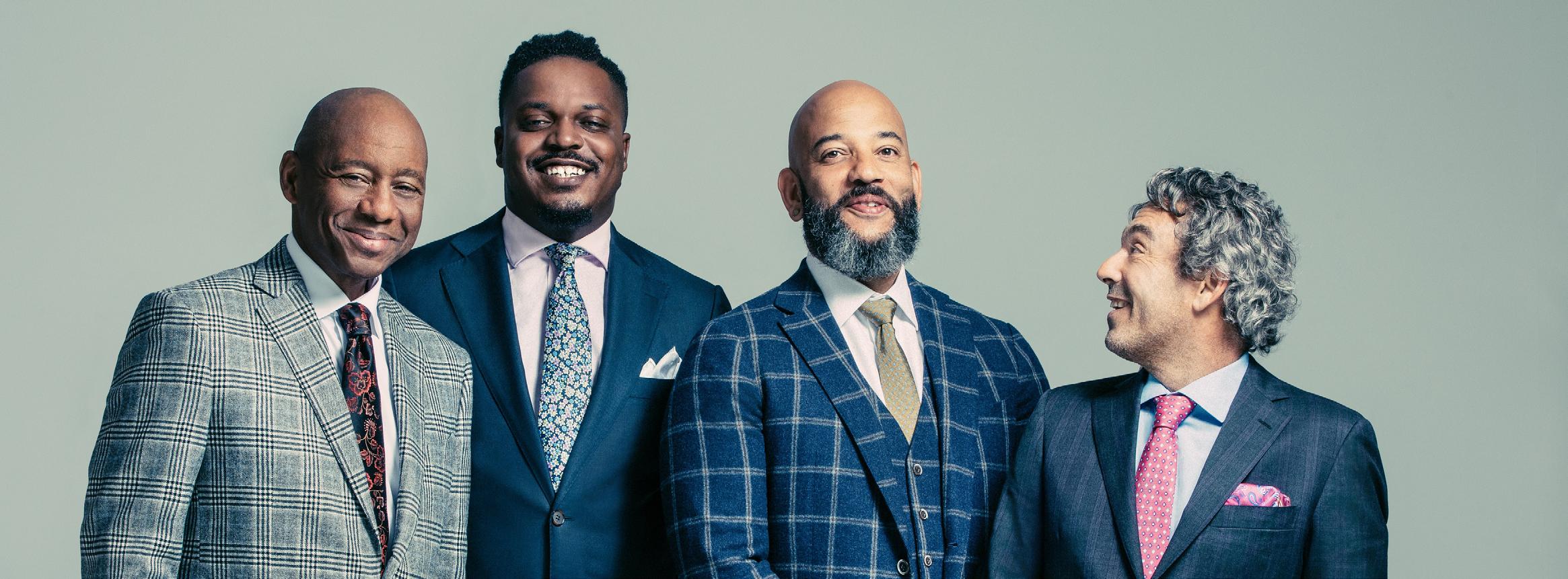
PRELUDE 6:30 PM
Prelude interview hosted by Robert John Hughes
AN EVENING WITH BRANFORD MARSALIS
THURSDAY, MARCH 14, 2024 · 7:30 PM
THE BAKER-BAUM CONCERT HALL
Support for this program provided by the:
Vail Memorial Fund
Branford Marsalis Quartet
Branford Marsalis, saxophone
Joey Calderazzo, piano
Eric Revis, bass
Justin Falkner, drums
PROGRAM
Works to be announced from stage.
NO INTERMISSION
ABOUT
La Jolla Music Society’s 2023–24 season is supported by The City of San Diego Commission for Arts and Culture, Banc of California, The Lodge at Torrey Pines, ProtoStar Foundation, Vail Memorial Fund, ResMed Foundation, Bright Events Rentals, Cafe Coyote, Rancho Coyote, Giuseppe's, Ace Parking, Brenda Baker and Steve Baum, Raffaella and John Belanich, Gordon Brodfuehrer, Mary Ellen Clark, Bert and Julie Cornelison, Elaine Galinson and Herbert Solomon, Joan and Irwin Jacobs, Angelina and Fred Kleinbub, Dorothea Laub, Vivian Lim and Joseph Wong, Jeanette Stevens, Debra Turner, Sue and Peter Wagener, and Bebe and Marvin Zigman.
Opus 3 Artists
Saxophonist Branford Marsalis, NEA Jazz Master, GRAMMY Award winner, and Tony Award nominee, is equally at home performing concertos with symphony orchestras and sitting in with members of the Grateful Dead, but the core of his musical universe remains the Branford Marsalis Quartet. After more than three decades of existence with minimal personnel changes, this celebrated ensemble is revered for its uncompromising interpretation of a kaleidoscopic range of both original compositions and jazz and popular classics.
Branford Marsalis last performed for La Jolla Music Society in a special event on October 17, 2014.
TheConrad.org · 858.459.3728 35
TABLE OF CONTENTS
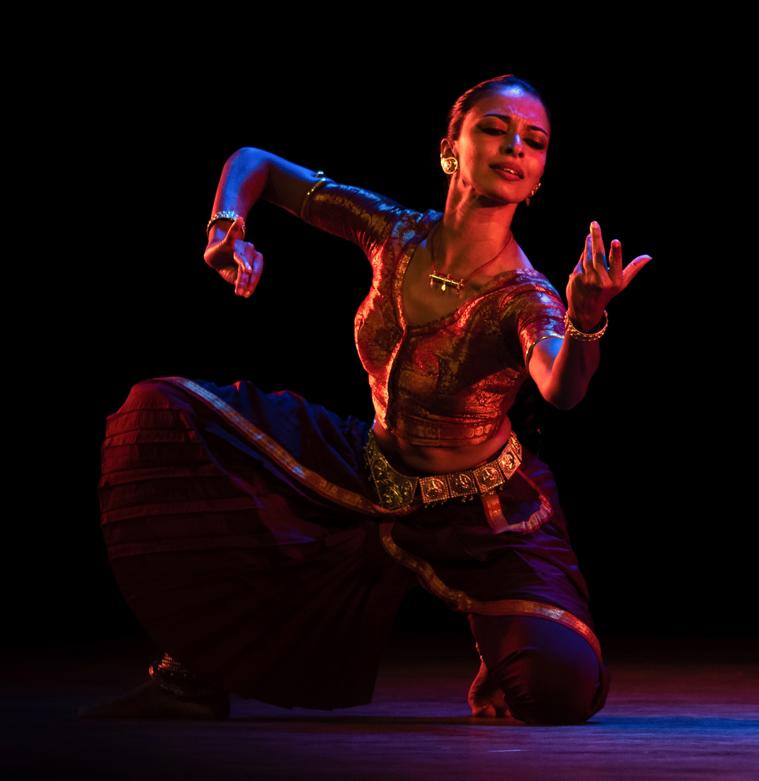
Support for this program provided by members of the Dance Society and presenting sponsor:
Elaine Galinson and Herbert Solomon
For additional program information and dancer profiles, please click here:

Nrityagram The Dance Village www.nrityagram.org
lynne@nrityagram.org
La Jolla Music Society’s 2023–24 season is supported by The City of San Diego Commission for Arts and Culture, Banc of California, The Lodge at Torrey Pines, ProtoStar Foundation, Vail Memorial Fund, ResMed Foundation, Bright Events Rentals, Cafe Coyote, Rancho Coyote, Giuseppe's, Ace Parking, Brenda Baker and Steve Baum, Raffaella and John Belanich, Gordon Brodfuehrer, Mary Ellen Clark, Bert and Julie Cornelison, Elaine Galinson and Herbert Solomon, Joan and Irwin Jacobs, Angelina and Fred Kleinbub, Dorothea Laub, Vivian Lim and Joseph Wong, Jeanette Stevens, Debra Turner, Sue and Peter Wagener, and Bebe and Marvin Zigman.
THE NRITYAGRAM DANCE ENSEMBLE in collaboration with THE CHITRASENA DANCE COMPANY ĀHUTI
WEDNESDAY, MARCH 20, 2024 · 7:30 PM
THURSDAY, MARCH 21, 2024 · 7:30 PM
THE BAKER-BAUM CONCERT HALL Āhuti
Sanskrit: Invoking | Pali: Offering SANKIRTANAM (a prayer)
DHĪRA SAMĪRÉ POORNĀRATĪ INTERMISSION INVOKING SHIVA ĀLĀP
Artistic Director / Choreographer / Sound Design
Surupa Sen
Music Composer
Pandit Raghunath Panigrahi
Rhythm Composers
Dhaneswar Swain (India)
Presanna Singakkara (Sri Lanka)
Surupa Sen
Dancers (Nrityagram)
Surupa Sen Pavithra Reddy Anoushka Rahman
Rohini Banerjee Daquil Miriyala
Dancers (Chitrasena)
Thaji Dias
Kushan Dharmarathna
Amandi Gomez
Musicians (India)
Jateen Sahu, lead vocal & harmonium
Rohan Dahale, chants & mardala (percussion)
Parshuram Das, bamboo flute
Siba Nayak, violin
Surupa Sen, lead voice (Poornāratī & Invoking Shiva) & manjira
Musician (Sri Lanka)
Sadew Athsara, Kandyan drum
Assistant Choreographer Heshma Wignaraja (Chitrasena)
Master Tailor
Ghulam Rasool
Executive Producer / Technical Director / Lighting Designer
Lynne Fernandez
Tour Coordinator
Joanna Futral
This presentation marks Nrityagram’s and Chitrasena’s La Jolla Music Society debuts.
36 THE CONRAD | HOME OF LA JOLLA MUSIC SOCIETY · 2023-24 SEASON
The performance runs for 115 minutes including a 20-minute intermission.
Āhuti
Sanskrit: Invoking | Pali: Offering
SANKIRTANAM (a prayer)
Wandering minstrels sing and dance in praise of Lord Krishna…
The lotus-eyed lord with the flute in his hands and a peacock feather in his hair.
The eternal lover, the yogi, the last refuge.
Protector of the universe, he is the purest of all beings.
The only truth.
Dancers
Anoushka Rahman, Rohini Banerjee, Pavithra Reddy, Daquil Miriyala
DHĪRA SAMĪRÉ
A poem from the Gita Govinda is interpreted through facial expressions (bhava) and gestures (mudra).
Written in Sanskrit in the 12th century by the poet saint Jayadeva, the Gita Govinda is a romantic ballad about the immortal love of Radha and Krishna. It is a song of love and longing that reflects the Vaishnava belief that all humankind is feminine energy (Radha) constantly seeking union with the one male godhead (Krishna).
Annoyed with Krishna who flirts with other women, Radha is in a state of jealousy and yearning.
The Sakhi (friend) brings a message to Radha that Krishna awaits her.
“In the dark of the night on the banks of the Yamuna river, adorned with wildflowers and jewels, Krishna awaits you.
His flute calls out your name, as he wanders through the forest caressing the breeze for your touch. He prepares a bed of love and his eager eyes search anxiously, at every stir of a leaf.
Do not linger, oh sensuous-hipped one.
Cast away these traitorous bells from your ankles and drape yourself with the night. Hasten to your beloved, he awaits you.”
Dancer
Surupa Sen
TheConrad.org · 858.459.3728 37
TABLE OF CONTENTS
POORNĀRATĪ
In most South Asian traditions, the arts serve as a medium to attain the highest state of being. Temple rituals integrate dance as an essential medium of worship to invoke and propitiate the powers that govern the natural order of the universe.
Poornāratī, which means complete offering, seeks to invoke the principles of the Universe, both male and female, that we may dance in their Presence.
Odissi Dancers
Anoushka Rahman, Rohini Banerjee, Daquil Miriyala
Kandyan Dancers
Thaji Dias, Kushan Dharmarathna, Amandi Gomez
INTERMISSION
INVOKING SHIVA
Attributed to Ravana, Sri Lanka’s great warrior king, who was a devotee of Shiva, the God of dance and destruction.
Shiva!
From the forest of your matted locks descends the celestial river Ganga. A mighty serpent garlands you lovingly, the glittering gem in his magical hood radiates brilliance, that anoints the faces of the four-directions with a delicate hue.
Adorned only by the sky, a new-born moon jewels your locks and your forehead smoulders with the fire of your third eye.
Your ceaseless drum song pervades the universe, as you dance your fearsome Tandava.
Perfect consort to Himalaya’s daughter, you are the ever-compassionate destroyer of evil.
Opening your third eye you burnt to ashes the God of Love, the five-arrowed Kamadeva, disrupter of your meditation. You are the Universe.
Invincible.
Infinite.
Eternal.
On you I meditate.
Dance on the funeral pyres in my heart and release me from this universe.
Dancers
Thaji Dias, Pavithra Reddy
38 THE CONRAD | HOME OF LA JOLLA MUSIC SOCIETY · 2023-24 SEASON
ĀLĀP
The Kandyan and Odissi dance traditions meet in space, to challenge, combine and embrace each other through musical conversation and rhythmic dialogue.
Dancers
Pavithra Reddy, Rohini Banerjee, Thaji Dias, Amandi Gomez, Anoushka Rahman, Daquil Miriyala, Kushan Dharmarathna
ABOUT THE DANCE FORMS
KANDYAN DANCE
Kandyan dance comes from Kandy, an area in the Central hills region in Sri Lanka. According to legend, the origins of the dance lie in an exorcism ritual known as the Kohomba Kankariya, which was performed by shamans from India, who came to the island on the request of a king suffering from a mysterious illness. After the performance of the ritual, the illness vanished and the local people adopted the dance.
Originally performed by dancers who were identified as a separate caste and aligned to the Temple of the Tooth, the dance declined when support from the Kandyan kings ended in the colonial period.
Kandyan Dance was adapted for the stage in the 1940s, by Chitrasena. His wife and dance partner, Vajira, was the first professional female Kandyan dancer, and together they established Kandyan dance as a performance art. Their popularity helped to reduce the caste barriers surrounding the dance and made it accessible to an urban, contemporary audience.
ODISSI
For centuries, a temple has looked out at a turbulent sea, its walls dancing a prayer to the rising sun. Magnificent ruins like these, in Odisha in Eastern India, confirm that Odissi was performed as far back as 200 BCE. Originally a sacred ritual dedicated to the gods, Odissi is one of the oldest dance traditions in the world. Its sinuous forms, languorous limbs and rapt expressions frozen in stone tell of a past rich in dance, music, myth and legend.
Odissi speaks of love and union, between human and divine, transporting viewers to enchanted worlds of magic and spirituality. Its sensuousness and lyricism reflect both the motifs of Odisha temple sculpture as well as the poetry from the deep wellsprings of Oriya music.
Exclusive USA Tour Representation
Pentacle
Sandy Garcia
sandyg@pentacle.org
www.pentacle.org
TheConrad.org · 858.459.3728 39
NRITYAGRAM & CHITRASENA - PROGRAM NOTES
TABLE OF CONTENTS
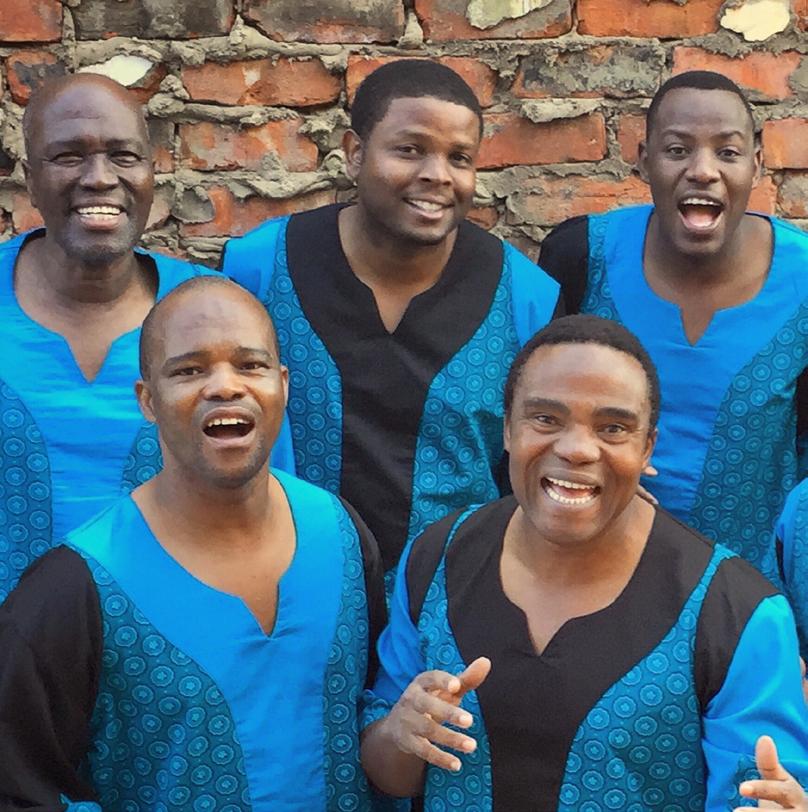
LADYSMITH BLACK MAMBAZO
FRIDAY, MARCH 22, 2024 · 7:30 PM
THE BAKER-BAUM CONCERT HALL
LADYSMITH BLACK MAMBAZO
Thulani Shabalala, Sibongiseni Shabalala, Thamsanqa Shabalala, Msizi Shabalala, Albert Mazibuko, Abednego Mazibuko, Mfanafuthi Dlamini, Pius Shezi and Sabelo Mthembu
PROGRAM
Works to be announced from stage.
NO INTERMISSION
Over Sixty Years Later, the Impossible Dream Continues
Let us tell you a story. An impossible-to-believe yet true story. Once upon a time there was a teenage boy working on his family farm in apartheid South Africa. The year was 1960. This boy loved to sing, in fact he loved to sing so much that he allowed himself an impossible dream. In his dream he would create a group of singers, from his family members, to sing traditional South African songs. His group would perform all over South Africa and they would become the greatest music group his country would ever know. How could such a dream come to a young farm boy in a country rife with hardship, violence and trouble? Well, Joseph Shabalala was this young farm boy and his dream would become Ladysmith Black Mambazo.
The year 2023 marks the 63rd anniversary of Joseph Shabalala forming Ladysmith Black Mambazo. His group would not only conquer all of South Africa, but would become a worldwide phenomenon, winning more GRAMMY Awards (five), and receiving more GRAMMY Award nominations (nineteen), than any World Music group in the history of recorded music.
During the dark years of South African Apartheid, Ladysmith Black Mambazo followed a path of peaceful protest through songs of hope and love. When Nelson Mandela was released from prison, in 1990, he said that Ladysmith Black Mambazo’s music was a powerful message of peace that he listened to while in jail. When Mandela was awarded the Nobel Peace Prize, in 1993, he asked the group to join him at the ceremony. It was Mandela who called Ladysmith Black Mambazo “South Africa’s cultural ambassadors to the world.”
The group sings a traditional music style called isicathamiya (is-cot-a-mee-ya), which developed in the mines of South Africa. It was there that black workers were taken to work far away from their homes and families. Poorly housed and paid, the mine workers would entertain themselves, after a six-day work week, by singing songs into the wee hours on Saturday night and Sunday. When the miners returned to their homes, this musical tradition returned with them.
La Jolla Music Society’s 2023–24 season is supported by The City of San Diego Commission for Arts and Culture, Banc of California, The Lodge at Torrey Pines, ProtoStar Foundation, Vail Memorial Fund, ResMed Foundation, Bright Events Rentals, Cafe Coyote, Rancho Coyote, Giuseppe's, Ace Parking, Brenda Baker and Steve Baum, Raffaella and John Belanich, Gordon Brodfuehrer, Mary Ellen Clark, Bert and Julie Cornelison, Elaine Galinson and Herbert Solomon, Joan and Irwin Jacobs, Angelina and Fred Kleinbub, Dorothea Laub, Vivian Lim and Joseph Wong, Jeanette Stevens, Debra Turner, Sue and Peter Wagener, and Bebe and Marvin Zigman.
In the mid-1980s, American singer/songwriter Paul Simon famously visited South Africa and incorporated the group’s rich harmonies into his renowned Graceland album—a landmark recording considered seminal in introducing World Music to mainstream audiences. This brought the group to the attention of music lovers all over the world, the beginning of a global musical career that shows no sign of ending.
After leading his group for over 50 years and approaching his 75th birthday, Joseph Shabalala retired in 2014, handing the leadership to his three sons, Thulani, Sibongiseni and Thamsanqa Shabalala. Having joined their father’s group in 1993, their many years of training had prepared them in ways no others could be trained. Now, carrying their father’s dream into the future, the Shabalala Family continues the group’s success for the world to hear.
This presentation marks Ladysmith Black Mambazo's La Jolla Music Society debut.
40 THE CONRAD | HOME OF LA JOLLA MUSIC SOCIETY · 2023-24 SEASON
Support for this program provided by the: Vail Memorial Fund

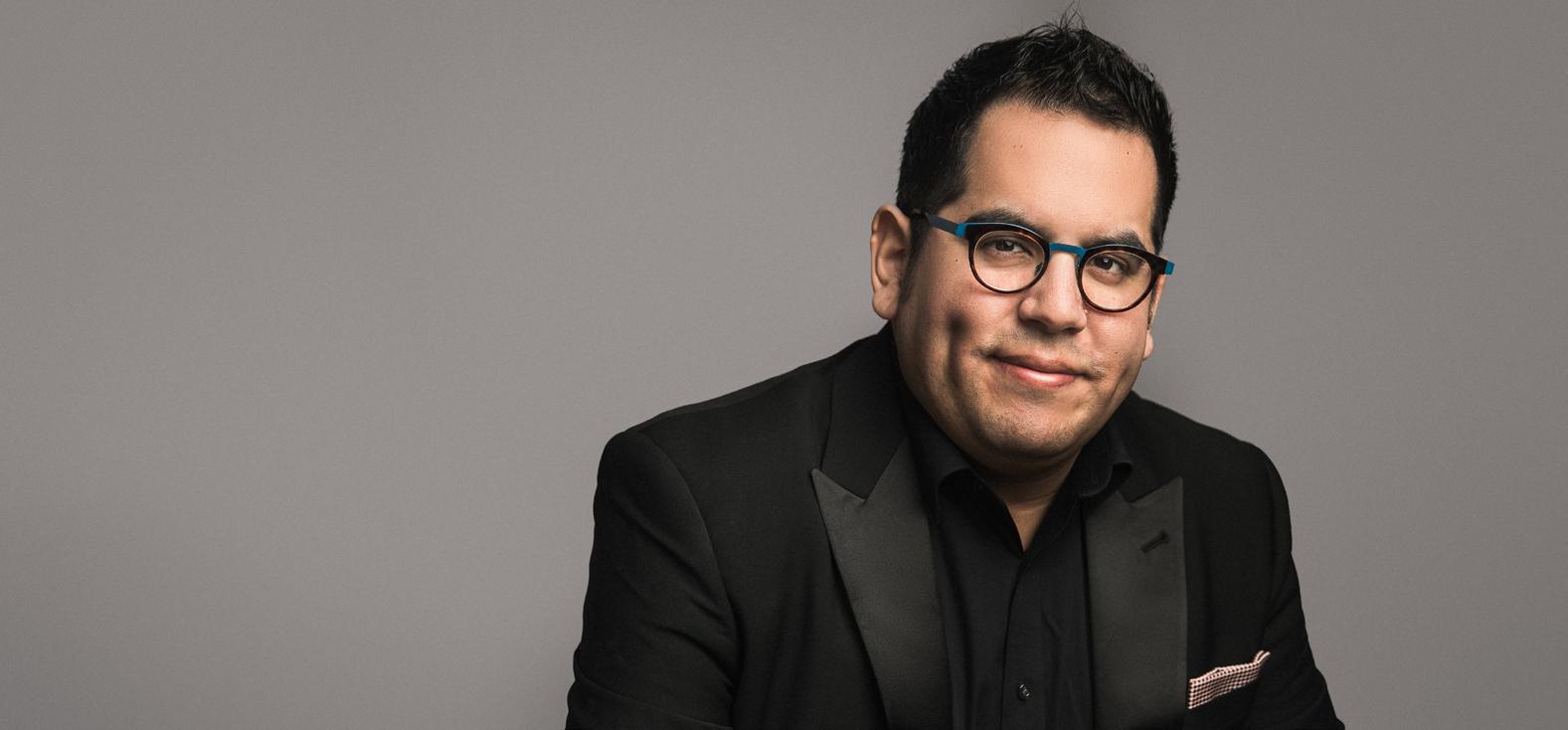
PRELUDE 6:30 PM Lecture
RAY CHEN, violin & JULIO ELIZALDE, piano
THURSDAY, MARCH 28, 2024 · 7:30 PM THE BAKER-BAUM CONCERT HALL
TARTINI Violin Sonata in G Minor “Devil’s Trill” (arr. Kreisler) (1692–1770) Larghetto affettuoso
Allegro (Tempo giusto)
Andante – Allegro
BEETHOVEN Sonata in C Minor for Violin and Piano, Opus 30, No. 2 (1770–1827) Allegro con brio
Adagio cantabile
Scherzo: Allegro
Finale: Allegro–Presto
INTERMISSION
J.S. BACH Partita No. 3 in E Major for Unaccompanied Violin, BWV 1006 (1685–1750) Preludio
Loure
Gavotte en Rondeau
Bourrée
La Jolla Music Society’s 2023–24 season is supported by The City of San Diego Commission for Arts and Culture, Banc of California, The Lodge at Torrey Pines, ProtoStar Foundation, Vail Memorial Fund, ResMed Foundation, Bright Events Rentals, Cafe Coyote, Rancho Coyote, Giuseppe's, Ace Parking, Brenda Baker and Steve Baum, Raffaella and John Belanich, Gordon Brodfuehrer, Mary Ellen Clark, Bert and Julie Cornelison, Elaine Galinson and Herbert Solomon, Joan and Irwin Jacobs, Angelina and Fred Kleinbub, Dorothea Laub, Vivian Lim and Joseph Wong, Jeanette Stevens, Debra Turner, Sue and Peter Wagener, and Bebe and Marvin Zigman.
Ray Chen is managed by: Columbia Artists Music LLC www.camimusic.com
General Manager: Jean-Jacques Cesbron & Adam Tilley
Ray Chen is an Exclusive Recording Artist of Decca Classics
Gigue
BAZZINI La Ronde des Lutins, Opus 25 (1818–1897)
DVOŘÁK Slavonic Dance No. 2 in E Minor, Opus 72 (arr. Kreisler) (1841–1904)
COREA Spain (arr. Elizalde and Chen) (1941–2021)
Ray Chen, violin; Julio Elizalde, piano
Ray Chen last performed for La Jolla Music Society in the Discovery Series on March 6, 2011. Julio Elizalde last performed for La Jolla Music Society in the Discovery Series on January 26, 2020.
TheConrad.org · 858.459.3728 41
TABLE OF CONTENTS
Program notes by Eric Bromberger
Violin Sonata in G Minor, “Devil’s Trill” (arr. Kreisler)
GIUSEPPE TARTINI
Born April 8, 1692, Pirano, Istria
Died February 26, 1770, Padua, Italy
Composed: 1713
Approximate Duration: 16 minutes
The life of Giuseppe Tartini reads like something out of a novel, not a music history text. As a boy, he learned to play the violin and to fence and was so good at both that he supported himself at law school by giving violin and fencing lessons—he even thought briefly of making a career as a fencing-master. But fate intervened, as it so often does: At age 20, Tartini eloped with one of his violin students, only to discover that his youthful bride was under the protection of her uncle, the archbishop of Padua, who came after Tartini with a vengeance. The young violin-and-fencing teacher had to flee Padua for Assisi, where he hid in a monastery. Only after the archbishop had calmed down (which took two years) could Tartini return to Padua. He had used his time in the cloister to study composition, and he now devoted himself completely to music, becoming music director of Saint Anthony’s in Padua and eventually founding a violin school; this became so famous that it attracted students from all over Europe, earning it the nickname “School of the Nations.” A prolific composer (about 350 works survive), Tartini devoted himself to mathematical speculation and studies in musical theory during his later years.
His most famous work is the Violin Sonata in G Minor, which Tartini said was inspired when the devil appeared to him one night in a dream and played it through for him; the next day Tartini wrote down what he could remember of the sonata he had heard in his dream. The music acquired the nickname “Devil’s Trill” from the fiendishly difficult trilled passages in its last movement; many is the violinist who, faced with having to play these passages, has been quite ready to agree that this music did in fact come straight from the devil. The sonata’s difficulties lie not just in the last movement’s famous trills, for the violinist must also be able to execute graceful string crossings, double-stops, quick grace notes, and the sudden alternation of a cantabile line with fiery attacks. Furthermore, the violin plays during every second of this music.
The “Devil’s Trill” is in three movements. The opening Larghetto affettuoso, somber and wistful, gives way to an Allegro that alternates dramatic gestures with fluid and flowing passages demanding the most poised bow arm possible. The famous last movement is actually two movements in one, for Tartini alternates the opening Grave and the Allegro assai, with its infamous trills. What makes these trills so difficult is that the violinist must simultaneously play a bowed melody on another string; near the close Tartini has the violinist break away for a long solo cadenza before a grand close on the Grave melody.
The “Devil’s Trill” is one of the great violin sonatas, but Tartini was not fully satisfied with it. Much later, he wrote to a friend: “The piece I then composed, ‘The Devil’s Sonata,”
although the best I ever wrote, how far was it below the one I heard in my dream!”
On this program, the sonata is performed in the edition prepared by violinist Fritz Kreisler.
Sonata in C Minor for Violin and Piano, Opus 30, No. 2 LUDWIG
VAN BEETHOVEN
Born December 17, 1770, Bonn, Germany
Died March 26, 1827, Vienna
Composed: 1802
Approximate Duration: 24 minutes
Beethoven’s Violin Sonata in C Minor is one of the set of three that he wrote in the small village of Heiligenstadt outside Vienna during the summer and fall of 1802. This was a period of extraordinary distress for the composer, for it was during the months at Heiligenstadt that Beethoven was finally forced to accept the inevitability of his deafness. The choice of key for this sonata is important, for C minor was the key Beethoven employed for works of unusual intensity. The recently completed “Pathetique” Sonata, Fourth String Quartet, and Third Piano Concerto were in C minor, and in the next several years Beethoven would use that key for the Funeral March of the Eroica, the Fifth Symphony, and the Coriolan Overture. The musical conflict that fires those works is also evident in this sonata, which is—with the Kreutzer Sonata—the most dramatic of Beethoven’s ten violin sonatas.
The opening movement is marked Allegro con brio, the same indication Beethoven would later use for the opening movements of the Third and Fifth Symphonies, and the sonata’s first movement has a dramatic scope similar to those symphonies. It opens quietly with a recurrent brooding figure that ends with a sudden turn, like the quick flick of a dragon’s tail. The violin soon picks this up and also has the second subject, which marches along clipped dotted rhythms. There is no exposition repeat, and Beethoven slips into the development quietly, but soon the energy pent up in these simple figures is unleashed—this dramatic music features massive chording by both instruments and drives to a huge climax.
By contrast, the Adagio cantabile opens with a melody of disarming gentleness, once again announced by the piano, and much of this movement sings gracefully. As it develops, however, the accompaniment grows more complex, and soon these murmuring runs begin to take over the music; Beethoven makes sharp dynamic contrasts before bringing the movement to a quiet close. The brief Scherzo: Allegro is full of stinging accents and rhythmic surprises; its trio section is a subtle variation of the movement’s opening theme, here treated in canon.
The Finale: Allegro returns to the mood of the opening movement—again there is a quiet but ominous opening full of suppressed energy that will later explode to life. This finale is in modified sonata-rondo form, and despite an occasional air of play and some appealing lyric moments, the movement partakes of the same atmosphere of suppressed tension that has marked the entire sonata.
42 THE CONRAD | HOME OF LA JOLLA MUSIC SOCIETY · 2023-24 SEASON
RAY CHEN & JULIO ELIZALDE - PROGRAM NOTES
Beethoven brings it to a suitably dramatic close with a blazing coda marked Presto that remains resolutely in C minor.
Partita No. 3 in E Major for Unaccompanied Violin, BWV 1006
JOHANN SEBASTIAN BACH
Born March 21, 1685, Eisenach, Germany
Died July 28, 1750, Leipzig, Germany
Composed: 1720
Approximate Duration: 19 minutes
Bach’s six sonatas and partitas for unaccompanied violin date from about 1720, when Bach was music director at the court of Anhalt-Cöthen. The three sonatas are in sonata di chiesa form, employing a slow-fast-slow-fast sequence of movements, but the structure of the three partitas is more complex. The term partita—which suggests a collection of parts—refers to a suite of dances, and Bach wrote his three partitas for unaccompanied violin as sets of dance movements. While each of the sonatas has four movements, of which the second is always a fugue, the partitas have more movements (five to seven) and are somewhat freer in form, as Bach adapted a number of old dance forms to the capabilities of the solo violin. In his final partita for unaccompanied violin, Bach virtually dispenses with the standard allemande-courante-sarabande-gigue sequence of the partita and instead creates an entirely original structure consisting of a stunning opening movement, a varied series of dances, and a concluding gigue (the only survivor from the traditional sequence).
The title Preludio suggests music that is merely an introduction to something else, but this Preludio is a magnificent work in its own right, in some ways the most striking of the seven movements of this partita. Built on the jagged, athletic opening theme, this movement is a brilliant flurry of steady sixteenth-notes, featuring complicated string-crossings and racing along its blistering course to an exciting conclusion. Among the many pleasures of this music is Bach’s use of a technique known as bariolage, the rapid alternation between the same note played on stopped and open strings, which gives this music some of it characteristic glinting brilliance. It is no surprise that this Preludio is among the most popular pieces Bach ever wrote, and those purists ready to sneer at Leopold Stokowski’s arrangement for full orchestra should know that Bach beat him to it: in 1731, ten years after writing the violin partita, Bach arranged this Preludio as the opening orchestral movement of his Cantata No. 29, “Wir danken dir, Gott.”
Bach follows this striking beginning with a sequence of varied dances. The term Loure originally referred to a form of French bagpipe music and later came to mean a type of slow dance accompanied by the bagpipe. Bach dispenses with the bagpipe accompaniment, and in this elegant movement the violin dances gracefully by itself. Bach was scrupulously accurate in his titles, and the Gavotte en Rondeau (gavotte in the form of a rondo) conforms to both these forms: a gavotte is an old French dance in common time that begins on the third beat, while rondo form asks that one section recur throughout. This vigorous and poised
movement features some wonderful writing for the violin as the original dance theme repeats in many guises. The two minuet movements are sharply contrasted: Menuet I takes its character from the powerful chordal beginning, while Menuet II, dancing gracefully, is more subdued. The Bourrée drives along its lively course, energized by a powerful upbeat, and the Gigue (an old English dance related to the jig) brings the work to a lively close.
La Ronde des Lutins, Opus 25 ANTONIO BAZZINI
Born March 11, 1818, Brescia, Italy
Died February 10, 1897, Milan
Composed: 1852
Approximate Duration: 5 minutes
Antonio Bazzini was one of the most distinguished Italian musicians of the 19th century, and his career spanned that century. He studied the violin as a boy, was encouraged by Paganini, and made his reputation as a virtuoso violinist. In his twenties, he was based in Germany, where his playing was admired by Mendelssohn and Schumann, and concert tours took him across Europe. But at age 46, Bazzini gave up his career as a touring virtuoso, returned to Italy, and devoted himself to composition and teaching. He wrote music for the stage, for orchestra, and for chamber ensembles, and he eventually became the director of the Milan Conservatory, where his students included Puccini, Mascagni, and Catalani.
It was a distinguished career, but Bazzini would be completely forgotten today were it not for a piece he wrote in 1852 for violin and piano titled La Ronde des Lutins (Dance of the Goblins). Subtitled Scherzo Fantastique, this four-minute dazzler might nominally be a portrait of dancing goblins, but it is really a challenge of hair-raising difficulty for violinists, who must master all manner of violinist fireworks and technical hurtles. These include passages played entirely in artificial harmonics, passages played entirely with left-handed pizzicato, fingered tenths, long passages played with spiccato upbows, and passages set so high that they are almost beyond the end of the fingerboard. An opening flourish from the piano sets matters in motion, and the violinist enters with blistering main theme. There are lyric episodes along the way, but the emphasis here is on technical wizardry, speed, virtuosity, and dazzle, and these have made La Ronde des Lutins a favorite of both audiences and violinists.
Slavonic Dance No. 2 in E Minor, Opus 72 (arr. Kreisler) ANTONÍN DVOŘÁK
Born September 8, 1841, Muhlhausen, Bohemia
Died May 1, 1904, Prague
Composed: 1886
Approximate Duration: 5 minutes
Success came late to Dvořák. For years he labored in obscurity, supporting himself and his family as an orchestral violist and teacher, and then came the break: his music attracted the attention (and admiration) of Brahms, who alerted his own publisher, Simrock, to the
TheConrad.org · 858.459.3728 43 RAY CHEN & JULIO ELIZALDE - PROGRAM NOTES
TABLE OF CONTENTS
talents of this unknown Bohemian composer. Simrock commissioned a set of Slavonic Dances from Dvořák, suggesting that he model them on Brahms’ own vastly popular Hungarian Dances. Dvořák composed a set of eight dances—originally for piano four-hands—between April and August 1878 and then orchestrated them. They were an instant success and quickly traveled around the world–performances followed in Germany, France, Italy, England, and even distant America. Simrock paid Dvořák only a modest fee for this music, and the publisher did quite well financially on its tremendous success. For his part, Dvořák got something much better than money: he achieved worldwide fame, and the Slavonic Dances were really the music that launched his career. Simrock of course wanted another set of dances, and eight years later Dvořák wrote a further set of eight, which were published as his Opus 72 (those eight years made a tremendous difference in Dvořák’s career: he asked–and got!–ten times as much for this set as he was paid for the first).
The Slavonic Dance E Minor is a starodávný, a threebeat dance also used by Dvořák’s friend Leoš Janáček, who referred to it as “an old-time dance.” Its opening sounds like mournful Romany fiddling—Dvořák stresses that the playing should be molto espressivo; the central episode is poised, and after all this energy the dance comes to a very effective close, marked pianissimo.
Spain (arr. Chen and Elizalde)
CHICK COREA
Born June 12, 1941, Chelsea, Massachusetts
Died February 9, 2021, Tampa Bay, Florida
Composed: 1971
Approximate Duration: 9 minutes
Jazz pianist and composer Chick Corea grew up playing jazz in the Boston area—he joined Miles Davis’ band while still a teenager and collaborated with Davis over the following decade. One of the transformative moments in Corea’s career was his discovery of Latin music—its characteristic rhythms, songs, and dance forms—and that influence is strongly felt in what may be Corea’s most famous work, Spain. Corea composed Spain in 1971, when he was 30, and it first appeared on the album Light as a Feather. The piece represents a fusion of jazz and Latin music, particularly the samba. In its original form, Corea begins Spain with the melody of the second movement of Joaquin Rodrigo’s Concierto de Aranjuez, and the chord progression of that haunting theme becomes the basis for Corea’s samba-like extension. Spain has been heard in countless arrangements (it is referred to as a “jazz standard” for very good reasons), and this concert concludes with an arrangement of Spain for violin and piano by this evening’s artists, Ray Chen and Julio Elizalde.
44 THE CONRAD | HOME OF LA JOLLA MUSIC SOCIETY · 2023-24 SEASON
RAY CHEN & JULIO ELIZALDE - PROGRAM NOTES

PRELUDE 2 PM
Lecture by Michael Gerdes
JAKUB JÓZEF ORLIŃSKI
WITH IL POMO D’ORO BEYOND
SUNDAY, APRIL 7, 2024 · 3 PM
THE BAKER-BAUM CONCERT HALL
MONTEVERDI E pur io torno qui from L'incoronazione di Poppea (1567–1643) Voglio di vita uscir
MARINI Passacalio from Per ogni sorte di strumento musicale, Op. 22 (1594–1663)
CACCINI Amarilli, mia bella from Le nuove musiche (1551–1618)
FRESCOBALDI Così mi disprezzate? from Arie musicali, Book 1 (1583–1643)
KERLL Sonata for Two Violins in F Major (1627–1693)
STROZZI L’amante consolato from Cantate, ariette e duetti, Op. 2 (1619–1677)
CAVALLI Incomprensibil nume from Pompeo Magno (1602–1676)
PALLAVICINO Sinfonia from Demetrio (1630–1688)
NETTI Three Arias from La Filli (1649–1686) Misero core Si, si, si scioglia si Dolcissime catene
SARTORIO La certezza di tua fede from Antonino e Pompeiano (1630–1680)
NETTI Two Arias from L’Adamiro Quanto più la donna invecchia
Son vecchia, patienza
JARZĘBSKI Tamburetta from Canzoni e concerti (1590–1649)
La Jolla Music Society’s 2023–24 season is supported by The City of San Diego Commission for Arts and Culture, Banc of California, The Lodge at Torrey Pines, ProtoStar Foundation, Vail Memorial Fund, ResMed Foundation, Bright Events Rentals, Cafe Coyote, Rancho Coyote, Giuseppe's, Ace Parking, Brenda Baker and Steve Baum, Raffaella and John Belanich, Gordon Brodfuehrer, Mary Ellen Clark, Bert and Julie Cornelison, Elaine Galinson and Herbert Solomon, Joan and Irwin Jacobs, Angelina and Fred Kleinbub, Dorothea Laub, Vivian Lim and Joseph Wong, Jeanette Stevens, Debra Turner, Sue and Peter Wagener, and Bebe and Marvin Zigman.
MORATELLI Lungi dai nostri cor from La Faretra smarrita (1640–1706)
Jakub Józef Orliński, countertenor
Il Pomo d’Oro
Alfia Bakieva, violin I; Jonathan Ponet, violin II; Giulio D’Alessio, viola; Rodney Prada, viola da gamba & lirone; Ludovico Minasi, cello; Jonathan Alvarez, bass; Miguel Rincon, theorbo, archlute, & guitar; Alberto Gaspardo, harpsichord & organ; Margherita Burattini, harp; Pietro Modesti, cornetto & flute
This presentation marks Jakub Józef Orliński’s La Jolla Music Society debut. Il Pomo d’Oro last performed for La Jolla Music Society in a Connect to the Conrad performance on January 18, 2023
TheConrad.org · 858.459.3728 45
TABLE OF CONTENTS
Monteverdi
L’incoronazione di Poppea
E pur io torno qui, qual linea al centro qual foco a sfera e qual ruscello al mare, e se ben luce alcuna non m’appare, ah, so ben io, che sta’l mio sol qui dentro. Caro tetto amoroso, albergo di mia vita, e del mio bene, il passo e’l cor ad inchinarti viene. Apri un balcon, Poppea, col bel viso in cui son le sorti mie, previeni, anima mia, precorri il die. Sorgi, e disgombra omai, da questo ciel caligini e tenebre con il beato aprir di tue palpebre.
Sogni, portate a volo, fate sentire in dolce fantasia questi sospir alla diletta mia. Ma che veggio, infelice?
Non già fantasmi o pur notturne larve, son questi i servi di Nerone; ahi, ahi dunque agl’insensati venti
Io diffondo i lamenti. Necessito le pietre a deplorarmi. Adoro questi marmi, amoreggio con lagrime un balcone, e in grembo di Poppea dorme Nerone. Ha condotti costoro, per custodir se stesso dalle frodi. O salvezza de’ Prencipi infelice: dormon profondamente i suoi custodi. Ah’, ah’, perfida Poppea, son queste le promesse e i giuramenti, ch’accesero il cor mio?
Questa è la fede, o dio, dio, dio!
Io son quell’Ottone, che ti seguì, che ti bramò, che ti servì, quell’Ottone che t’adorò, che per piegarti e intenerirti il core di lagrime imperlò preghi devoti, gli spirti a te sacrificando in voti. M’assicurasti al fine ch’abbracciate averei nel tuo bel seno le mie beatitudini amorose; io di credula speme il seme sparsi, ma l’aria e’l cielo a’ danni miei rivolto.
Voglio di vita uscir
Voglio di vita uscir, voglio che cadano quest’ossa in polve e queste membra in cenere, e che i singulti miei tra l’ombre vadano, già che quel piè ch’ingemma l’herbe tenere sempre fugge da me, ne lo trattengonoi lacci, ohimè, del bel fanciul di Venere.
Vo che gl’abissi il mio cordoglio vedano, e l’aspro mio martir le furie piangano, e che i dannati al mio tormento cedano. A Dio crudel, gl’orgogli tuoi rimangano a incrudelir con gl’altri.
A te rinunzio, né vo’ più che mie speme in te si frangano.
S’apre la tomba, il mio morir t’annuntio. Unalagrimaspargi, etalfindonami di tua tarda pietade un solo nuntio, e s’amando t’offesi, homai perdonami.
The Coronation of Poppea
And here I am again, like a line returning to its origin Or like fire-rays to the sun or a river to the sea, and although I see no light within I know full well that, ah, my star does here reside. Dear and cherished dwelling place, refuge of my life and love, my heart has come to pay obeisance to you. Open a window, Poppea, Appear, my love, your beauteous face, arbiter of my fate, anticipating the dawn. Arise and rid the skies of all this mist and darkness with the blessed opening of your eyes. May the wings of dreams transport these sighs of mine as delicious fantasies to my beloved. But what do I see, wretch that I am? These are no phantoms or specters of the night but Nero’s servants; alas, and so to the heartless winds I propagate my sighs. I beg these stones to weep for me, these marble halls, how I long for them, my tears of love directed to a window while Nero sleeps in Poppea’s arms. He has ordered them to defend him from treachery. Ah, precarious security of princes: his own guards now fast asleep! Ah, ah, faithless Poppea, are these the vows and promises that set my heart aflame?
Such is fidelity, o gods!
I am the same Ottone who pursued and longed for you, who served you, yes, Ottone, who adored you and, to bend and touch your heart, shed loving tears of supplication and sacrificed my sanity to you in love. At last you gave your word that, clasped to your fair breast, the fullest bliss of love I would receive; I sowed the seed of credence and of hope, but now the heavens have forsaken me.
I wish to depart this life
I wish to depart this life and for these bones and limbs to crumble into dust and ash and my sobs to die away among the shadows because her feet that grace the tender grass are always running from me, nor are they caught, alas, in the snares of Venus’ cherub-boy.
I want Hell to be a witness to my anguish and the furies to weep for my bitter pain a nd the damned to be awed by my agony. Farewell, cruel one, may your arrogance live on to torture others.
I give you up: for you to dash my hopes is no longer my desire.
The tomb is opening: witness now my death.
Shed a tear and, at the last, display a single sign of your belated pity, and if I caused offence by loving you, pardon me, I pray.
46 THE CONRAD | HOME OF LA JOLLA MUSIC SOCIETY · 2023-24 SEASON JAKUB JÓZEF ORLI Ń SKI WITH IL POMO D'ORO - TEXTS & TRANSLATIONS
Caccini
Amarilli, mia bella
Amarilli, mia bella, Non credi, o del mio cor dolce desio, D'esser tu l'amor mio?
Credilo pur: e se timor t'assale, prendi questo mio strale, Aprimi il petto e vedrai scritto in core: Amarilli, Amarilli, Amarilli è il mio amore.
Frescobaldi
Così mi disprezzate?
Così mi disprezzate?
Così voi mi burlate?
Tempo verrà, ch’Amore farà di vostro core quel, che fate del mio, non più parole, addio!
Datemi pur martiri, burlate i miei sospiri, negatemi mercede, oltraggiate mia fede, ch’in voi vedrete poi, quel che mi fate voi. Beltà sempre non regna, e s’ella pur v’insegna a dispregiar mia fè, credete pur a me, che s’oggi m’ancidete, doman vi pentirete. Non nego già, ch’in voi Amor ha i pregi suoi, ma sò, ch’il tempo cassa beltà, che fugge, e passa, se non volete amare, io non voglio penare.
Il vostro biondo crine, la guance purpurine veloci più che Maggio tosto faran passaggio, prezzategli pur voi, ch’io riderò ben poi.
Strozzi
L’amante consolato
Son tanto ito cercando Che pur alfin trovai colei che desiai duramente penando, oh questa volta sì ch’io non m’inganno, s’io non godo mio danno!
Son tali quei contenti che pur alfin io provo che tutto mi rinovo doppo lunghi tormenti. Ma tutti com’io fo far non sapranno chi non gode suo danno!
Cavalli
Incomprensibil nume
Incomprensibil nume, che sei per tutto e fuor di te non sei; Luce, che più che miro, e meno intendo, delle vittorie mie grazie ti rendo. Noto solo a te stesso principio eterno ed infinito fine; ch’il tutto vai dal nulla ognor traendo delle vittorie mie grazie ti rendo.
O my lovely Amaryllis
O my lovely Amaryllis, Do you not know, o my heart’s sweet desire, that you are the one I love?
Know it to be so and, if you still have doubts, Take this arrow of mine, Open my breast and see written on my heart: Amaryllis is my love.
Is this how you scorn me?
Is this how you scorn me?
Is this how you mock me?
The time will come when Love will do to your heart what you are doing to mine. No more words, farewell! Continue to torment me, mock my sighs, deny me pity, profane my constancy, but one day you will suffer what you are doing to me now. Beauty does not reign forever, and if it goads you into scorning my fidelity, believe me when I say that if today you injure me tomorrow you will repent of it.
I do not deny that Love holds you in high esteem, But I also know that time invalidates beauty which slips away and fades, and if you do not wish to love, I do not wish to suffer either. Your golden hair and rosy cheeks will fade more swiftly than the month of May, so make the most of them for the last laugh will be mine.
The Consoled Lover I sought so hard And finally found my longed-for lady but suffering greatly through it. Ah, this time I shan’t be so deluded And won’t be a glutton for punishment! Such are the delights that I am finally enjoying that I feel reborn after such long torment. But not everyone will know to do as I do. to not be a glutton for punishment!
Incomprehensible god
Incomprehensible god, who are immanent yet disincarnate; o star, the longer gazed upon, the less I apprehend you; I thank you for my victories. Only your purpose do I acknowledge, eternal and infinite source that brings forth all from nothingness; I thank you for my victories.
TheConrad.org · 858.459.3728 47
JAKUB JÓZEF ORLI Ń SKI WITH IL POMO D'ORO - TEXTS & TRANSLATIONS
TABLE OF CONTENTS
Netti
La Filli (La moglie del fratello)
Aria
Misero core, dal crudo amore che speri tu?
Altra speranza più non m’avanza che il mio dolor, dandomi morte, dell’empia sorte cessi il rigor. El’almaafflitta, dalduoltraffitta, non peni più.
Recitativo
Datti pace, Berillo, e col dispregio vendica le tue offese. Sian da te vilipese quelle luci ch’avesti in tanto pregio.
Aria
Sì, sì, si sciolga, sì per man di sdegno quel laccio indegno ch’Amore ordì. No, no, più s’ami, no.
Del cieco arciero, sdegno guerriero, l’arco spezzò.
Recitativo
Ah, che miei voi non siete, pensier, se pretendete di ribellarvi al core che a Filli già donai per man d’Amore.
Aria
Dolcissime catene sempre v’adorerò.
Costante nelle pene di voi mai mi dorrò. Siami pur quanto vuol, Filli crudele, io gli sarò fedele.
Sartorio
La certezza di tua fede
La certezza di tua fede può dar vita a questo core, può dar morte a la mia morte, può tornarmi la mia sorte la costanza del tuo amore.
Netti
Quanto più la donna invecchia
Quanto più la donna invecchia più desidera il marito.
Con la face il dio d’amor non perdona a vecchia età. Quando manca la beltà della carne il pizzicor dà più somite al prurito.
Son vecchia, pazienza
Son vecchia, pazienza, passò quell’età che l’anime ardea.
Che lieta vedea gl’amanti in presenza cercarmi pietà.
Moratelli
La faretra smarrita
Lungi dai nostri cor
Lungi dai nostri cor si rigido martir. Il nome d’Amor è in vita a morir.
Phyllis (The brother’s wife)
Aria
Wretched heart, from cruel love what did you expect?
No hope is open to me other than my sorrow, bringing my death; cease now the cruelty of my ignominious fate. And sorrowing soul of mine, pierced with pain, suffer no more.
Recitative
Be at peace, Berillo, and scornfully avenge your wrongs. Be contemptuous now of those eyes you loved so well.
Aria
Yes, yes, may anger now dissolve those shameful snares that Love contrived. No, no, love is over now. War like wrath has snapped in two the blind archer’s bow.
Recitative
Ah, these are not true thoughts of mine that presume to disavow the heart I gave to Phyllis, conveyed to her by Love.
Aria
Sweetest chains, I shall always adore you. Steadfast in my suffering I shall never complain of you. As cruel as Phyllis wishes to be to me, I shall remain faithful to her.
The sureness of your devotion
The sureness of your devotion can bring life to this heart of mine and death to my own death; and the constancy of your love can restore good fortune to me.
The more a lady ages
The more a lady ages, the more she desires her husband. But with his torch, the god of love is unforgiving of old age. When beauty fades from the complexion, itchy rashes follow in its wake.
I am old, sorry
I am old, sorry, the age has passed that fires our hearts.
How happy I was to see the lovers here coming to seek my compassion.
The Lost Quiver
Far from our hearts
Far from our hearts such cruel torment.
The name of Love perishes though still alive.
48 THE CONRAD | HOME OF LA JOLLA MUSIC SOCIETY · 2023-24 SEASON
JAKUB JÓZEF ORLI Ń SKI WITH IL POMO D'ORO - TEXTS & TRANSLATIONS
BEYOND features music by Monteverdi, Caccini, Frescobaldi, Kapsberger, Saracini, Netti, Jarzębski and other early Baroque composers. With this thoughtfully selected programme I delve into the meaning of the word BEYOND, particularly in the sense that this music resonates beyond its own time. It is still relevant, still alive, vibrant, touching, engaging and entertaining.
Together with Il Pomo d’Oro and its acclaimed musicians, I’m taking you BEYOND the limits of a classical concert or musical concept on a journey of discovery. I’m helped in my endeavour by my dear friend Yannis François, whose period research dug up some extraordinary pieces, many of which—like some on my previous solo albums—are world-première recordings.
—Jakub Józef Orliński
The idea of developing a programme for Jakub’s voice based around the Seicento (the 17th century in music) had been gestating in my mind for quite some time, given the particular expressiveness of his musicality in this repertoire. So vast are the possibilities afforded by this era that compiling the programme, making the right choices, felt a daunting task: from operas to cantatas, serenades to canzoni for solo voice, the prospects seemed endless. I chose then not to choose, taking instead just one example from each of these forms, thus offering the listener an aural glimpse of the riches of this century.
Each programme I’ve constructed for Jakub has featured a core composer, a guiding light whose music inspires me through the development of the recital or brings that missing atmosphere to its overall balance.
For Anima Sacra, this was Nicola Fago (1677–1745); for Facce d’Amore, we had Giovanni Antonio Boretti (1640–1672) and Luca Antonio Predieri (1688–1767), with two arias apiece to open and close the programme; for Anima Aeterna, the honour went to Jan Dismas Zelenka (1679–1745). Here, for Beyond, our most represented figure is Giovanni Cesare Netti (1649–1686). It was only by chance that I discovered his manuscripts in the course of my research, and I was struck by the beauty of his compositions. The variety that inhabits his scenes is unbelievable; a single scene may feature a character producing recitatives and arias of totally different textures and colours. This is certainly the case here in Berillo’s scene from Netti’s opera La Filli (La moglie del fratello) (1682). As fate would have it, we were contacted by Professor Giovanni Tribuzio—eminent musicologist and no less than the author of Netti’s catalogue of works—when he found out the composer was due to be featured. It was inevitable, therefore, that he should be included in this booklet to shed more light on this magnificent artist, one I hope to see more frequently performed in future.
Although we will mostly be journeying through the Italian Seicento, a few pieces along the way hail from different origins, among them Adam Jarzębski (c.1590–1649) and Johann Caspar von Kerll (1627–1693).
In among some rare gems (a dozen or so world premières), any listener familiar with the era may recognise a few titles
that could be considered “hits” of the repertoire of this first baroque century (Monteverdi, Caccini, Frescobaldi).
Furthermore, the order of the programme deviates slightly from its predecessors: with this programme, Jakub and I sought to go beyond a simple presentation of beautiful pieces, offering the listener the sense of being at a real-life concert. This is reflected in direct sequences between certain pieces, improvised instrumental transitions, a logical succession of atmospheres, of keys and of musical themes, all rising to a palpable head in perfect synergy with the emotions that Jakub and Il Pomo d’Oro have chosen to share with us.
—Yannis François, programme creator
Translation by Dominic
Horsfall
Giovanni Cesare Netti (Putignano [Bari], 1649–Naples, 1686) undoubtedly deserves to occupy a position of honour among the countless composers who rose to prominence in Naples during the second half of the 17th century. After studying at the Conservatorio della Pietà dei Turchini in Bari under Giovanni Salvatore (1663–67), the young musician embraced church life, teaching as a mastricello at the conservatory (at least until 1673) and playing the organ in the Cappella Vicereale (as assistant organist from 1675 and head organist from 1684). His career advanced significantly on February 28, 1680, when he was appointed master of the Cappella del Tesoro di San Gennaro, beating Francesco Antonio Provenzale to the post (the renowned composer applied for the position several times, but only succeeded following his rival’s death in 1686). All of Netti’s music for the church has been lost, but poet Baldassarre Pisani expressed the emotions he felt “listening to several musical settings of sacred canzonette” in a sonnet published in 1685: “Your syncopation makes vast streams of tears gush from my eyes. You tear away the madness from my heart with your love, and uproot my heart with your pining metre.”
This pathos-rich compositional style Pisani describes is also evident in Netti’s surviving secular works, which comprise eight cantatas (TNI.1a7, TN.II.1), some of which were written for Antonia Rutini and perhaps also Giulia De Caro, two serenades (TNIII.1–2) and two operas. To highlight the issues faced by his lovelorn characters, in his compositions Netti often alternates between highly melodic arias and dissonant and chromatic laments (as in the music chosen for this album) or virtuoso pieces full of sudden changes in mode, expression and tempo.
Netti made his opera debut with L’Adamiro (TN V.1a), a dramma per musica, or serious opera, with a libretto by the aforementioned Pisani that was performed on February 16, 1681, in the Sala Grande of the Palazzo Reale in Naples. It was then reprised, with substantial changes to both the lyrics and music, on June 14, 1682, in Palermo for the wedding of Teresa María de la Cerda and Diego de Benavides y Aragón, the viceroy of Sicily’s son. The only surviving score, held at the library of the Conservatorio della Pietà dei Turchini, contains this later version (TN V.1b). The two arias that feature on this recording, “Quanto
TheConrad.org · 858.459.3728 49
JAKUB JÓZEF ORLI Ń SKI WITH IL POMO D'ORO - PROGRAM NOTES TABLE OF CONTENTS
più la donna invecchia” (Act I, scene 11) and “Son vecchia, pazienza” (Act II, scene 13) clearly express the suffering felt by Crinalba, the ageing wet nurse of Lindaura (the king of Epirus’ daughter, given in marriage to Elmidoro, the king of Cyprus, and imprisoned by Adamiro, the prince of Constantinople, during the Siege of Ambracia). Crinalba’s woes stem from her unrequited love for Squilletto, Elmidoro’s servant, a misogynous humpback who, sick of her constant advances, rejects her multiple times, describing her as a “filthy harpy” and the “epitome” of ugliness.
Netti composed his second opera, known as La Filli (TN V.2), for Carnival season in spring 1682. This tragedy, with a libretto attributed to Francesco Silvani entitled La moglie del fratello in the only known printed version (used for a setting by an unknown Florentine composer in 1690) was staged at the Naples residence of the jurist Girolamo Cappello at the request of Adriano and Domenico Acquaviva d’Aragona, the brothers of Giulio Antonio II, Count of Conversano. The plot has certain similarities to Domenico Filippo Contini’s libretto for Gli equi voci del sembiante, set to music by Alessandro Scarlatti (Rome, 1679): in the scene in this programme (Act II, scene 9) the shepherd Berillo, the blood brother of Rosetta (his future wife), voices his indignation and suffering after learning that his beloved Filli (who is actually his sister) only has eyes for the hunter Tirsi (who is actually Rosetta’s real brother).
—Giovanni Tribuzio, Niccolò Piccinni Conservatory of Music, Bari
Translated from the Italian by Ian Mansbridge
50 THE CONRAD | HOME OF LA JOLLA MUSIC SOCIETY · 2023-24 SEASON
JAKUB JÓZEF ORLI Ń SKI WITH IL POMO D'ORO - PROGRAM NOTES

PRELUDE 6:30 PM Lecture
QUATUOR ÉBÈNE
FRIDAY, APRIL 12, 2024 · 7:30 PM
THE BAKER-BAUM CONCERT HALL
HAYDN String Quartet in G Minor, Opus 20, No. 3 (1732–1809)
Allegro con spirito
Minuet: Allegretto – Trio
Poco adagio
Allegro molto
BARTÓK String Quartet No. 3, Sz.85 (1881–1945)
Vivace ma non troppo Prima parte: Moderato
Adagio – Più andante – Adagio Seconda parte: Allegro
Ricapitulazione della prima parte: Moderato
Coda: Allegro molto
INTERMISSION
SCHUBERT String Quartet in G Major, D.887 (1797–1828)
Allegro molto moderato
Andante un poco molto
Scherzo: Allegro vivace
Allegro assai
Quatuor Ébène
La Jolla Music Society’s 2023–24 season is supported by The City of San Diego Commission for Arts and Culture, Banc of California, The Lodge at Torrey Pines, ProtoStar Foundation, Vail Memorial Fund, ResMed Foundation, Bright Events Rentals, Cafe Coyote, Rancho Coyote, Giuseppe's, Ace Parking, Brenda Baker and Steve Baum, Raffaella and John Belanich, Gordon Brodfuehrer, Mary Ellen Clark, Bert and Julie Cornelison, Elaine Galinson and Herbert Solomon, Joan and Irwin Jacobs, Angelina and Fred Kleinbub, Dorothea Laub, Vivian Lim and Joseph Wong, Jeanette Stevens, Debra Turner, Sue and Peter Wagener, and Bebe and Marvin Zigman.
Arts Management Group, Inc.
Pierre Colombet, Gabriel Le Magadure, violins; Marie Chilemme, viola; Yuya Okamoto, cello
This presentation marks Quatuor Ébène’s La Jolla Music Society debut.
TheConrad.org · 858.459.3728 51
TABLE OF CONTENTS
Program notes by Eric
Bromberger
String Quartet in G Minor, Opus 20, No. 3
FRANZ JOSEPH HAYDN
Born March 31, 1732, Rohrau, Austria
Died May 31, 1809, Vienna
Composed: 1772
Approximate Duration: 27 minutes
In 1772 Haydn composed the six quartets that he would publish as his Opus 20, but listeners should not for an instant be fooled by that low opus number—these quartets are the work of an experienced composer. When he wrote them, Haydn was 40 years old, he had been kapellmeister to the Esterhazy court for over a decade, and he had composed nearly fifty symphonies. The string quartet had begun as an entertainment form, usually as a multi-movement work of light character intended as background music at social occasions. The original title of this form, divertimento, made clear that this music was intended as a diversion. Haydn in fact published the six quartets of his Opus 20 under the title Divertimenti, but he had already transformed the string quartet. No longer was it entertainment music content to remain in the background—Haydn made it a concise form, capable of an unusual range of expression. He reduced the number of movements to four, liberated all four voices (particularly the cello), and built the music around taut motivic development.
The evolution of the form, though, was not simply a matter of newly-refined technique—it was also a matter of new depth of expression. Haydn brought to his Opus 20 all his recent growth as a composer (some have heard the influence of his symphonic thinking in this music), and these quartets demonstrate a level of dramatic tension far removed the form’s original entertainment function. The String Quartet in G Minor is a very serious piece of music: its minor tonality is one indication of this, as is the fact that three of its four movements are in sonata form. Throughout this music runs an unusual level of tension, an atmosphere heightened by the fact that all four movements end quietly.
Haydn marks the opening movement Allegro con spirito, and spirited it certainly is, with the animated line leaping between the four voices at the opening—this interplay of four voices will mark the entire quartet. The development is terse—Haydn compresses his ideas into motivic fragments and their development feels lean rather than melodic; after all this energy, the quiet ending is particularly effective. The minuet stays in G minor, and a level of tension informs this dance. The trio, in E-flat major, feels like a ray of sunshine cutting through the chill mists of the minuet, and Haydn makes a characteristic decision here—the melodic interest is in the three lower voices, while the first violin weaves an amiable texture of steady eighthnotes above them. The Poco Adagio is the one movement not in G minor (it is in G major), and it is an unusually long movement—even if the repeat is not taken, it is still the longest movement in the quartet. Textures are somewhat fuller here, and while the music turns dark in the course of the development, this remains a melodic and attractive
movement. There are many nice little touches along the way, including an extended brilliant passage for cello (its liberation from the old accompaniment role is clear) and some nice attention to sound when Haydn contrasts the quite different sonorities of open and closed D’s in the second violin part. The finale, marked Allegro molto, returns to the mood and manner (and key) of the opening movement, with taut contrapuntal textures and spirited interplay between the four voices. After all this virtuosity, the ending is terrific: the dynamic grows quiet, and it is the (fully liberated) cello that draws this quartet to its close on murmured bits of the movement’s opening theme.
String Quartet No. 3, Sz.85
BÉLA BARTÓK
Born March 25, 1881, Nagyszentmiklós, Hungary
Died September 26, 1945, New York City
Composed: 1927
Approximate Duration: 16 minutes
In the fall of 1927, just as he was leaving on his first concert tour of America, Bartók submitted the manuscript of his Third String Quartet to a chamber music competition sponsored by the Musical Fund Society of Philadelphia. Bartók returned to Europe in March 1928 without hearing anything about the competition, and, after waiting nearly a year, he gave up and began to make arrangements to have the quartet published in Europe. And of course at just that point the news arrived: Bartók had split first prize with the Italian composer Alfredo Casella. His share of the prize was $3,000, welcome news for a composer who was never wholly free from financial worries throughout his life. Bartók had powerful friends on the committee of six judges who awarded the prize, among them Willem Mengelberg (conductor of the New York Philharmonic), Fritz Reiner (conductor of the Cincinnati Symphony), and Frederick Stock (conductor of the Chicago Symphony). And in passing, it should be noted that the Musical Fund Society of Philadelphia, which had been founded in 1820, is still active today, and Bartók’s manuscript for his Third Quartet remains one of its prized possessions.
The shortest of Bartók’s six quartets, the Third Quartet has proven the thorniest of that cycle—critics invariably refer to it as “anti-Romantic.” The Third Quartet is marked by a fierce concentration of materials and by Bartók’s refusal to use traditional melodic themes. In their place he makes use of short motives that are almost consciously athematic in their brevity. The quartet takes as its basic thematic cell a three-note figure first announced by the first violin in the sixth measure: G rising to D and falling to A. That motif and a handful of others are then subjected to the most rigorous and concentrated polyphonic development: canon, fugato, inversion, simultaneous presentation of material. The structure is equally concentrated. Only fifteen minutes long and performed without pause, the Third Quartet nevertheless divides into four sections: First Part, Second Part, Recapitulation of the First Part, and Coda, which is essentially a recapitulation—or a revisiting—of the second part.
52 THE CONRAD | HOME OF LA JOLLA MUSIC SOCIETY · 2023-24 SEASON
QUATUOR ÉBÈNE - PROGRAM NOTES
Bartók accentuates the fierce concentration of this music by enlivening it with one of the richest palettes of sound of any of his quartets. The Third Quartet opens with a sound he rarely used in his quartets—artificial harmonics—and then takes the music through a panoply of string sonorities: slithering ponticellos, martellato chords snapped off at the frog of the bow, passages tapped out with the wood of the bow rather than bowed with the hair, quick glissandos that span more than an octave, passages played entirely over the fingerboard to produce the most whispery textures. One cannot separate music and sound, of course, and the sonic phantasmagoria of this quartet is part of its unbelievable concentration of material.
The first and second parts are basically sonata-form movements without their recapitulation sections. The First Part (marked Moderato) is built on the seminal three-note figure, which will then recur in untold shapes. Three strident chords mark the transition to the second subject, yet here the “accompaniment” of the lower strings incorporates the basic shape of this quartet, as does the violin duet above them. At the very end of the movement, the second violin and viola have a sustained duet in which this figure is finally made to sing diatonically (and very beautifully). The Second Part (marked Allegro) begins with a sustained trill: moving between different instruments, this trill goes on for 39 measures and then returns throughout. This “part” is built on two ideas: the cello’s strummed pizzicato chords near the opening and the first violin’s hurtling dance tune, draped along asymmetric meters. As part of the vigorous development, Bartók treats these themes fugally and at one point even combines them. The brief concluding sections bring the missing recapitulations, but now Bartók—who never liked to repeat anything literally—shortens and concentrates his material even more stringently. In the words of Halsey Stevens, the material from the first two parts here makes “a psychological return, not a physical one.” The dance rhythms of the Second Part race ahead, and the Quartet No. 3 concludes on stinging dissonances hammered out by all four instruments.
The first performance of the Third String Quartet took place in Philadelphia on December 30, 1928. The quartet on that occasion was made up of the principal string players of Stokowski’s Philadelphia Orchestra: concertmaster Mischa Mischakoff, David Dubinsky, Samuel Lifschey, and Willem van den Burg. The Waldbauer–Kerpely Quartet gave the European première of the Third Quartet seven weeks later, on February 19, 1929, in Wigmore Hall in London.
String Quartet in G Major, D.887 FRANZ SCHUBERT
Born January 31, 1797, Vienna
Died November 19, 1828, Vienna
Composed: 1826
Approximate Duration: 45 minutes
Schubert wrote his fifteenth and final string quartet in the unbelievably short span of eleven days (June 20–30, 1826)—Mozart himself would have been hard-pressed
to get a work of this breadth done in so brief a time. The Quartet in G Major is in every way a striking piece of music: in length (it stretches out to 45 minutes even when some of the most important repeats are omitted), in scope (its huge sonorities, often underpinned by violent tremolos, frequently suggest orchestral writing), and key relationships. Schubert was a master of the ingenious modulation, and this quartet’s quicksilvery shifts of tonality mirror the flickering moods within the music itself. This is mercurial music—elusive, haunting, and finally very moving.
From a near-silent beginning, the Allegro molto moderato suddenly bursts to life on great chords, sharplydotted rhythms, and jagged thematic edges. Within its first instants, the music pitches uneasily between G major and G minor, and over orchestra-like tremolos the opening idea (derived from the jagged edges of the introduction) is announced pianissimo by first violin and cello. The gracefully-syncopated second subject arrives as a chordal melody, and—curiously—the rest of the exposition consists of a set of variations on this theme. The development at first concentrates on the opening idea, then resumes the variations on the second subject. The movement drives to a close that returns to the powerful (and harmonically unstable) manner of the very beginning. The Andante un poco molto opens conventionally—the cello tune in the opening measures is pure Schubert—but suddenly come great rips of sound, discordant cries from the first violin over harmonically ambiguous tremolos in the lower voices. Agitated, dark, and almost shrill, these passages break in throughout the movement, which finally resolves peacefully.
The Scherzo, in B minor, is reminiscent of the scherzo of the “Great” C-Major Symphony–it bristles with energy as individual voices leap out of the general bustle. In complete contrast, the trio section is a laendler, and the languorous lilt of its main idea—introduced by the cello— brings an interlude of calm; the sudden jump back to the needle-sharp entrances of the scherzo is dramatic. The finale—Allegro assai—has been described as a perpetualmotion movement. Actually, it is a tarantella-like rondo that rides exuberantly along its 6/8 meter. Schubert supplies contrasting episodes along the way (smoothly making the 6/8 meter sound like 3/4 in the process), but it is the dancing opening music that finally takes the quartet to its energetic close.
Schubert apparently never heard this quartet. There is speculation that its opening movement might have been performed at the famous Schubertiad in March 1828, but even the best evidence is conjectural, and there is no convincing suggestion of a performance during his lifetime. The Quartet in G Major appears to have been consigned to the silence of dusty shelves, where it remained until it was premièred by the Hellmesberger Quartet in Vienna on December 8, 1850, twenty-two years after its composer’s death.
TheConrad.org · 858.459.3728 53
QUATUOR ÉBÈNE - PROGRAM NOTES TABLE OF CONTENTS
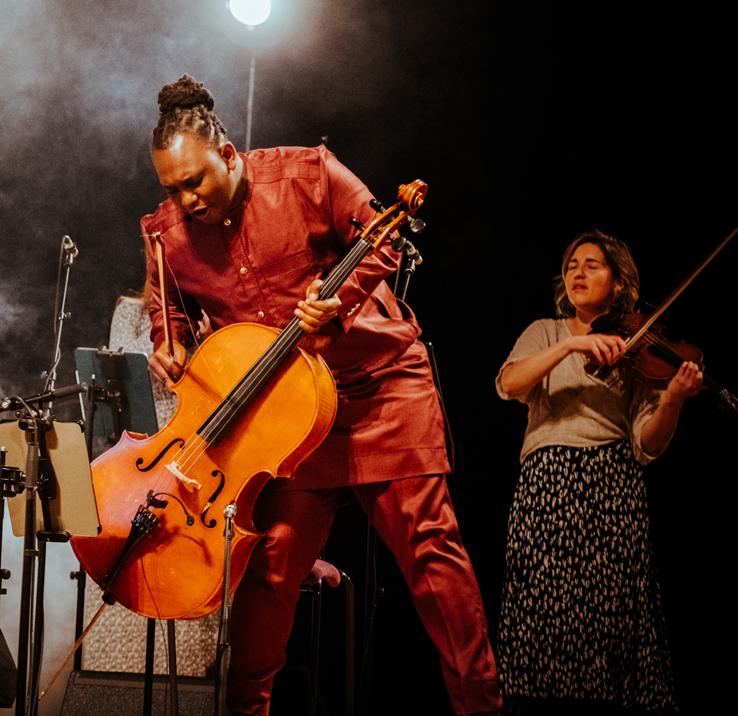
Support for this program provided by the:
ProtoStar Foundation
MANCHESTER COLLECTIVE FEATURING ABEL SELAOCOE AND CHESABA SIROCCO
SUNDAY, APRIL 14, 2024 · 7 PM
THE BAKER-BAUM CONCERT HALL
The order and repertoire of this program may be subject to change by the artists at any point; spoken introductions will be given from stage throughout the performance.
ABEL SELAOCOE Qhawe (b. 1992)
HANS ABRAHAMSEN Selections from Preludes for String Quartet (b. 1952)
ABEL SELAOCOE Tshepo
BERIO Aldo from 24 Duets for Two Violins (1925–2003)
TRADITIONAL (Denmark) Sønderho Bridal Trilogy (arr. Danish String Quartet)
INTERMISSION
ABEL SELAOCOE Kea Mo Rata
HAYDN Adagio Sostenuto from String Quartet in G Major, Opus 76, No. 1 (1732–1809)
TRADITIONAL (South Africa) Ibuyile
JOHANNES RUSTEN O Fredrik, O Fredrik (arr. Danish String Quartet) (b. 1984)
ERIONA RUSHITI Vashezo (b. 1971)
TRADITIONAL (Mali) Takamba
Joe Reiser, sound
Declan Kennedy, general manager and tour manager
La Jolla Music Society’s 2023–24 season is supported by The City of San Diego Commission for Arts and Culture, Banc of California, The Lodge at Torrey Pines, ProtoStar Foundation, Vail Memorial Fund, ResMed Foundation, Bright Events Rentals, Cafe Coyote, Rancho Coyote, Giuseppe's, Ace Parking, Brenda Baker and Steve Baum, Raffaella and John Belanich, Gordon Brodfuehrer, Mary Ellen Clark, Bert and Julie Cornelison, Elaine Galinson and Herbert Solomon, Joan and Irwin Jacobs, Angelina and Fred Kleinbub, Dorothea Laub, Vivian Lim and Joseph Wong, Jeanette Stevens, Debra Turner, Sue and Peter Wagener, and Bebe and Marvin Zigman.
North American Management for Manchester Collective: Wittenberg Artists, New York City
TRADITIONAL (South Africa) Ka Bohaleng
Manchester Collective feat. Chesaba
Abel Selaocoe*, cello; Rakhi Singh, Simmy Singh, violins; Christine Anderson, viola; Alan Keary*, electric bass; Sidiki Dembele*, percussion
*Members of Chesaba
Sirocco: Manchester Collective & Abel Selaocoe
Sirocco is pure joy and energy—a great storm of music that celebrates the warmth and diversity of cultural traditions from across the globe.
Guest directed and narrated by South African cellist Abel Selaocoe, this is music for the people, by the people. The show covers everything from outrageous arrangements for solo cello to beloved classics, from a set of original African music to a collection of gorgeous Danish folk songs. When this program toured across the UK and Europe, critics described it as a “deeply moving” and “once in a lifetime experience.” Known for its experimental programming and daring collaborations, Manchester Collective performs a combination of cutting-edge contemporary music, classical masterpieces and staged work in venues ranging from concert halls to warehouses, nightclubs to festivals.
This presentation marks Abel Selaocoe’s and Manchester Collective’s La Jolla Music Society debuts.
54 THE CONRAD | HOME OF LA JOLLA MUSIC SOCIETY · 2023-24 SEASON
ARTIST PROFILES
Joe Bini, filmmaker

Joe Bini is a filmmaker, writer, and editor who works in both fiction and nonfiction forms. He is best known for his twentyyear collaboration with Werner Herzog, resulting in such notable films as Grizzly Man, Cave of Forgotten Dreams, Into the Abyss, and The Bad Lieutenant: Port of Call New Orleans. He has also edited the groundbreaking films We Need to Talk About Kevin and You Were Never Really Here, directed by Lynne Ramsay, and American Honey, directed by Andrea Arnold, as well as Nick Broomfield’s Tales of the Grim Sleeper. He has lectured on and taught cinema in film schools worldwide.
Kenneth Broberg, piano
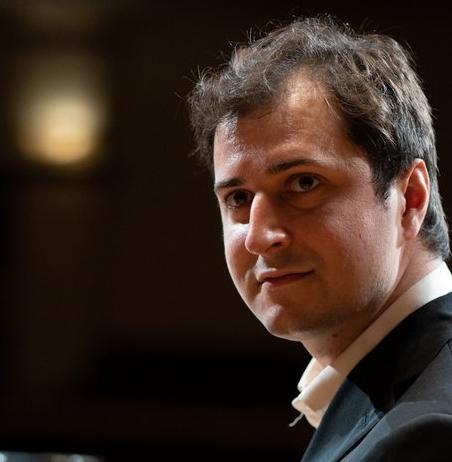
Kenneth Broberg is a Minneapolis native who won the silver medal at the 2017 Van Cliburn International Piano Competition and the 2019 bronze medal at the International Tchaikovsky Competition, as well as prizes at the Hastings, Sydney, Seattle, and New Orleans International Piano Competitions. Broberg has appeared with the Royal Philharmonic, Seattle Symphony, and the Louisiana Philharmonic Orchestras, among others. Recent and upcoming highlights include his debut with the Kansas City Symphony Orchestra, residencies at the Montreal Symphony’s Festival Virée Classique, Rye Arts, Methow Chamber, Strings, and Sunriver Music Festivals, recitals in Houston, Denver, Pittsburgh, Los Angeles, and Minneapolis, and tours of Japan, Australia, and Italy. He has been featured on NPR, WQXR, APM’s Performance Today, MPR, and ABC (Australia) radio. His solo debut album was released in August 2017 on the Decca Gold label.
Lawrence Brownlee, tenor
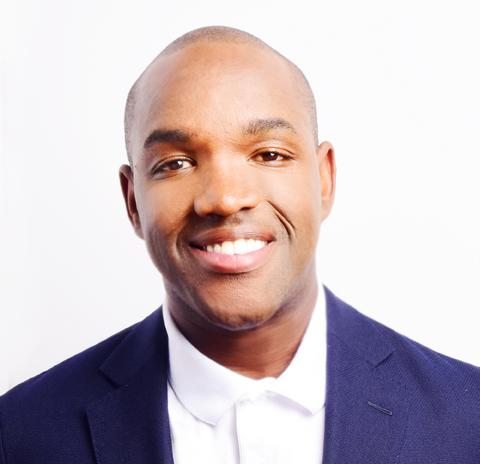
Lawrence Brownlee is one of the great voices of our time, captivating audiences and critics around the world. He is a fixture at the leading international opera houses and major orchestra halls, and his concerts have been broadcast to millions. He has performed for the U.S. Vice President and Secretary of State, the French President and Prime Minister, many NFL teams, and more. Brownlee has been named Male Singer of the Year by both the International Opera Awards and Bachtrack,
and his Virtuoso Rossini Arias album was nominated for a GRAMMY Award.
Brownlee has been profiled in every major U.S. newspaper, and has been featured on PBS, NPR, SiriusXM Radio, American Public Media, and other national outlets.
Ray Chen, violin

Initially coming to attention via the Yehudi Menuhin (2008) and Queen Elizabeth (2009) competitions, of which he was First Prize winner, violinist Ray Chen has built a profile in Europe, Asia, and the USA as well as his native Australia. Signed in 2017 to Decca Classics, Ray’s recording with the London Philharmonic followed three critically acclaimed albums on SONY, the first of which (Virtuoso) received an ECHO Klassik Award. Chen was featured on Forbes’ list of 30 most influential Asians under 30; made a guest appearance on Amazon’s Mozart in the Jungle TV series; and performed for a live TV audience on France’s Bastille Day and at the Nobel Prize Concert in Stockholm. He has performed with the London Philharmonic Orchestra, National Symphony Orchestra, Los Angeles Philharmonic, and Pittsburgh Symphony, among others, and recently made debuts with the San Francisco Symphony, Berlin Radio Symphony, and Bavarian Radio Chamber Orchestra. He works regularly with conductors such as Riccardo Chailly, Vladimir Jurowski, Manfred Honeck, Daniele Gatti, Kirill Petrenko, and many others. Chen plays the 1715 “Joachim” Stradivarius violin on loan from the Nippon Music Foundation, an instrument once owned by the famed Hungarian violinist Joseph Joachim (1831–1907).
Chitrasena Dance Company
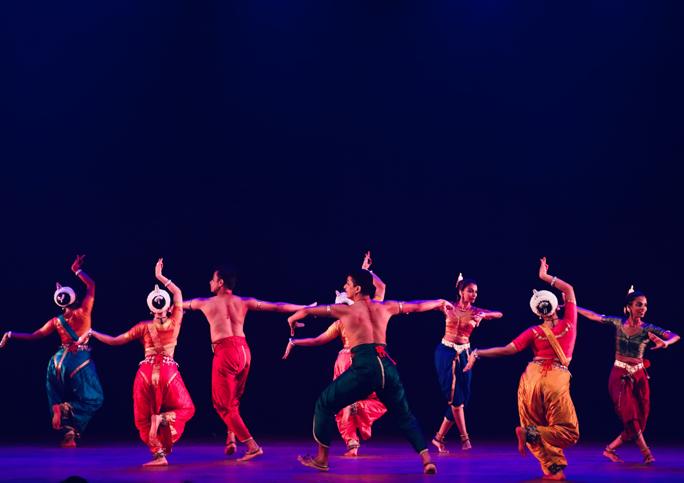
Founded by Guru Chitrasena with a vision to inspire and exhilarate through the traditional dances and drums of Sri Lanka, the Chitrasena Dance Company has always been at the forefront of transforming the traditional arts landscape of the island. Chitrasena is recognized for rescuing the traditional dances that were confined to village settings and presenting it to audiences in Sri Lanka and across the world. The Company was founded in 1943 and initially nurtured under the creative genius Chitrasena, together with his wife, Vajira. For more than seven decades the Chitrasena Dance Company has given life to compelling performances ranging from a rich repertoire of dance and drumming pieces to acclaimed original ballets and productions
TheConrad.org · 858.459.3728 55
TABLE OF CONTENTS
inspired by ancient rituals and contemporary culture. The Chitrasena Dance Company celebrated its 75th year in 2018, and the third generation is led by Heshma Wignaraja, Artistic Director and eldest granddaughter of Chitrasena and Vajira, who continues to take forward the legacy of her grandparents. Experimenting without compromise and using traditional dance language and form to push boundaries, the new work offers a fresh perspective, while upholding Guru Chitrasena’s philosophy that “the new is but an extension of the old.”
Julio Elizalde, piano

American pianist Julio Elizalde is a multi-faceted artist who enjoys a versatile career as soloist, chamber musician, artistic administrator, educator, and curator. He has performed in many of the major music centers throughout the United States, Europe, Asia, and Latin America to popular and critical acclaim. Since 2014, he has served as the Artistic Director of the Olympic Music Festival near Seattle. Elizalde has appeared with many leading artists; he tours internationally with world-renowned violinists Sarah Chang and Ray Chen and has performed alongside conductors Itzhak Perlman, Teddy Abrams, and Anne Manson. He has collaborated with artists such as violinist Pamela Frank, composers Osvaldo Golijov and Stephen Hough, baritone William Sharp, and members of the Juilliard, Cleveland, Takács, Kronos, and Brentano string quartets.
Sam Green, filmmaker
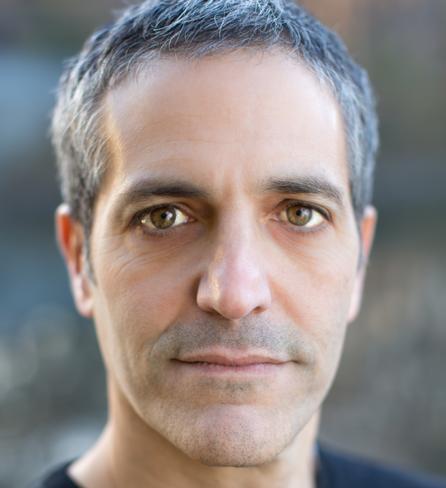
Sam Green is an Academy Award-nominated documentary filmmaker based in New York. Green’s most recent film 32 Sounds premiered at the 2022 Sundance Film Festival and is a live cinema collaboration with the legendary electronic musician JD Samson. Green’s previous works include A Thousand Thoughts, a collaboration with classical ensemble the Kronos Quartet, and The Love Song of R. Buckminster Fuller with the indie band Yo La Tengo. An earlier documentary The Weather Underground was nominated for an Oscar, broadcast on PBS, and included in the Whitney Biennial.
Il Pomo d’Oro

Founded in 2012 by Giulio D’Alessio and Gesine Lübben, the ensemble Il Pomo d’Oro has enjoyed intense concert activity worldwide and produced an impressive list of 35 recordings, many of them award-winning. It is particularly known and sought-after as a partner of singers, be it for solo recitals or entire operas, in performance and recording. In 2022, Il Pomo d’Oro toured the new programs of Joyce DiDonato, EDEN, and Jakub Józef Orlinski, Anima Eterna, led by the main conductors of the ensemble, Maxim Emelyanychev (chief conductor) and Francesco Corti (chief guest conductor). Zefira Valova, the concert master of Il Pomo d’Oro, also appears as a violin soloist in a new album with works by Benda, Graun a.o., soon to be released. Il Pomo d’Oro is official ambassador of El Sistema Greece, a humanitarian project to provide free musical education to children in Greek refugee camps. The Il Pomo d’Oro Academy was launched online during the first wave of the COVID-19 pandemic, offering free music lessons to music students worldwide. The Academy is now collaborating with El Sistema Venezuela, offering online masterclasses in Baroque music interpretation in cooperation with the Inocente Carreño Itinerant Conservatory in Caracas.
Maria Ioudenitch, violin

Born in Russia, violinist Maria Ioudenitch immigrated with her musical family to the U.S. at the age of two and grew up in Kansas City. In 2021, she received first prizes in the Ysaÿe International Music Competition, the Tibor Varga International Violin Competition, and the Joseph Joachim International Competition. Her first album on Warner, Songbird with pianist Kenneth Broberg, was released in March 2023 and spans from Franz Schubert, Fanny Mendelssohn, and Clara Schumann to Nikolai Medtner, Richard Strauss, and Nadia Boulanger. Ioudenitch recently debuted with Deutsches Symphonie-Orchester Berlin (at Berlin’s Philharmonie), MDR-Sinfonieorchester Leipzig, Düsseldorfer Symphoniker, and Münchner Symphoniker, and returned to the Kansas City Symphony. Recent engagements have taken her to the NDR Radiophilharmonie Hannover, the Mariinsky Orchestra, Lithuania Chamber Orchestra, and Utah Symphony. Maria plays a violin by the Brothers Amati from ca. 1624, courtesy of Guarneri Hall NFP and Darnton & Hersh Fine Violins in Chicago.
56 THE CONRAD | HOME OF LA JOLLA MUSIC SOCIETY · 2023-24 SEASON
ARTIST PROFILES
Kronos Quartet
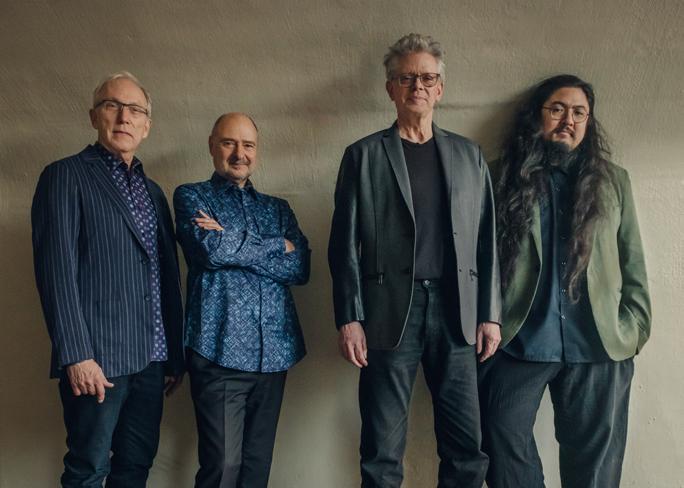
David Harrington, John Sherba, violins; Hank Dutt, viola; Paul Wiancko, cello
For 50 years, San Francisco’s Kronos Quartet has reimagined what the string quartet experience can be. One of the most celebrated and influential groups of our era, Kronos has given thousands of concerts worldwide, released more than 70 recordings, and collaborated with many of the world’s most accomplished composers and performers across many genres. Kronos has received more than 40 awards, including three Grammys and the Polar Music, Avery Fisher, and Edison Klassiek Oeuvre Prizes. Through its nonprofit organization, Kronos Performing Arts Association (KPAA), Kronos has commissioned more than 1,100 works and arrangements for quartet. KPAA also manages Kronos’ concert tours, local performances, recordings, and education programs, and produces an annual Kronos Festival in San Francisco. In its most ambitious commissioning effort to date, KPAA has recently completed Kronos Fifty for the Future. Through this initiative, Kronos has commissioned—and distributed online for free—50 new works for string quartet designed for students and emerging professionals, written by composers from around the world.
Ladysmith Black Mambazo

For 60 years, South Africa’s five-time GRAMMY Award winners Ladysmith Black Mambazo has warmed the hearts of audiences worldwide with uplifting vocal harmonies, signature dance moves, and charming onstage banter. It was Paul Simon’s 1987 Graceland album that introduced Ladysmith Black Mambazo to the world. The late former South African President Nelson Mandela designated the group “South Africa’s cultural ambassadors to the world,” a title the members carry with them with the highest honor. In 2018 the group received not one but two GRAMMY Award nominations for two separate albums, a first in the history of World Music. These two nominations brought their career total to 19 GRAMMY nominations. One of these albums, Shaka Zulu Revisited, won Best World Music Album. This was the group’s fifth GRAMMY Award win, the most for any World Music group. In 2019, Ladysmith Black Mambazo collaborated for the third time with the famed Steppenwolf Theatre Company on a production entitled Lindiwe and released an album with songs from the show.
Ladysmith Black Mambazo has performed for millions of people, singing a message of peace, love, and harmony. With their 2024 release, Soothe My Soul…Songs From Our South African Church, the group puts their own spin on gospel music.
Manchester Collective

Known for its experimental programming and daring collaborations, Manchester Collective has expanded its activities at breakneck speed since the group’s formation in 2016 by co-founders Adam Szabo (Chief Executive) and Rakhi Singh (Music Director). Its members now play in concert halls, gig venues, and factory spaces across the UK and internationally, performing a combination of cutting-edge contemporary music, classical masterpieces, and staged work to a hungry new audience. Crossing different genres and artforms, new music is of vital importance to the Collective—in recent years, the group has commissioned major works by artists including Edmund Finnis, Hannah Peel, Lyra Pramuk, and Laurence Osborn. In 2021, the Collective made its Royal Albert Hall debut as part of the BBC Proms Festival and its members are currently artists-in-residence at the Southbank Centre in London. Manchester Collective records for the Icelandic label Bedroom Community. Its second album, Shades, was released in March 2022.
Branford Marsalis, saxophone
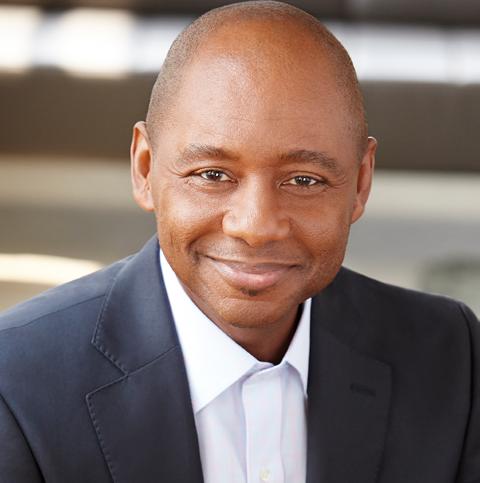
New Orleans-born Branford Marsalis is an award-winning saxophonist, band leader, featured classical soloist, and a film and Broadway composer. In the process, he has become a multi- award-winning artist with three GRAMMYs, a citation by the National Endowment for the Arts as a Jazz Master, and an avatar of contemporary artistic excellence. A frequent soloist with classical ensembles, Marsalis has become increasingly sought-after as a featured soloist with acclaimed orchestras around the world, performing works by composers such as Copeland, Debussy, Glazunov, Ibert, Mahler, Milhaud, Rorem, Vaughan Williams, and Villa-Lobos. And his legendary guest performances with the Grateful Dead and collaborations with Sting have made him a fan favorite in the pop arena. His work on Broadway has garnered a Drama Desk Award and Tony nominations for the acclaimed revivals of Children of a Lesser God, Fences, and A Raisin in the Sun. He received an Emmy nomination for composing
TheConrad.org · 858.459.3728 57
ARTIST PROFILES TABLE OF CONTENTS
the music for the History Channel’s documentary Tulsa Burning: The 1921 Race Massacre. His screen credits further include original music composed for Spike Lee’s Mo’ Better Blues, The Immortal Life of Henrietta Lacks starring Oprah Winfrey, and Ma Rainey’s Black Bottom starring Viola Davis and Chadwick Boseman.
Branford Marsalis Quartet

Branford Marsalis, saxophone; Joey Calderazzo, piano; Eric Revis, bass; Justin Faulkner, drums
Saxophonist
Branford Marsalis is one of the most influential and revered figures in contemporary music. The NEA Jazz Master, GRAMMY Award winner, and Tony Award nominee is equally at home performing concertos with symphony orchestras and sitting in with members of the Grateful Dead, but the core of his musical universe remains the Branford Marsalis Quartet. After more than three decades of existence with minimal personnel changes, this celebrated ensemble is revered for its uncompromising interpretation of a kaleidoscopic range of both original compositions and jazz and popular classics. After the GRAMMY-nominated Upward Spiral, on which guest vocalist Kurt Elling was seamlessly integrated into the group, the Quartet has followed up with the GRAMMYnominated The Secret Between the Shadow and the Soul, its most emotionally wide-ranging and melody-driven collection to date.
Kevin Miller, piano
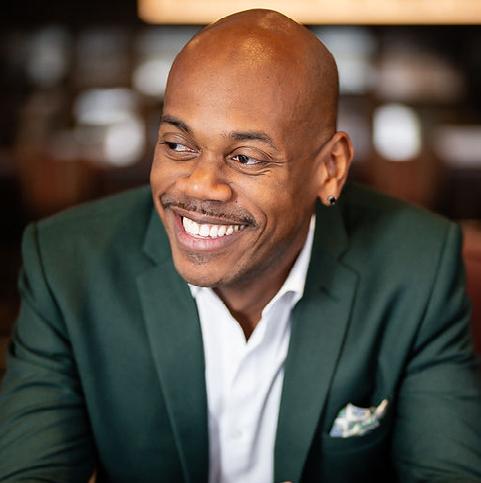
American pianist and collaborator Kevin J. Miller is acclaimed for his dynamically artful performances. Recent collaborations include recitals with international tenor Lawrence Brownlee at Carnegie Hall and Houston Grand Opera, countertenor John Holiday at the Kennedy Center and The Barbican in London, Joseph Calleja and Nadine Sierra at the Supreme Court of the United States, and an appearance with Calleja on NPR’s Tiny Desk Concert series. Miller prepared soprano Jessye Norman for performances of Laura Karpman’s production of Ask Your Mama, which was performed at Carnegie Hall. He also collaborated with the acclaimed countertenor David Daniels in a recital at the Glimmerglass Festival. He can be heard on piano on the recording Been in da Storm So Long, which features baritone Kenneth Overton.
Nrityagram Dance Ensemble

One of the premier Indian Classical dance ensembles performing today, Nrityagram Dance Ensemble (pronounced NRIthyuh-graam) has the unprecedented distinction of making The New York Times’ “Best Dance of the Year” list two consecutive years in a row (2015 and 2016). More than a dance company, Nrityagram was founded as a village devoted to dance, home to a school inspired by the Gurukula, an ancient teaching paradigm, and the dance ensemble. The ensemble is devoted to bringing Odissi, one of the oldest dance styles in the world, to audiences worldwide. Although steeped in and dedicated to ancient practice, the Ensemble is also committed to carrying Indian dance into the 21st century. Nrityagram’s dancers not only explore creative expansions of tradition but also commission fresh compositions from leading Indian classical musicians. They research, innovate, create original work, and perform to audiences across the globe. Led by Artistic Director Surupa Sen, the company has achieved worldwide critical acclaim, performing globally including an annual tour to the United States.
Jakub Józef Orliński, countertenor

Countertenor Jakub Józef Orliński regularly gives sold-out concerts and recitals throughout Europe and America, attracting new followers to the art form. Highlights of this season included the highly anticipated 25-date European tour of the new album in the fall, and an American tour during spring. Orlinski will also return on the operatic stage at the Théâtre des Champs-Elysées, Paris, in a new production of L’Olimpiade by Vivaldi. He will then join his long-time musical partner, pianist Michał Biel, for exclusive recitals throughout Europe. Last season, the Polish countertenor was at Théâtre des Champs-Élysées for a sold-out run of the Robert Carsen production of Orfeo ed Eurydice followed by another new production of the same opera at San Francisco Opera, led by Matthew Ozawa. Orlinski also joined Il Pomo d’Oro on a tour to sing the title role in Tolomeo Re d’Egitto on major stages throughout Europe including Madrid’s Teatro Real and Paris. Outside the operatic stage, the public had the opportunity to watch the new hour-long documentary Music for a While about Orlinski that was released during spring on Arte and got the most views for cultural documentary on the European TV channel.
58 THE CONRAD | HOME OF LA JOLLA MUSIC SOCIETY · 2023-24 SEASON
ARTIST PROFILES
Quatuor Ébène
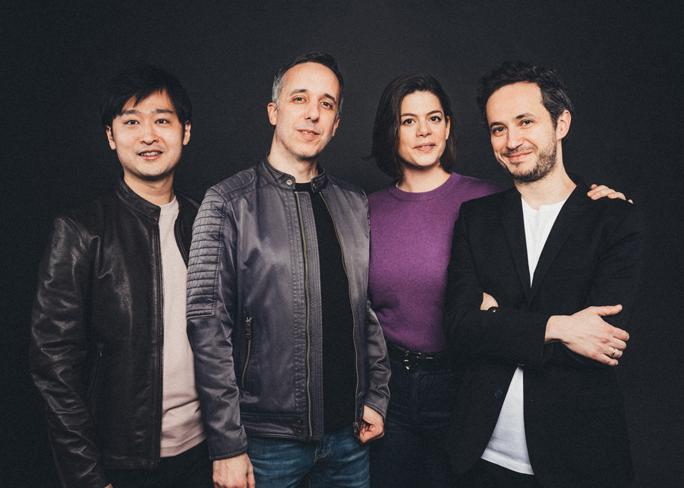
Pierre Colombet, Gabriel Le Magadure, violins; Marie Chilemme, viola; Yuya Okamoto, cello
“The superb Quatuor Ébène has made a name for itself not only as an elegant purveyor of classical fare but also for jazz performances,” says the New York Times. The members of this young ensemble are musical omnivores, sharing a feast of wonderful music from many eras and genres with intense technical precision and energetic performances. Between May 2019 and January 2020 the quartet recorded Beethoven’s 16 string quartets in a worldwide project on six continents entitled Beethoven Around the World. With this complete recording, the four celebrated their 20th stage anniversary, which they then crowned with performances of the complete string quartet cycle in major European venues such as the Philharmonie de Paris or the Alte Oper Frankfurt. Invitations from Carnegie Hall New York, the Verbier Festival and the Vienna Konzerthaus were also on the agenda. The quartet came to international attention with its unprecedented and outstanding success at the 2004 ARD Music Competition, which resulted in numerous other prizes and awards, including in 2005 the Belmont Prize of the Forberg-Schneider Foundation, the Borletti-Buitoni Trust in 2007, and in 2019 becoming the first ensemble ever honored with the Frankfurt Music Prize.
Abel Selaocoe, cello

South African cellist
Abel Selaocoe combines virtuosic performance with improvisation, singing and body percussion, and is devoted to composing works and curating programs that highlight the links between Western and non-Western musical traditions. In April 2022, following his hugely successful debut, the St. Paul Chamber Orchestra announced Selaocoe as Artistic Partner for an initial three seasons. He was also Artist in Association with the BBC Singers and Artist-in-Residence at London’s Southbank Centre for the 2022–23 season with performances there throughout the season, including an exclusive performance of his debut album Where is Home? Further tour performances include Amsterdam Concertgebouw, Lucerne Festival, Berliner Philharmonie, Kolner Philharmonie, and Antwerp deSingel, among others. Last season Selaocoe gave the world premiere of a new double concerto for kora and cello with Seckou Keita and the Ulster Orchestra, cocommissioned by Orchestre National de Bretagne, Ulster
Orchestra, and Southbank Centre, and the world premiere of his solo cello concerto with the BBC Scottish Symphony Orchestra, with subsequent U.S. premiere with Seattle Symphony. Selaocoe enjoys close collaborations with musicians from a medley of genres and a close partnership with Manchester Collective, with whom he devised the hugely successful Sirocco.
Surupa Sen, Artistic Director and Choreographer

Surupa Sen was the first student to graduate from the Nrityagram Gurukula (School) and is a founding member of the Nrityagram Dance Ensemble. She began her Odissi training with the architect of Odissi, Guru Kelucharan Mahapatra. She also studied Odissi with Guru Protima Gauri, Abhinaya (expressional dance) with Guru Kalanidhi Narayanan and the Natyashastra under the supervision of Dr. Padma Subrahmanyam. For more than two decades, Sen has worked to research and expand the dance vocabulary of Odissi and develop an aesthetic style that distinguishes the dancers from the Nrityagram School. Attracted to choreography from childhood, Sen has focused on making new dances using an expanded Odissi language, rooted in traditional Odissi and the Natyashastra. She has a keen interest in music and rhythm composition and has worked closely with Pt. Raghunath Panigrahi since 1999. She received the Raza Foundation Award in 2006, the Yagnaraman Award from Sri Krishna Gana Sabha, Chennai, in 2008, and the prestigious Nritya Choodamani from Sri Krishna Gana Sabha, Chennai, in 2011. In 2019, she was awarded the Sangeet Natak Akademi Puraskar, the highest award for the Performing Arts in India.
TheConrad.org · 858.459.3728 59
ARTIST PROFILES TABLE OF CONTENTS
Winter Season 2023–24 Prelude Lecturers,
Interviewers, and Performers
Kristi Brown Montesano, Piano Series lecturer

Chair of the Music History Department at the Colburn Conservatory of Music in Los Angeles, Kristi Brown Montesano is an enthusiastic “public musicologist.” She is an active lecturer for the LA Philharmonic, the Opera League of Los Angeles, the Salon de Musiques series, and Mason House Concerts. Her book, The Women of Mozart’s Operas (UC Press, 2007), offers a detailed study of these fascinating roles; more recent scholarly interests include classical music in film, women in classical music, and opera for children.
Michael Gerdes, Revelle Chamber Music and Recital Series lecturer
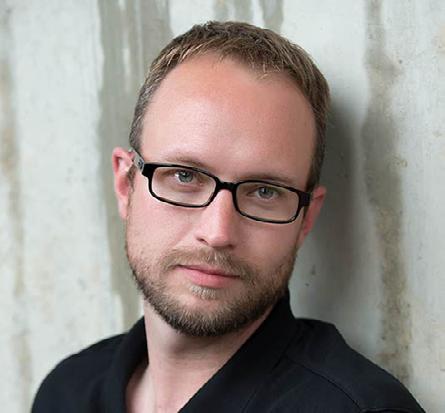
Michael Gerdes is Director of Orchestras at San Diego State University, where he conducts the San Diego State Symphony Orchestra, Chamber Orchestra, and Opera Orchestra. He earned his Bachelor of Music degree in Music Education and Bachelor of Arts Degree in Philosophy from Concordia College in Moorhead, Minnesota. Selected by the San Diego Union-Tribune as one of three “Faces to Watch in Classical Music” during his first year as Director of Orchestras, Gerdes is focused on creating a thriving orchestral community at San Diego State University.
Robert John Hughes, Jazz Series interviewer
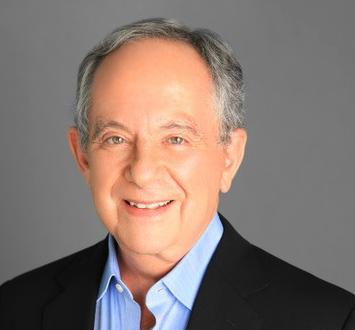
Journalist, broadcaster, musician, author, and record producer
Robert John Hughes has interviewed hundreds of musical artists in classical, jazz, pop, rock, R&B, and blues, including Sting, Wynton Marsalis, Bonnie Raitt, Paul Simon, B.B. King, Adele, and Peter Gabriel. As a record producer and member of the GRAMMY® Academy, Hughes has released five albums of live performances by artists heard on San Diego FM station 102.1 KPRi. Hughes has hosted La Jolla Music Society Preludes since 2018.
Molly Puryear, Dance Series interviewer
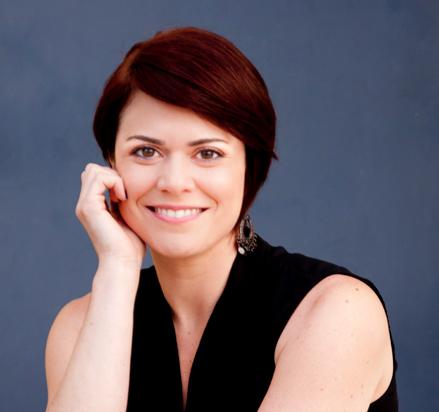
Molly Puryear brings passion for dance and nonprofit administration to her position as Executive Director of Malashock Dance. Puryear has worked with Malashock Dance since 2006, and previously served in the role of Education Director. She strategically aligns artistic and educational efforts to create a dynamic relationship between programs, the communities they serve, and the organization’s valuable funders. Puryear is committed to serving the San Diego community through the development and administration of vibrant dance programs. She believes that dance is an avenue for personal expression that engages people from all walks of life.
The Colburn School, Discovery Series Musical Preludes

A performing arts institution located in the heart of Los Angeles, the Colburn School trains students from beginners to those about to embark on professional careers. The academic units of the school provide a complete spectrum of music and dance education united by a single philosophy: that all who desire to study music or dance should have access to top-level instruction. Each year, nearly 2,000 students from around the world come to Colburn to benefit from the renowned faculty, exceptional facilities, and focus on excellence that unites the community. colburnschool.edu
Āhuti: Nrityagram & Chitrasena © Sujith Kumar; Pg.14: The Baker-Baum Concert Hall courtesy of The Conrad; Pg.16: T. Schultz © Darin Fong; Pg.17: L. Brownlee © Zakiyah Caldwell Burroughs; Pg.27: M. Ioudenitch © Andrej Grilc, K. Broberg © Lee Clifford; Pg.31: Kronos Quartet © Allie Foraker; Pg.35: Branford Marsalis Quartet © Eric Ryan Anderson; Pg.36: Nrityagram Dance Ensemble's Thaji Dias © Sujith Kumar; Pg.40: Ladysmith Black Mambazo courtesy of management; Pg.41: R. Chen © John Mac, J. Elizalde © Amanda Wescott; Pg.45: J. J. Orliński © Honorata Karapuda; Pg.51: Quatuor Ébène ©Julien Mignot; Pg.54: Abel Selaocoe and Manchester Collective © Gaelle Beri; Pg.55: Joe Bini courtesy of artist, K. Broberg © Lee Clifford, L. Brownlee © Shervin Lainez, R. Chen © John Mac, Nrityagram & Chitrasena © Ravi Shankar; Pg.56: J. Elizalde © Amanda Wescott, S. Green courtesy of artist, Il Pomo d'Oro © Giulia Fassina, M. Ioudenitch © Nissor Abdourakov; Pg.57: Kronos Quartet © Lenny Gonzalez, Ladysmith Black Mambazo courtesy of Management, Manchester Collective © Gaelle Beri, B. Marsalis © Palma Kolansky; Pg.58: Branford Marsalis Quartet © Eric Ryan Anderson, K. Miller courtesy of artist, Nrityagram Dance Ensemble © Ravi Shankar, J. J. Orliński courtesy of artist; Pg.59: Quatuor Ébène ©Julien Mignot, A. Selaocoe © Phil Sharp, S. Sen courtesy of artist; K. Brown Montesano © Elisa Ferrari, M .Gerdes courtesy of artist, R.J. Hughes courtesy of artist, M. Puryear
60 THE CONRAD | HOME OF LA JOLLA MUSIC SOCIETY · 2023-24 SEASON
courtesy of artist; Back Cover: R. Chen © John Mac
THANK YOU!
The wonderful array of musical activity that La Jolla Music Society offers would not be possible without support from its family of donors. Your contributions to La Jolla Music Society help bridge the gap between income from ticket sales and the total cost to present the finest musicians and the best chamber music repertoire in San Diego. Your generosity also supports our programs in the local schools and throughout the community.
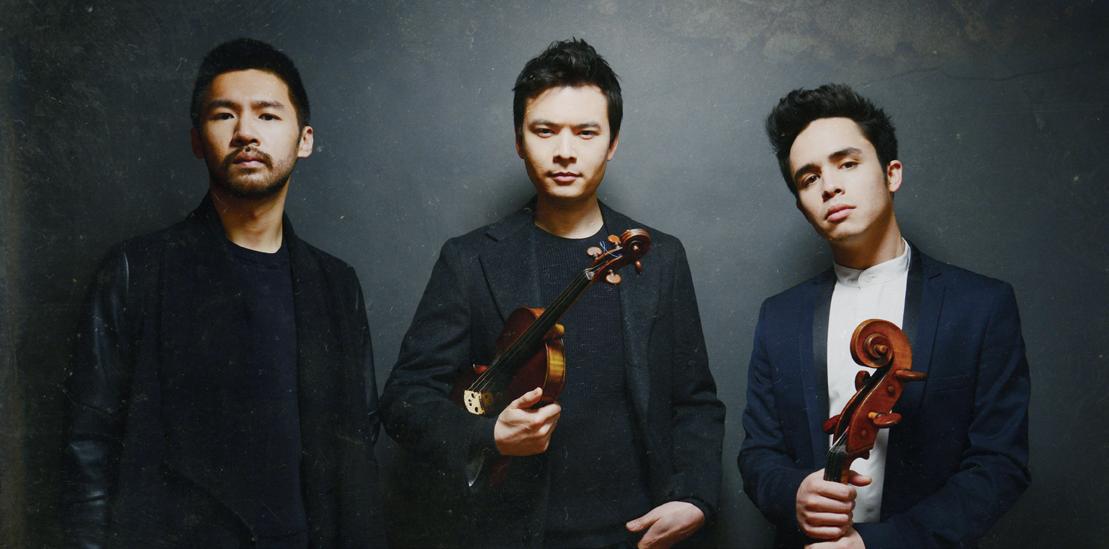
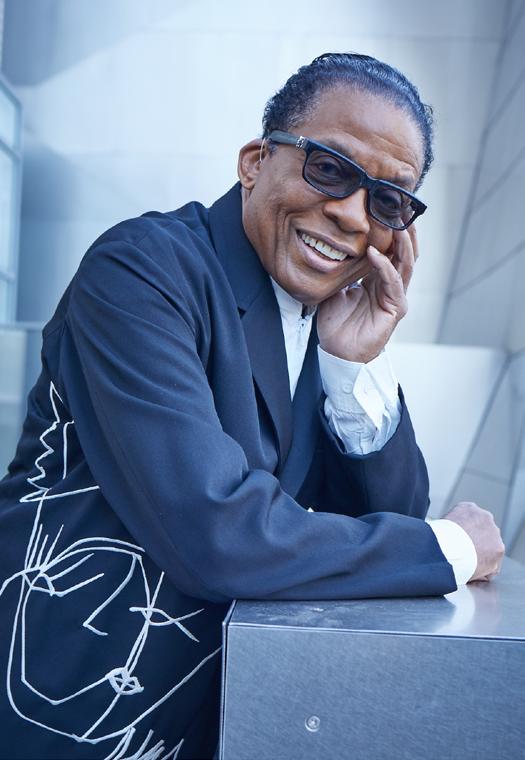

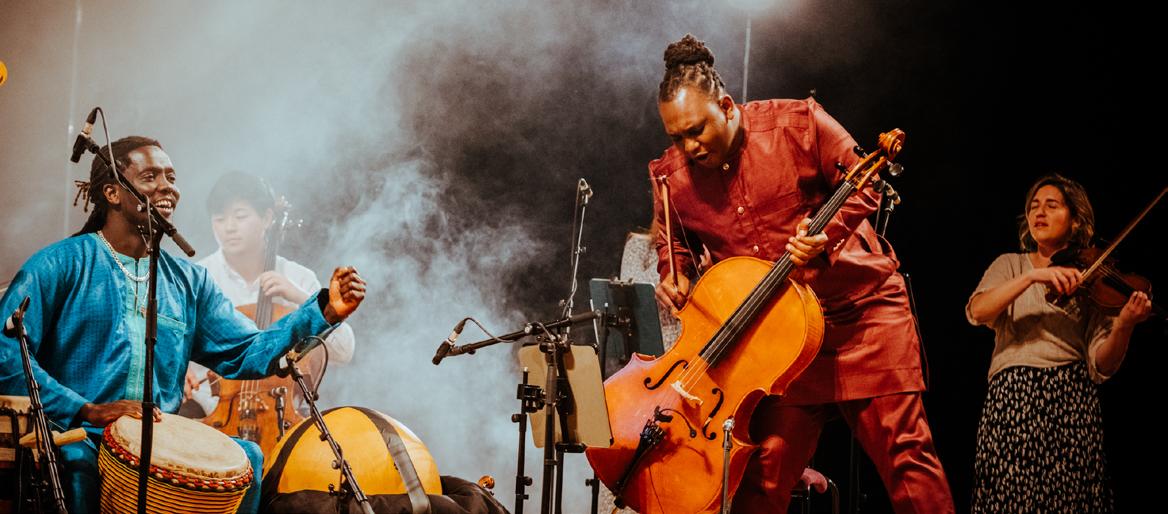
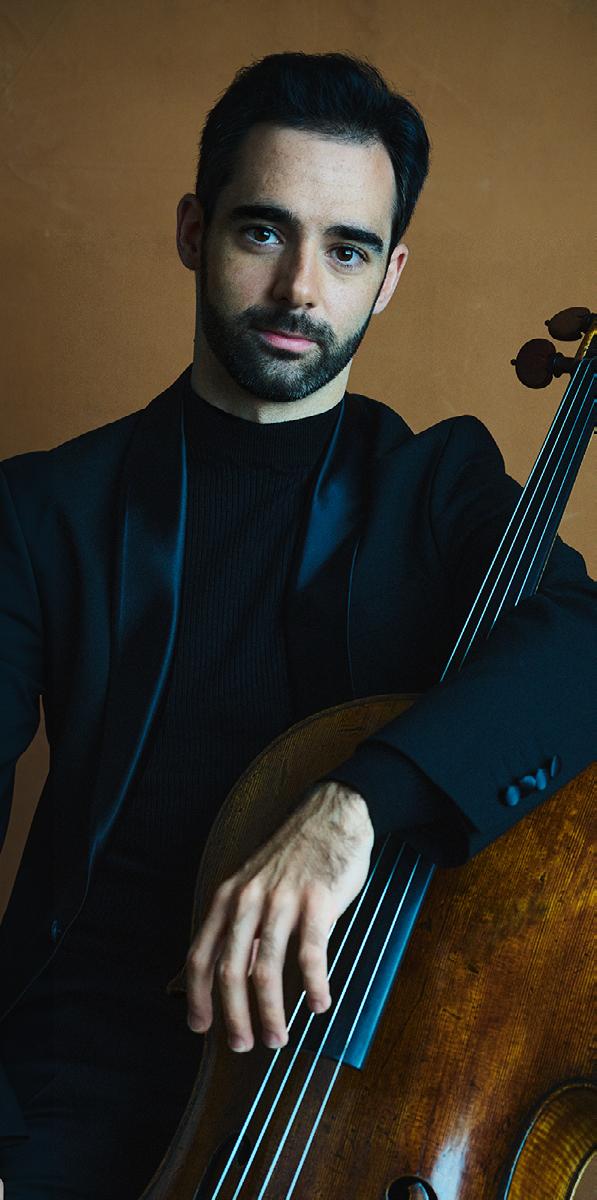
On the following pages La Jolla Music Society pays tribute to you, the leading players who make it possible to share the magic of the performing arts with our community.
TheConrad.org · 858.459.3728 61
TABLE OF CONTENTS
La Jolla Music Society depends on contributed income for more than 60% of its annual budget. We are grateful to all of our contributors who share our enthusiams and passion for the arts. Every donor is a valued partner and they make it possible for one of San Diego’s premier music organization to present year-round.
It is our honor to recognize the following donors.
FOUNDER
($250,000 and above)
Brenda Baker and Steve Baum
Wendy Brody Estate
The City of San Diego Commission for Arts and Culture
Mary Ellen Clark
Joan and Irwin Jacobs
The Conrad Prebys Foundation
ANGEL
($100,000 - $249,999)
BENEFACTOR
($50,000-$99,999)
Raffaella and John Belanich
Lynda Fox Estate
Dorothea Laub
Debra Turner
Clara Wu Tsai and Joseph Tsai
Eleanor and Ric Charlton
Peter Cooper and Erik Matwijkow
Julie and Bert Cornelison
Silvija and Brian Devine
Elaine Galinson and Herbert Solomon
Lehn and Richard Goetz
Helen and Keith Kim
Angelina and Fredrick Kleinbub
Vivian Lim and Joseph Wong
Marge and Neal Schmale
Joyce and Ted Strauss Family Trust
Haeyoung Kong Tang
Sue and Peter Wagener
Anna and Edward Yeung
Bebe and Marvin Zigman
62 THE CONRAD | HOME OF LA JOLLA MUSIC SOCIETY · 2023-24 SEASON ANNUAL SUPPORT ANNUAL SUPPORT
GUARANTOR
($25,000 - $49,999)
Mary Ann Beyster
Marla Bingham and Gary Gallagher
Barbara Enberg
Jennifer and Kurt Eve
Ingrid and Theodore Friedmann
Jeanne Herberger
John Hesselink
Susan and Bill Hoehn
The Lodge at Torrey Pines
Diana and Eli Lombrozo
Viviana and Enrique Lombrozo
Sue and John Major
Arlene and Lou Navias
Jeanne and Rick Norling
The Parker Foundation
Peggy and Peter Preuss
ProtoStar Foundation
Sylvia and Steve Ré
Stacy and Don Rosenberg
Sheryl and Bob Scarano
Jeanette Stevens
Elizabeth and Joseph Taft Revocable Trust
Vail Memorial Fund
Lise Wilson and Steven Strauss
SUSTAINER
($15,000 - $24,999)
Judith Bachner and Dr. Eric L. Lasley
Banc of California | Stephen Gamp
Jim Beyster
Gordon Brodfuehrer
California Arts Council
Sharon L. Cohen
Ellise and Michael Coit
County of San Diego Community Enhancement Fund
Jendy Dennis Endowment Fund
Martha and Edward Dennis
Dr. Seuss Foundation
Ann Parode Dynes and Richard Dynes
Monica Fimbres
Debby and Wain Fishburn
Hal and Pam Fuson
Brenda and Michael Goldbaum
Teresa and Harry Hixson
Andy Nahas
Dagmar Smek and Arman Oruc
Clayton Lewis and Thomas Rasmussen
Stephanie and Nick Stone
Abby and Ray Weiss
SUPPORTER
($10,000 - $14,999)
Anonymous
Alison Alpert
Dede and Mike Alpert
Celeste and Timothy Bailey
Jeffrey Barnouw
Raymond Chinn
Valerie and Harry Cooper
Una Keyes Davis and Jack McGrory
Nina and Robert Doede
Sue and Chris Fan
Joy Frieman
Wendy Frieman
Rick and Elisa Jaime
Jo Kiernan and Bjorn Bjerede
Samuel Popkin and Susan Shirk
ResMed Foundation
Susan and Stephen Schutz
Maureen and Thomas Shiftan
June and Dr. Bob Shillman
TheConrad.org · 858.459.3728 63 ANNUAL SUPPORT
TABLE OF CONTENTS
AMBASSADOR
($5,000 - $9,999)
Anonymous (2)
Arleene Antin and Leonard Ozerkis
Julie and Edgar Berner
Ginny and Bob Black
Karen and Jim Brailean
Lisa and David Casey
Eric Cohen and Bill Coltellaro
Karen and Don Cohn
The Hon. Diana Lady Dougan
Sarah and Mike Garrison
Buzz and Peg Gitelson
Lisa Braun Glazer and Jeff Glazer
Lynn Gorguze and The Hon. Scott Peters
Margaret Stevens Grossman and Michael Grossman
Richard Harris and Sonya Celeste-Harris
Norma Hidalgo-Del Rio
Nellie High-Iredale
Barbara and Paul Hirshman
Theresa Jarvis
Barbara Kjos
Marilee and Peter Kovacs
Sylvia Liwerant
Kathleen and Ken Lundgren
Jain Malkin
Marilyn and Stephen Miles
Gail and Edward Miller
Cynthia and George Mitchell Foundation
Elaine and Doug Muchmore
Joyce and Ron Nelson
Shelby and Courtland Palmer
Marina and Rafael Pastor
Linda Platt
Vivien Ressler
Catherine Rivier
James Robbins and Jill Esterbrooks
Kathleen Roche-Tansey and David Tansey
Patty Levaur Rome
Leigh P. Ryan
Clifford Schireson and John Venekamp
Todd R. Schultz
Reesey and David Shaw
Gigi and Joe Shurman
Gerald and Susan Slavet
Diane and DJ Smith
Beverly and Alan Springer
Gloria and Rod Stone
Susan and Richard Ulevitch
Ayse Underhill
Mary L. Walshok
Jo Weiner
Lisa Widmier
Shara Williams and Benjamin Brand
Mary and Joseph Witztum
Dolly and Victor Woo
AFICIONADO
($2,500 - $4,999)
Judith Adler
Gigi and Brad Benter
Emily and Barry Berkov
Carolyn and Giovanni Bertussi
Abdul Rahman Bitar
Isabel and Stuart Brown
Janice and Nelson Byrne
Carol and Jeff Chang
June Chocheles
Julie and Robert Cowan Novak
Debbe Deverill
Diane and Elliot Feuerstein
Richard Forsyth
Cheryl Hintzen-Gaines and Ira Gaines
Virginia Graham
Carrie Greenstein
Rossina Grieco
Susan and David Kabakoff
Christine and Charles Lo
Muchnic Foundation
Nancy Linke Patton and Rip Patton
Robert and Allison Price
Carol Randolph and Robert Caplan
Eva and Doug Richman
Jonathan Scheff
Gwynn Thomas
Diana and Roger Van Duzer
Armi and Al Williams
Carol Young
Betty Zeng
ASSOCIATE
($1,000 - $2,499)
Anonymous (3)
Albertsons-Safeway Foundation
Axel's Gift
Jadwiga Alexiewicz
William Boggs
James Carter
Michael and Cathy Casteel
Kathleen Charla
Li-Rong L. Cheng
Anthony Chong and Annette Nguyen
Ann Rea Craig
Daroline DeMar
Tallie and George Dennis
Linda and Wallace Dieckmann
Renee and James Dunford
Sam Ersan
July F. Galper
Anne Graves
Warren Green
Lee Ann Groshong
Pamela Hamilton Lester
Andrea Harris
Lori Haynes
Linda Howard
Laura Henson Hueter and Geoffrey Hueter
Audrey Jacobs
Dwight Kellogg
Sallay and Tae Kim
Melvin Knyper
James Kralik and Yunli Lou
Eileen A. Mason
M. Margaret McKeown and Peter Cowhey
Ted McKinney
Susan and Doug McLeod
Lynn and Charles McPherson
Sandra Miner
Chandra Mukerji
Brian Munden
Norman Needel
Virginia Oliver
Mary Sophos and William Pitts
Sandra Redman
Victor Saldivar
Anne and Ronald Simon
Robert Singer
Carol Harter and William Smith
Joan T. Snider
David and Phyllis Snyder
Jean Sullivan and David Nassif
Newport Festival Foundation
Victor A. Van Lint
Karen M. Walter
Christy and Howard Zatkin
Bart Ziegler
64 THE CONRAD | HOME OF LA JOLLA MUSIC SOCIETY · 2023-24 SEASON ANNUAL SUPPORT ANNUAL SUPPORT
FRIEND
($500 - $999)
Anonymous (4)
K Andrew Achterkirchen
The Leonard B. and Martha M. Allen Fund
Terence Balagia
Mary and Gene Barduson
Carol and Bruce Boles
DeAnn Cary
Edwin Chen
David R. Child
Betty Clarquist
Jeanette Day
Marilou Dense
Linda and Rick Dicker
Kim Doren
Jeane Erley
Irene and Eduardo Feller
Jack C. Fisher
Ferdinand Marcus Gasang
Mary and Tom Gegax
Cynthia and Tom Goodman
Patt and Jeff Hall
Ingrid B. Hibben
Lulu Hsu
Sofia and Leon Kassel
ancy Kossan
Kathleen Kovacs
Carol Lynne Krumhansl
Lewis Leicher
Greg Lemke
Patricia and Stephen Lending
Ruth and Ronald Leonardi
Charles Letourneau
Ann and Gerald Lipschitz
Linda and Michael Mann
Lynn and Charles McPherson
Debra Medel
Desiree Michelle
Esther Nahama
Rosalva Parada
Sigrid Pate
Kirk L. Peterson
Dana and Stella Pizzuti
Paula M. Pottinger
Jacqueline Powell
Sharon Rearwin
Esther Rodriguez
Teri Rodriguez
Denise Selati
Michael Sellett
Tatjana Soli
Tom Son
Annemarie and Leland Sprinkle
Lester Stiel
Molly Thornton
Anne Turhollow
Karen L. Valentino
Paul Viani
Patricia and Christopher Weil
Suhaila White
Joyce Williams
LaShawn C. Williams
Olivia and Martin Winkler
Barbara and Michel Zelnick
ENTHUSIAST
($250 - $499)
Robin Allgren
Sue Andreasen
Christine and Craig Andrews
Bruce H. Athon
Steve Axel
Youn Joo Bae
Mary Lonsdale Baker
Gayle Barsamian and David Clapp
C M Boyer
Scott Brinkerhoff
Marc Brown
Kathy Chambery
Tiffany Chow
Amy Corton
Susan Dramm
Robert C. Fahey
Derek Floyd
Pam and Michael Foley
Clare Friedman
Elisabeth Friedman
Bruce Galanter
Hany Magdy Girgis
Phyllis and Morris Gold
John Graul
Margie and Paul Grossman
Phyllis and Gordon Harris
Vivian and Greg Hook
David K. Jordan
H. and Susan Koshkarian
Marti Kutnik
Carolynn La Pierre
Jayne Lindberg
Robin Lipman
Robin Luby
Patricia Manners
Maggie and Paul Meyer
Pamela and Martin Morris
Richard Obetz
Antje Olivie
Renee Levine Packer
Carol Plantamura
Bill Purves and Don Schmidt
Ellen M. Quandahl
Rick Rand
Jean-Luc and Jaqueline Robert
Laura A. Romero
Barbara Rosen and Bob Fahey
Barry Rosenbush
Carolyn Rynard
Arlene and Peter Sacks
James F. Sallis
Alice and Brad Saunders
Deborah Serra
Marjorie Hansen Shaevitz
Lee Talner
Monica and Richard Valdez
N.B. Varlotta
Cynthia Walk
Jen-Yi Wang
Suzanne Weiner
Carol West
Tanya Young
TheConrad.org · 858.459.3728 65 ANNUAL SUPPORT This list is current as of February 1, 2024. We regret any errors. Please contact Annie Delleman at ADelleman@TheConrad.org or 858.526.3445 to make a correction.
TABLE OF CONTENTS
CROWN JEWEL
Brenda Baker and Steve Baum
Joan and Irwin Jacobs
DIAMOND
Raffaella and John Belanich
Mary Ellen Clark
Dorothea Laub
Debra Turner
RUBY
Julie and Bert Cornelison
Silvija and Brian Devine
Elaine Galinson and Herbert Solomon
Helen and Keith Kim
Angelina and Fred Kleinbub
Vivian Lim and Joseph Wong
Haeyoung Kong Tang
Sue and Peter Wagener
EMERALD
Barbara Enberg
Arlene and Louis Navias
GARNET
Pam and Hal Fuson
Peggy and Peter Preuss
Anna and Edward Yeung
SAPPHIRE
Raymond Chinn
John Hesselink
Elizabeth and Joseph Taft
Bebe and Marvin Zigman
TOPAZ
Anonymous
Mary Ann Beyster
Virginia and Robert Black
James C. and Karen A. Brailean
Buzz and Peg Gitelson
Lisa Braun-Glazer and Jeff Glazer
Margaret Stevens Grossman and Michael Grossman
Theresa Jarvis
Kathleen and Ken Lundgren
Elaine and Doug Muchmore
Don and Stacy Rosenberg
Leigh P. Ryan
Sheryl and Bob Scarano
Neal and Marge Schmale
Susan and Gerald Slavet
Diane and DJ Smith
Jeanette Stevens
Gloria and Rodney Stone
Susan and Richard Ulevitch
Shara Williams and Benjamin Brand
Dolly and Victor Woo
We are honored to have this extraordinary group of friends who have made multi-year commitments to La Jolla Music Society, ensuring that the artistic quality and vision we bring to the community continues to grow.
66 THE CONRAD | HOME OF LA JOLLA MUSIC SOCIETY · 2023-24 SEASON MEDALLION SOCIETY
GRANDE JETÉ
Elaine Galinson and Herbert Solomon
Bebe and Marvin Zigman
JETÉ
Marla Bingham and Gary Gallagher
ARABESQUE
Ellise and Michael Coit
Jeanette Stevens
POINTE
Carolyn Bertussi
We are grateful for each patron for their passion and support of our dance programs.
HONORARIA
In Memory of John Belanich:
Martha and Ed Dennis
Ferdinand Marcus Gasang
In Memory of Bjorn Bjerede:
Anonymous
Ferdinand Marcus Gasang
James Hobza
Patricia Laprey
Amy and Bill Morris
Annemarie and Leland Sprinkle
In Memory of George Damoose:
Ferdinand Marcus Gasang
Margie and Paul Grossman
Mary Manak
Pamela and Martin Morris
In Memory of Selma Malk:
Ann and Gerald Lipschitz
In Memory of Joanne Snider:
Ferdinand Marcus Gasang
Jud, Lee Ann, and Tyler Groshong
Glenn Moiser
Kevin Pearson and Stephen Murphy
Renee Roth
Reissa Schrager-Cole and Hilary Cole
Kerry Symonds
Dolly and Victor Woo
TheConrad.org · 858.459.3728 67
GIFTS IN HONOR/MEMORY
DANCE SOCIETY
TABLE OF CONTENTS
LEGACY SOCIETY
Anonymous (2)
Brenda Baker and Steve Baum
June L. Bengston*
Joan Jordan Bernstein
Bjorn Bjerede and Jo Kiernan
Dr. James C. and Karen A. Brailean
Gordon Brodfuehrer
Wendy Brody*
Barbara Buskin*
Trevor Callan
Geoff and Shem Clow
Anne and Robert Conn
George and Cari Damoose*
Teresa and Merle Fischlowitz
Lynda Fox*
Ted and Ingrid Friedmann
Joy and Ed* Frieman
Sally Fuller
Maxwell H. and Muriel S. Gluck*
Dr. Trude Hollander*
Eric Lasley
Theodora Lewis*
Joani Nelson*
Maria and Dr. Philippe Prokocimer
Bill Purves
Darren and Bree Reinig
Jay W. Richen*
Leigh P. Ryan
Jack* and Joan Salb*
Johanna Schiavoni
Pat Shank
Drs. Joseph and Gloria Shurman
Karen and Christopher Sickels
Todd R. Schultz
Jeanette Stevens
Elizabeth and Joseph* Taft
Norma Jo Thomas
Dr. Yvonne E. Vaucher
Lucy and Ruprecht von Buttlar
Ronald Wakefield
John B. and Cathy Weil
Carolyn Yorston-Wellcome and H. Barden Wellcome*
Karl and Joan Zeisler
Josephine Zolin
REMEMBERING LJMS IN YOUR WILL
It is easy to make a bequest to La Jolla Music Society, and no amount is too small to make a difference.
Here is a sample of language that can be incorporated into your will:
“I hereby give ___% of my estate (or specific assets) to La Jolla Music Society, Tax ID 23-7148171, 7600 Fay Avenue, La Jolla, CA 92037, for its artistic programs (or education, general operating, or where needed most).
Then, please contact Ferdinand Gasang at FGasang@TheConrad.org or 858.526.3426 and let him know you have included LJMS in your estate plans.
The Legacy Society recognizes those generous individuals who have chosen to provide for La Jolla Music Society’s future. Members have remembered La Jolla Music Society in their estate plans in many ways — through their wills, retirement gifts, life income plans, and many other creative planned giving arrangements. We thank them for their vision and hope you will join this very special group of friends. If you have included LJMS in your estate plans, please let us know so we may recognize you. Contact Ferdinand Gasang at FGasang@TheConrad.org or 858.526.3426.
*In memoriam
68 THE CONRAD | HOME OF LA JOLLA MUSIC SOCIETY · 2023-24 SEASON PLANNED GIVING / ENDOWMENT





VAIL MEMORIAL FUND


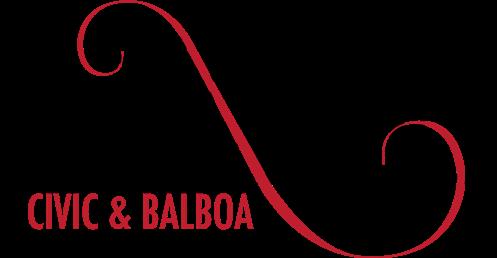



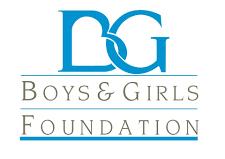
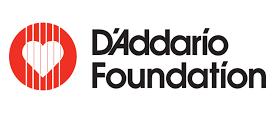


TheConrad.org · 858.459.3728 69 FOUNDATION & INSTITUTIONAL SUPPORT
TERRA LAWSON-REMER
San Diego County Supervisor, District 3
JOE LACAVA
TABLE OF CONTENTS
City of San Diego Councilmember, District 1
CORPORATE SPONSORS









CORPORATE PARTNERS


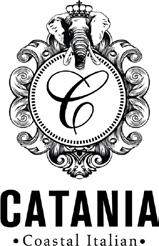












70 THE CONRAD | HOME OF LA JOLLA MUSIC SOCIETY · 2023-24 SEASON
CORPORATE SUPPORT
JOIN OUR FAMILY

For more than 50 years, La Jolla Music Society has nurtured a love of music by keeping one vision in mind: To present diverse programs of great music performed by the best musicians in the world. Today, that vision has reached beyond the intimate beauty of the chamber music ensemble and into new and diverse offerings such as orchestras, jazz ensembles, dance companies, renowned speakers, and robust education programs.
This impressive growth has been carefully conducted by an active and highly committed volunteer board of directors and dedicated staff. But most importantly, La Jolla Music Society’s progress has been sustained by the generosity of the community and ticket buyers.
TheConrad.org/donate

To make a donation by phone or if you are interested in sponsoring an artistic or education program, please contact Ferdinand Gasang, Director of Development, at 858.526.3426 or FGasang@TheConrad.org

TheConrad.org · 858.459.3728 71
...WITH A GIFT TODAY!
TABLE OF CONTENTS


2019 NINE-TEN SummerFest Program Ad.pdf 1 05/29/2019 9:55:32 AM

TheConrad.org · 858.459.3728 73
74 THE CONRAD | HOME OF LA JOLLA MUSIC SOCIETY · 2023-24 SEASON
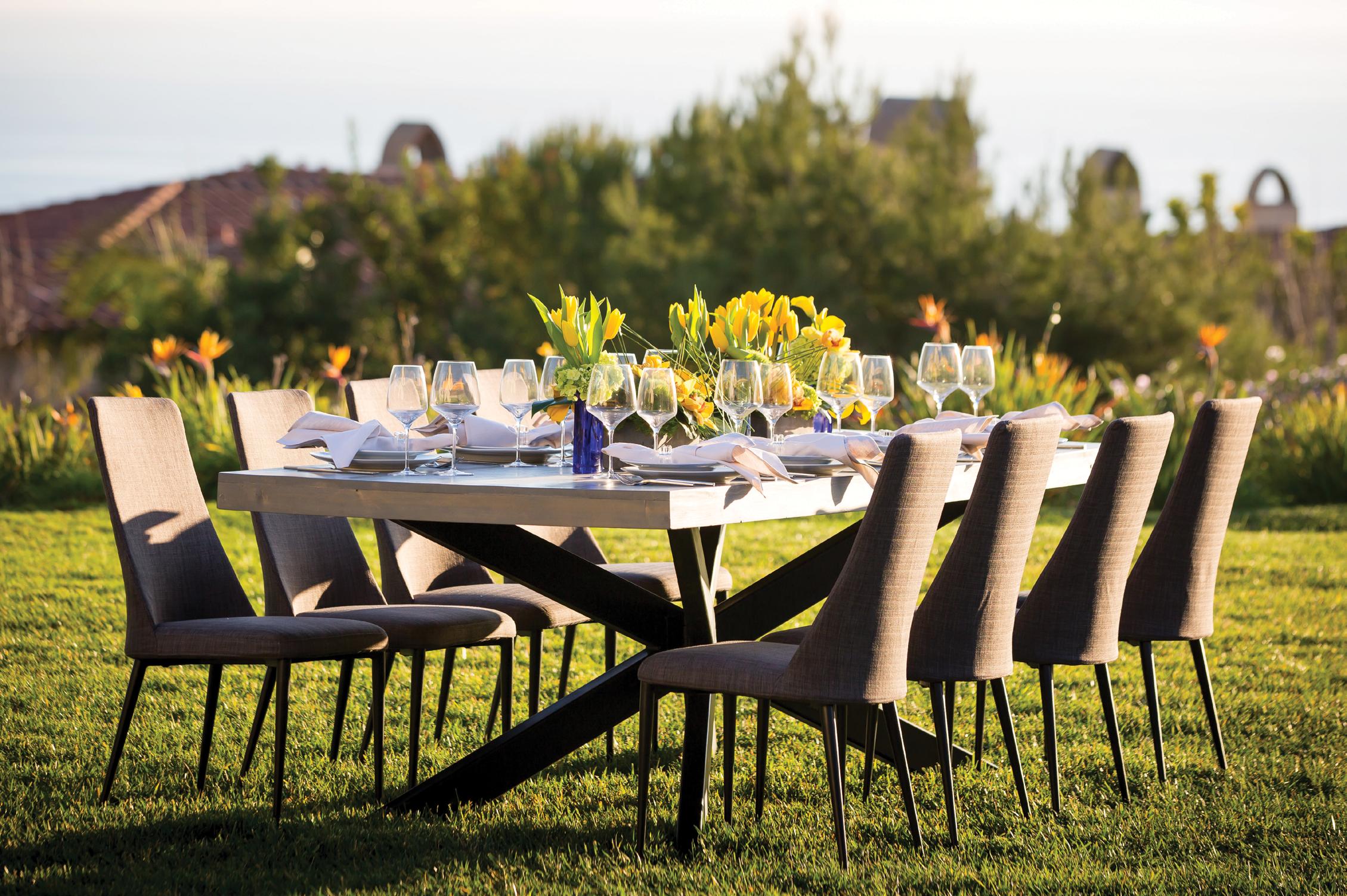
TheConrad.org · 858.459.3728 75 bright.com • 858.496.9700 Proud Supporter of the La Jolla Music Society Los Angeles • West Los Angeles • Santa Barbara • Orange County • San Diego Palm Springs • San Francisco • Sonoma • Saint Helena • Healdsburg • Phoenix
Tables to Tents QUALITY SERVICE EXPERIENCE INNOVATION
Chairs to China Linens to Lighting
The ResMed Foundation is pleased to support your excellent programs in musical arts education.
Board of Trustees
Edward A. Dennis, PhD Chairman
Mary F. Berglund, PhD Treasurer
Peter C. Farrell, PhD, DSc Secretary
Charles G. Cochrane, MD
Michael P. Coppola, MD
Anthony DeMaria, MD
Sir Neil Douglas, MD, DSc, FRCPE
Klaus Schindhelm, BE PhD
Jonathan Schwartz, MD
Kristi Burlingame Executive Director
76 THE CONRAD | HOME OF LA JOLLA MUSIC SOCIETY · 2023-24 SEASON
Foundation 7514 Girard Avenue, Suite 1-343 La Jolla, CA, USA, 92037 Tel 858-361-0755 ResMedFoundation.org

TheConrad.org · 858.459.3728 77
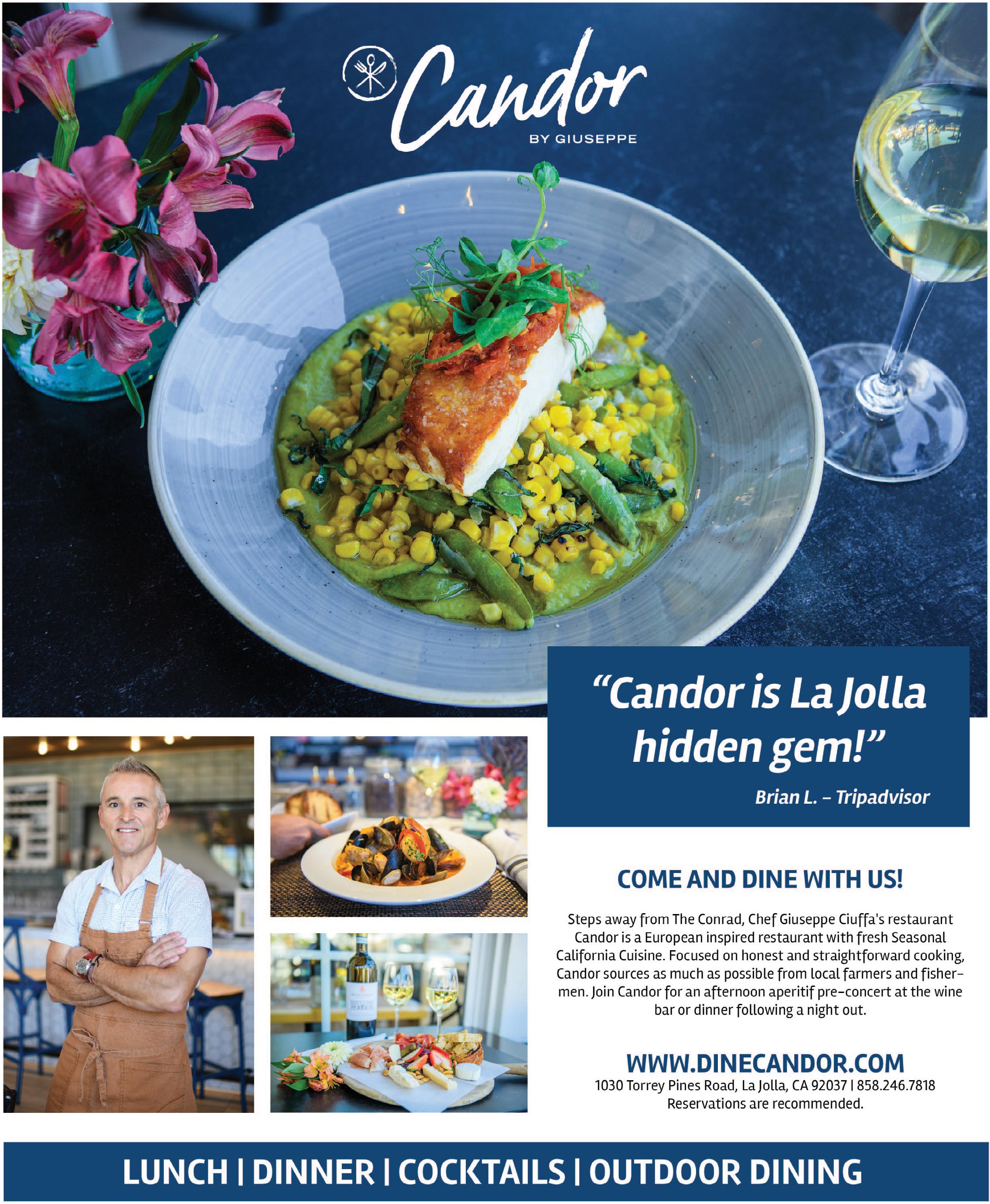
"Candor is La Jolla's hidden gem!"
Brian L. — Tripadvisor
78 THE CONRAD | HOME OF LA JOLLA MUSIC SOCIETY · 2023-24 SEASON

TheConrad.org · 858.459.3728 79
COMING UP...
HERBIE HANCOCK
THURSDAY, APRIL 18, 2024 • 7:30 PM
Jazz Series
Balboa Theatre
DAYRAMIR GONZÁLEZ* & HABANA enTRANCé*
FRIDAY, APRIL 19, 2024 • 6 PM & 8:30 PM
Concerts @ The JAI
HIROMI’S sonicwonder*
SATURDAY, APRIL 20, 2024 • 7:30 PM Jazz Series
HIROMI: THE PIANO QUINTET
FEATURING PUBLIQUARTET*
SUNDAY, APRIL 21, 2024 • 3 PM
ProtoStar Innovative Series
YEFIM BRONFMAN, piano
FRIDAY, APRIL 26, 2024 • 7:30 PM Piano Series
MAY
KAKI KING*
SATURDAY, MAY 4, 2024 • 10 AM & 11:30 AM
ConRAD Kids Series
The JAI
JUNCTION TRIO
CONRAD TAO, piano; STEFAN JACKIW, violin; JAY CAMPBELL , cello
SUNDAY, MAY 5, 2024 • 3 PM
Revelle Chamber Music Series
COMMUNITY ARTS OPEN HOUSE
SATURDAY, MAY 11, 2024 • 1 PM
Free Community Event
The Conrad
BALLETS JAZZ MONTRÉAL*
DANCE ME
WEDNESDAY, MAY 15, 2024 • 7:30 PM
Dance Series
Civic Theatre
PABLO FERRÁNDEZ*, cello
THURSDAY, MAY 16, 2024 • 7:30 PM
Recital Series
CHARLES McPHERSON & FRIENDS
Featuring John Beasley and The Next Generation*
SATURDAY, MAY 18, 2024 • 6 PM & 8:30 PM
Concerts @ The JAI
JIJI*, guitar
SUNDAY, MAY 19, 2024 • 3 PM Discovery Series
TERRY VIRTS*
How to Astronaut
THURSDAY, MAY 23, 2024 • 7:30 PM Speaker Series
BRUCE LIU*, piano
FRIDAY, MAY 31, 2024 • 7:30 PM Piano Series
JUNE
LARRY & JOE*
SATURDAY, JUNE 1, 2024 • 6 PM & 8:30 PM
Concerts @ The JAI
CHRIS THILE
FRIDAY, JUNE 7, 2024 • 7:30 PM Global Series
THE CHARLES McPHERSON QUINTET*
SUNDAY, JUNE 9, 2024 • 5 PM & 7:30 PM
Concerts @ The JAI
*LJMS debut
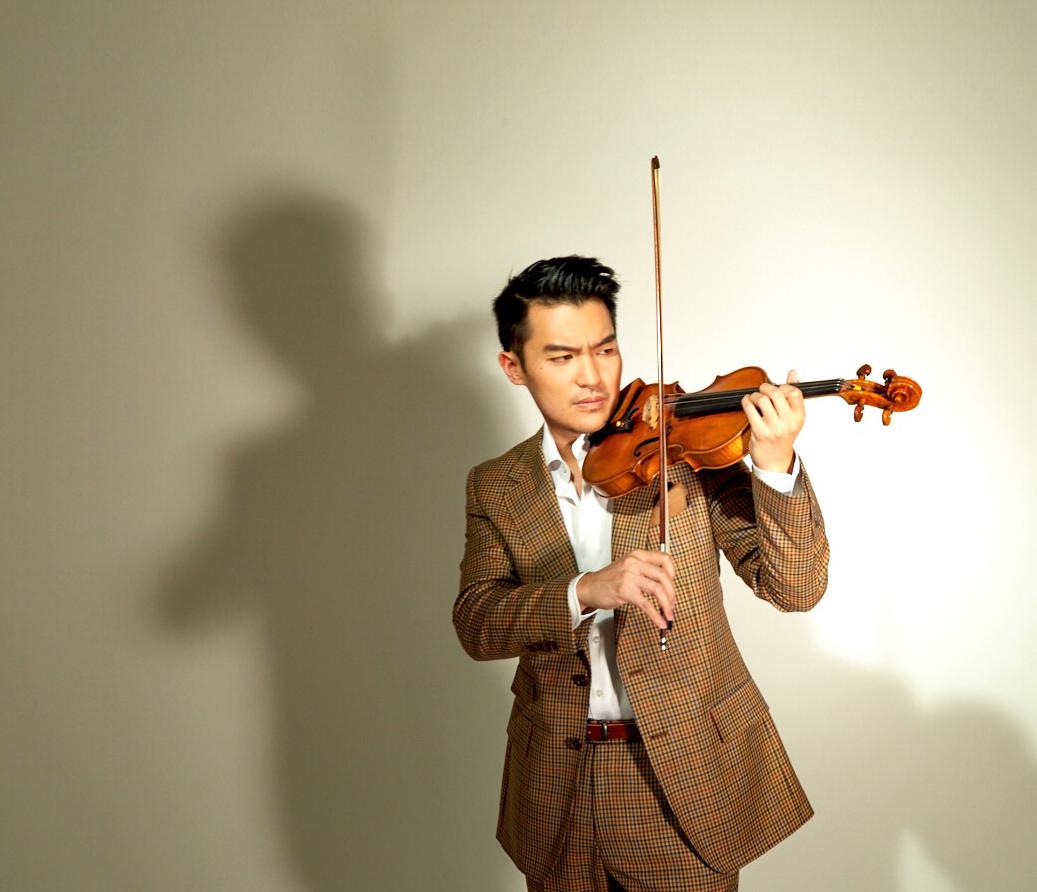
80 THE CONRAD | HOME OF LA JOLLA MUSIC SOCIETY
TheConrad.org · 858.459.3728 Ray Chen
MINI FESTIVAL
JAZZ PIANO

























































































































